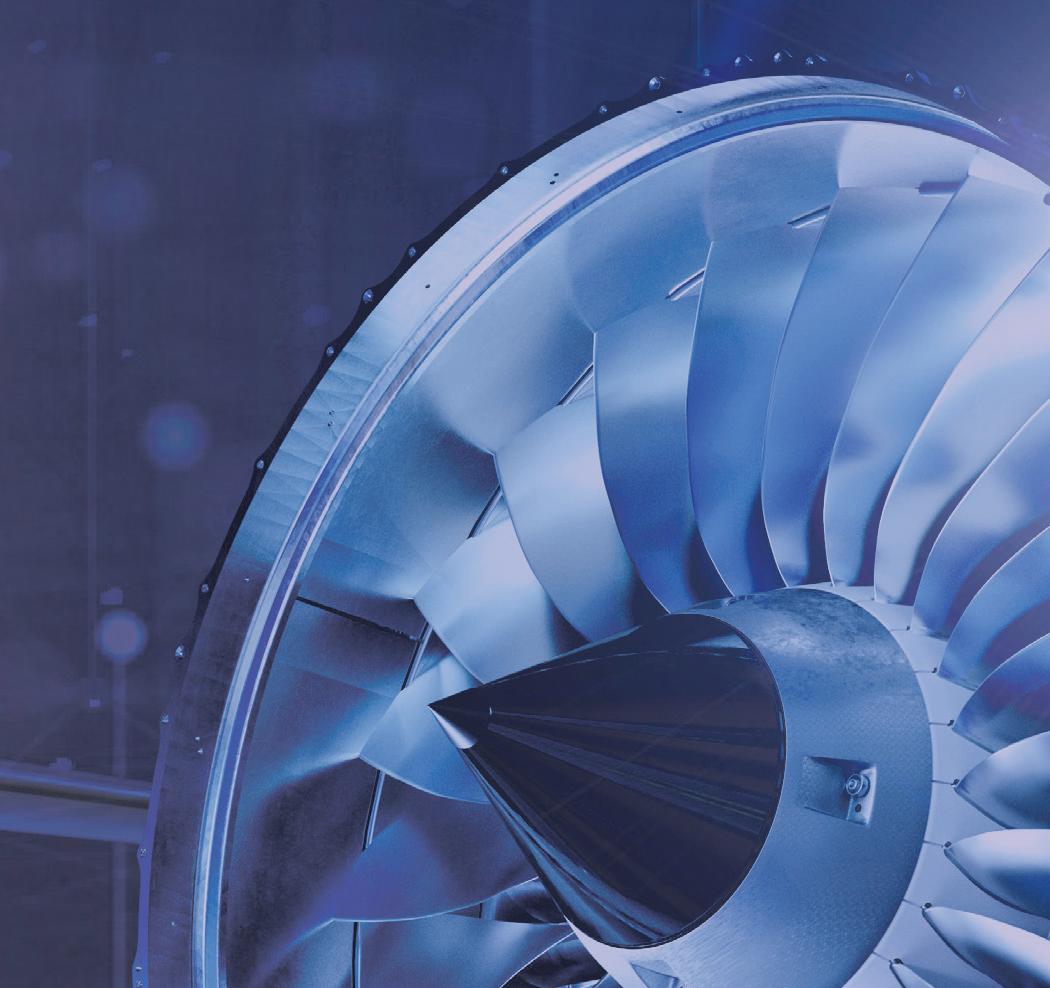








































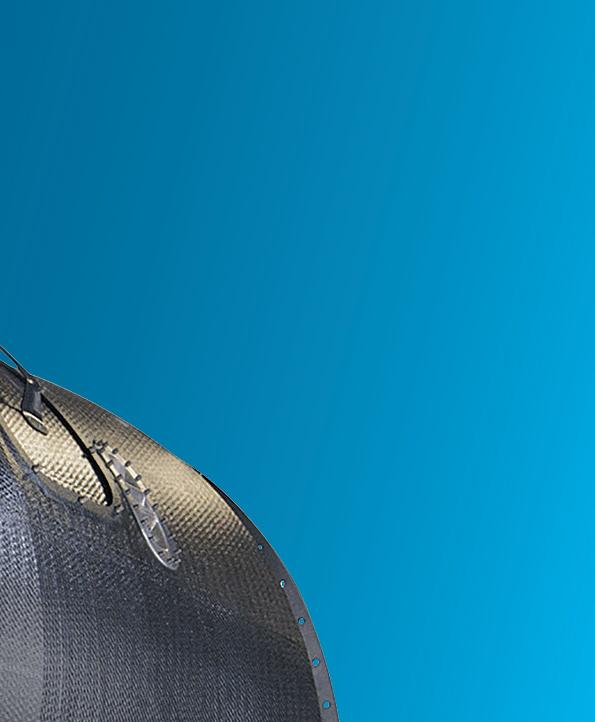
































 Smith
Smith
 Stanbury
Stanbury
The tremendous boost that the pandemic has given to private flying continues to power a whole host of business aviation companies to record breaking returns, with no immediate end to the bonanza in sight.
This sector really knows how to make the most of the good times. Right now, the sun is shining and hay is being made. The more cautious among us remember that no matter how good the present is, we’re in a cyclical industry. The big danger when everything is going really well, is that companies succumb to the temptation to over-extend themselves.
On the other hand, of course, if you don’t grow when the opportunity presents itself when are you going to grow? There is little doubt that NBAA 2022 is going to be an extremely positive event. People are in the mood to do business and to cement relationships with present and potential partners.



The CEOs and business founders we speak to in this issue are overwhelmingly of the opinion that 2022 will end up being one of their best years ever. And this is on top of what for many was a record-breaking 2021.

For our part, we are delighted to be holding our first networking event and party since the pandemic began at the 3NINE Club and Pool Bar, in the Rosen Plaza Hotel, on the evening of Wednesday 19th October. Places, as always, go first to our friends and supporters. If you are interested in attending contact Max or Roger. We look forward to seeing everyone at NBAA.
of

 ANTHONY HARRINGTON
ANTHONY HARRINGTON
Yearbook, BizAv Events and






Media Ltd.

Connecting every aircraft, everywhere Gogo’s leadership team on the company’s 5G offering and its Global LEO Satellite product

Nothing but the best George Mavros, founder and managing director of Skylink, on providing top-quality FBO, ground handling, and catering services in Cyprus

Clay Healey, the owner of AIC Title Service, on the current boom market in business aviation

Youngest fleet, best service
Nicholas Correnti, founder of Nicholas Air, on building the youngest fleet of aircraft in the industry
Richard Hekker, founder and CEO of OPES JET, talks about the company’s private membership jet club

Eve Laurier, VP of Marketing, Communications & Public Affairs at Bombardier, on the role of women in business aviation

David Helfgott, CEO of SmartSky Networks, on the approaching launch of SmartSky’s Air-to-Ground (ATG) network
Brian Allen, President, Aviation Maintenance Professionals, on running a top quality MRO service

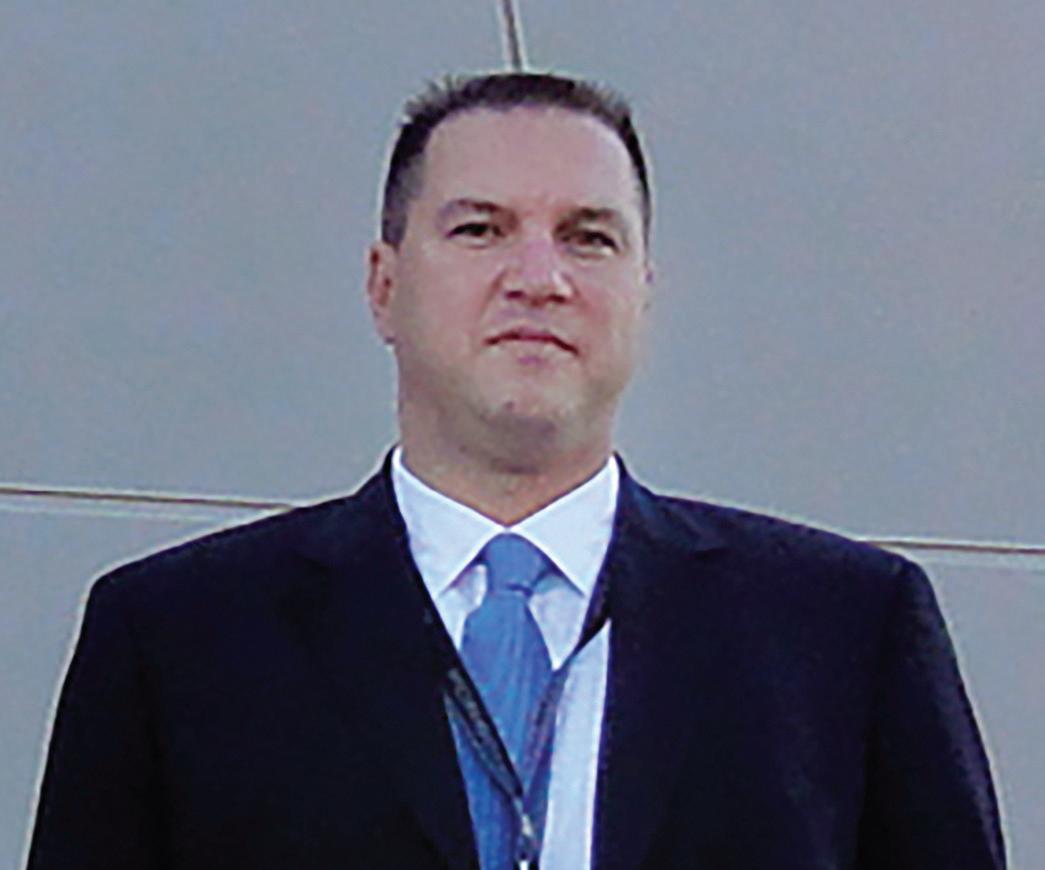
Mike Caflisch, Founder and Principal, Strategy1 Advisors, on bringing strategy development to a range of business aviation companies
Jared Eckler, CEO of Townsend Leather, and Sarah Eckler, Senior VP, Sales and Marketing, on moving beyond the pandemic
88 Comfort for passengers
Peter Landquist, VP Sales and Marketing at CTT Systems, on building humidifiers small enough for business jets
Gary Bosstick, President, JetBed, on what drove him to invent a supercomfortable bed for business jets
98 Home from home for helicopters
Mike Renz, President and CEO, Analar Corporation, on running a unique, dedicated helicopter FBO
Dawit Lemma, Founder and CEO of Krimson Aviation, talks to BAM about a period of dramatic growth
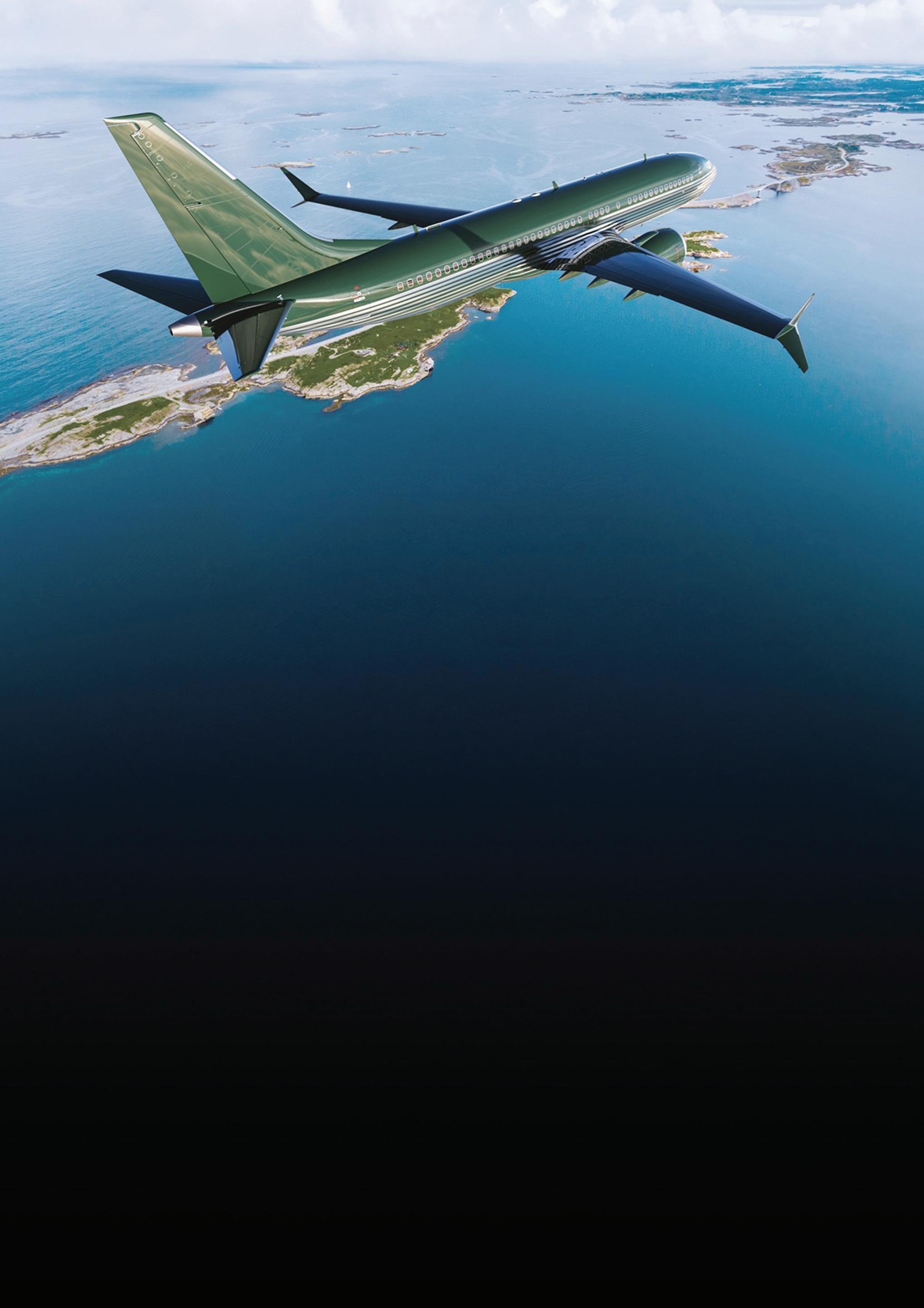
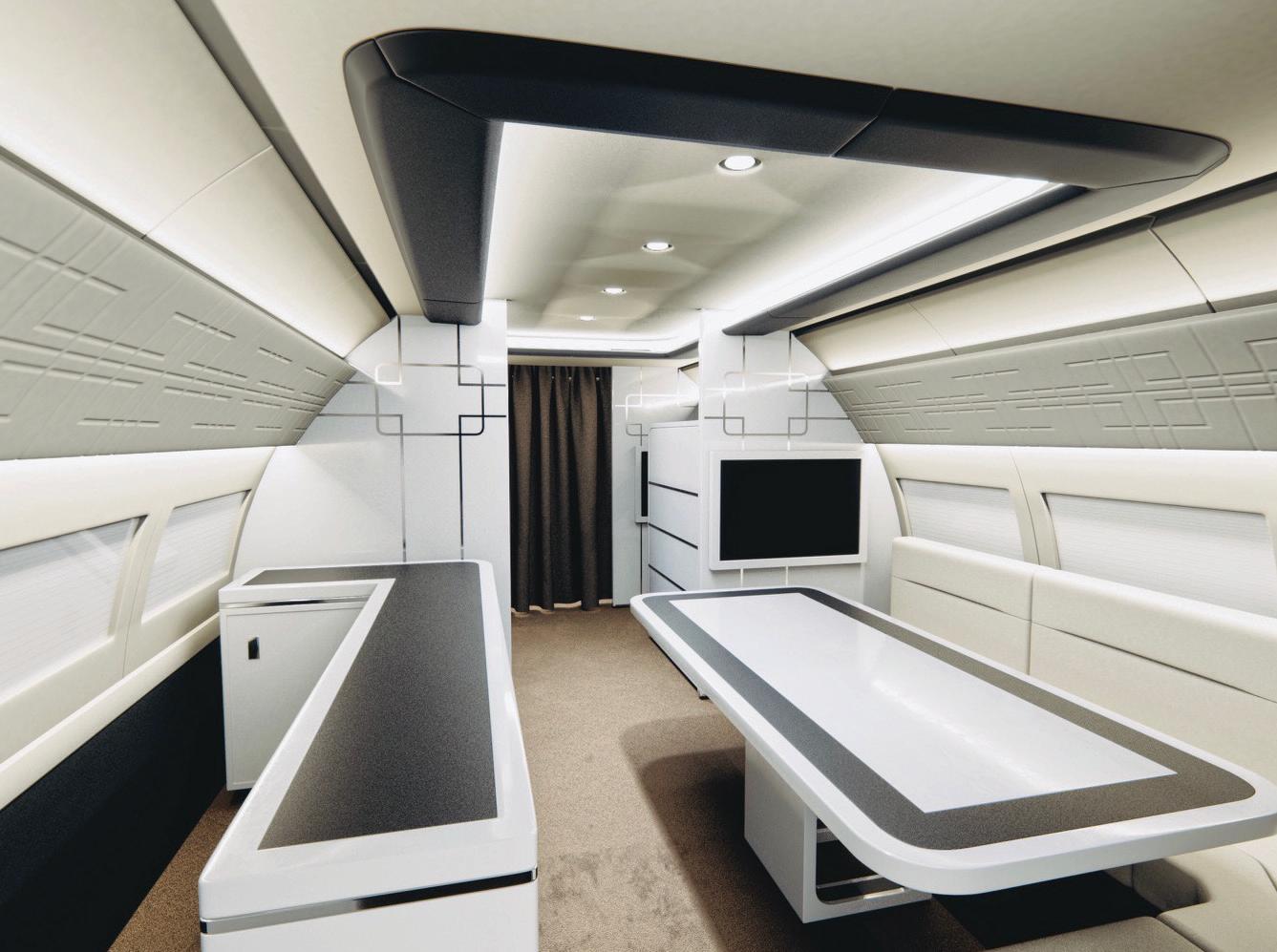











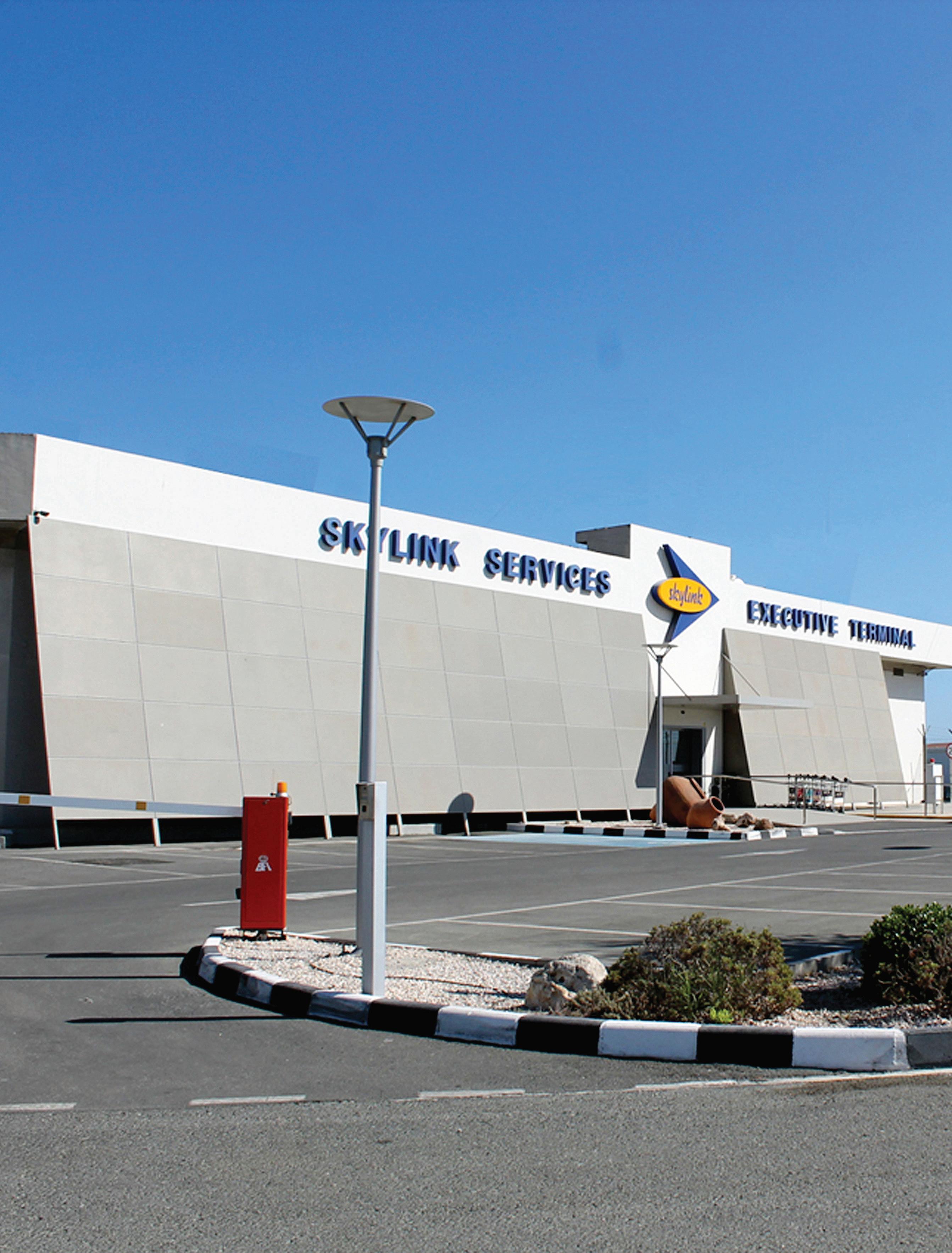











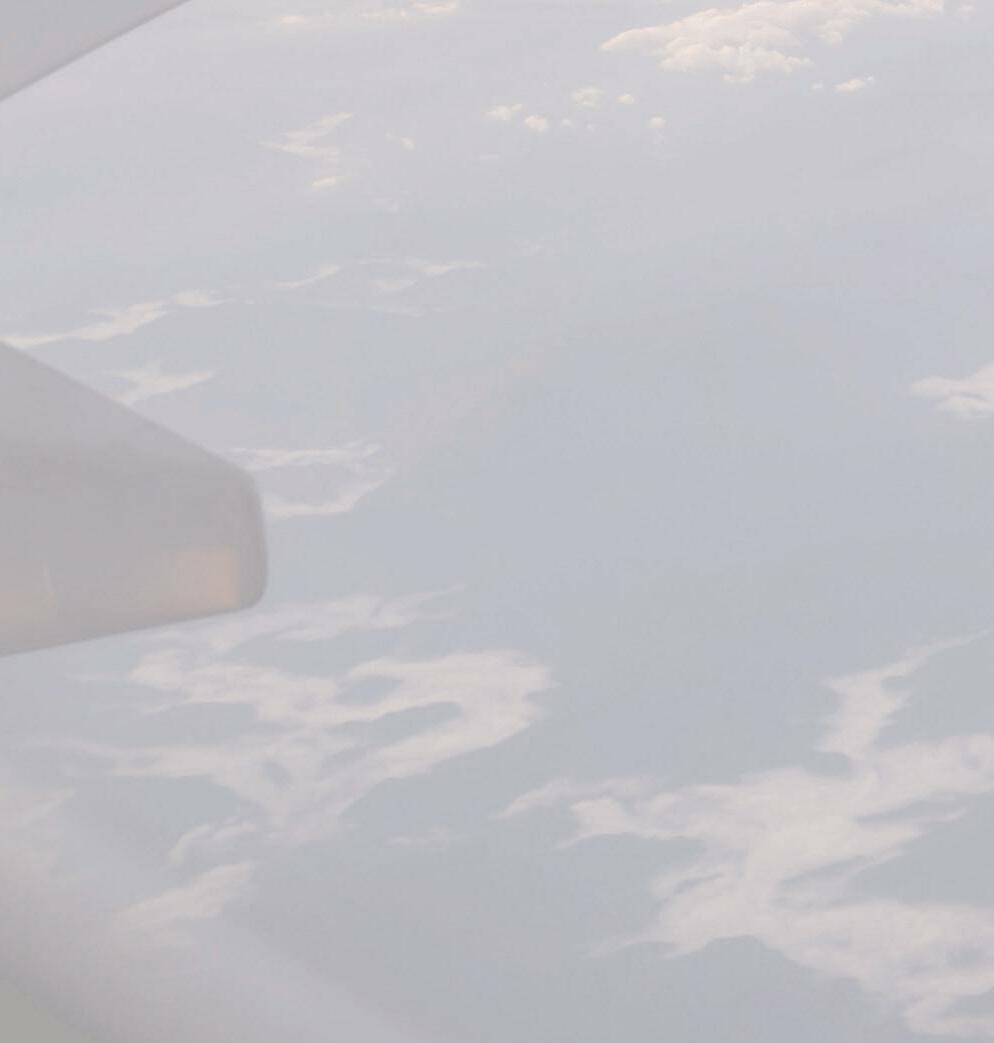



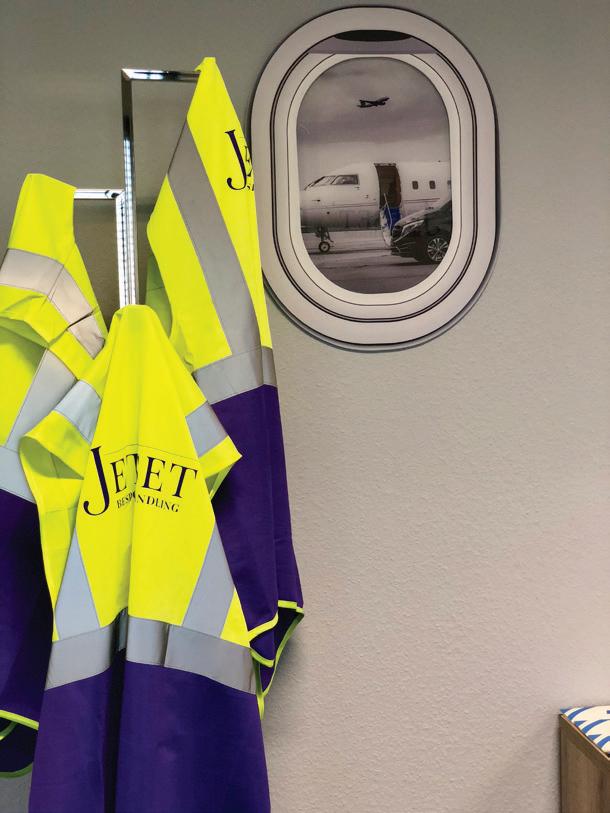
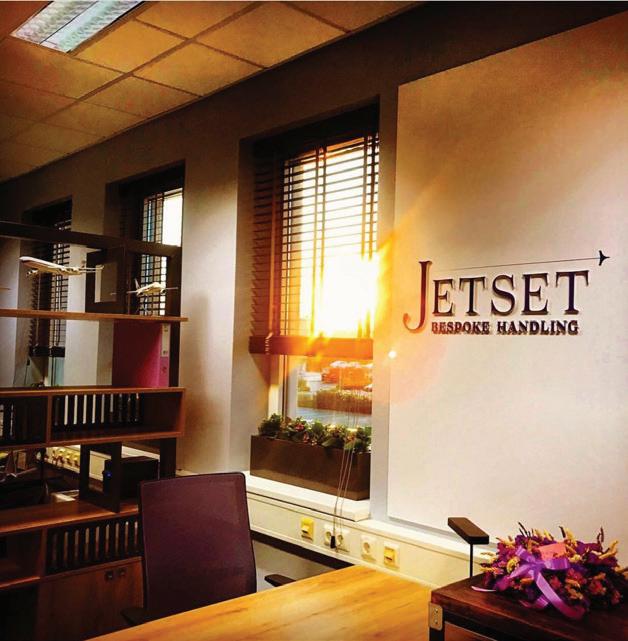

















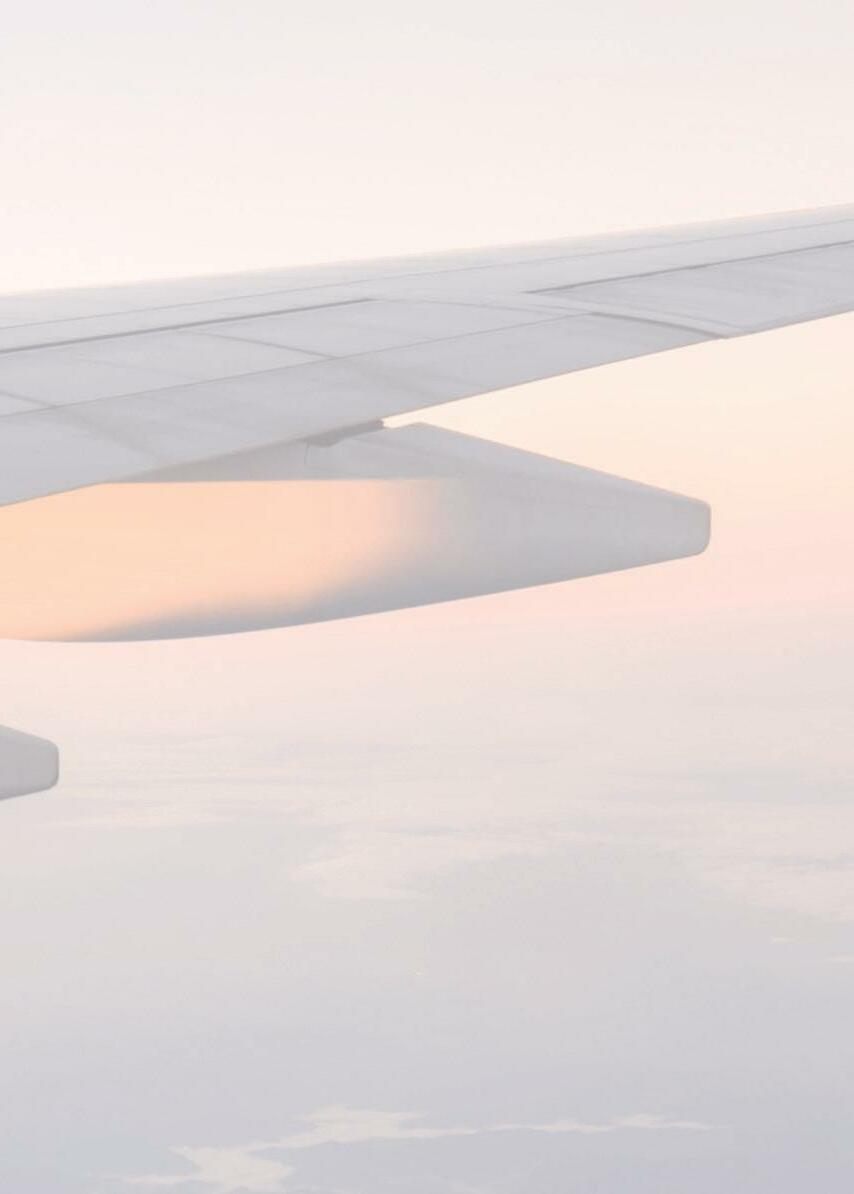



























































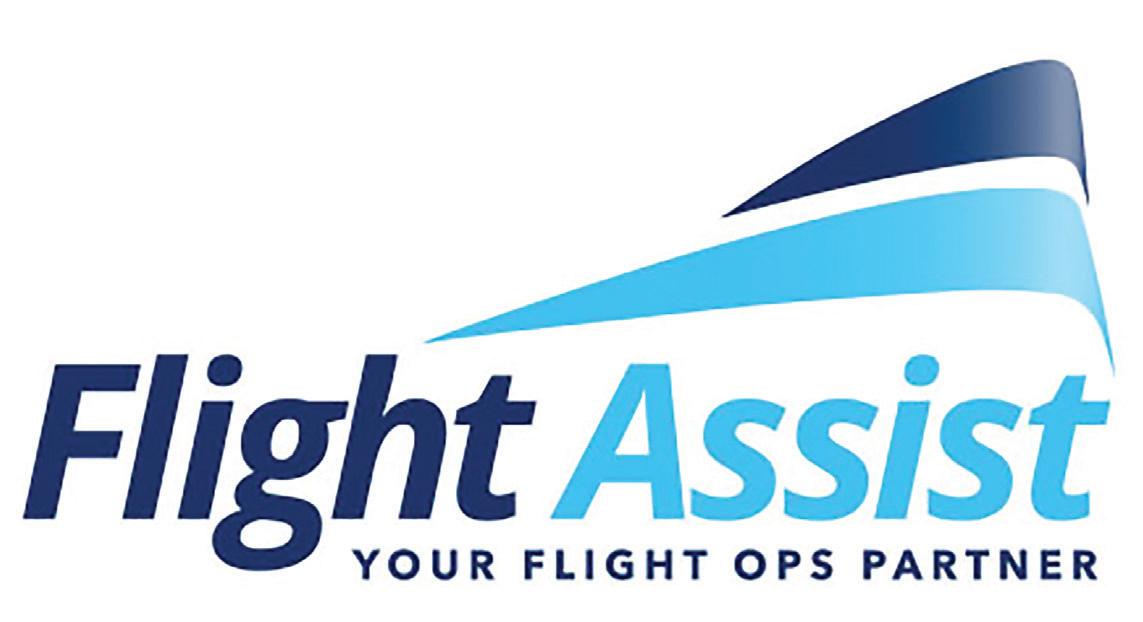








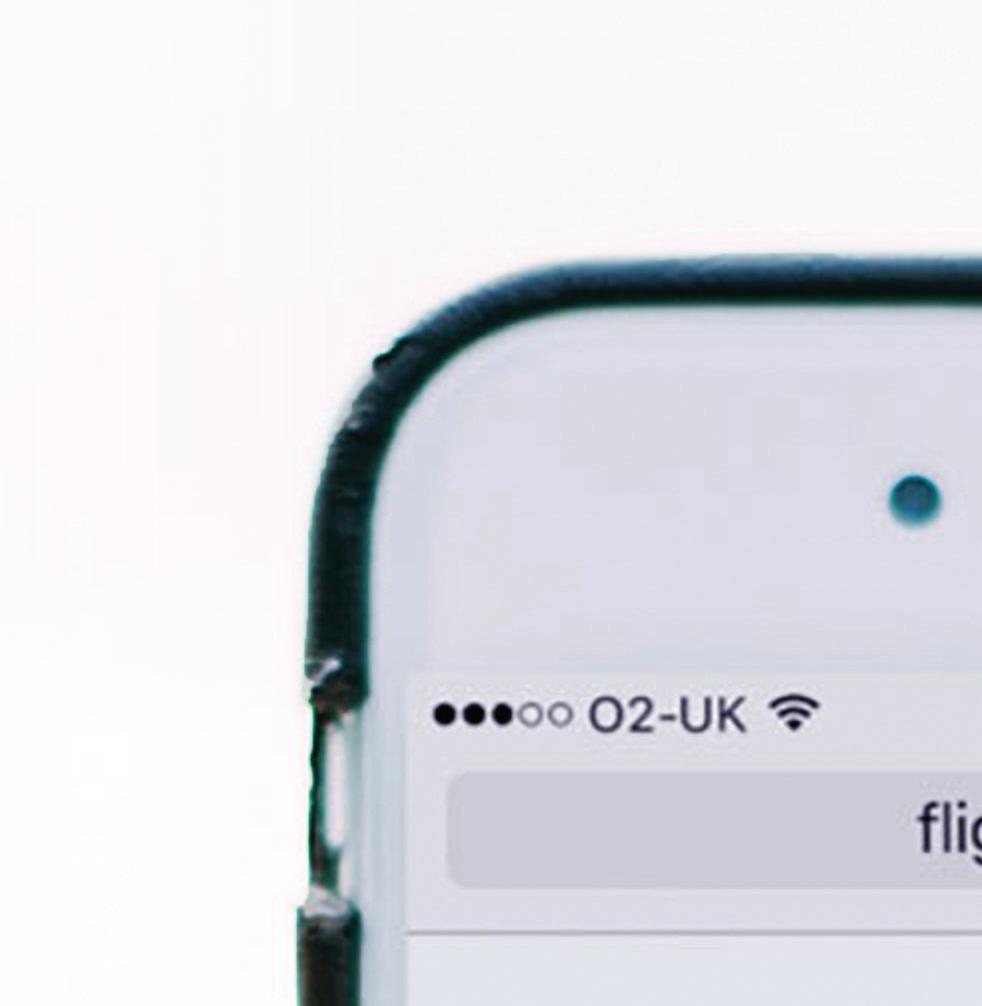






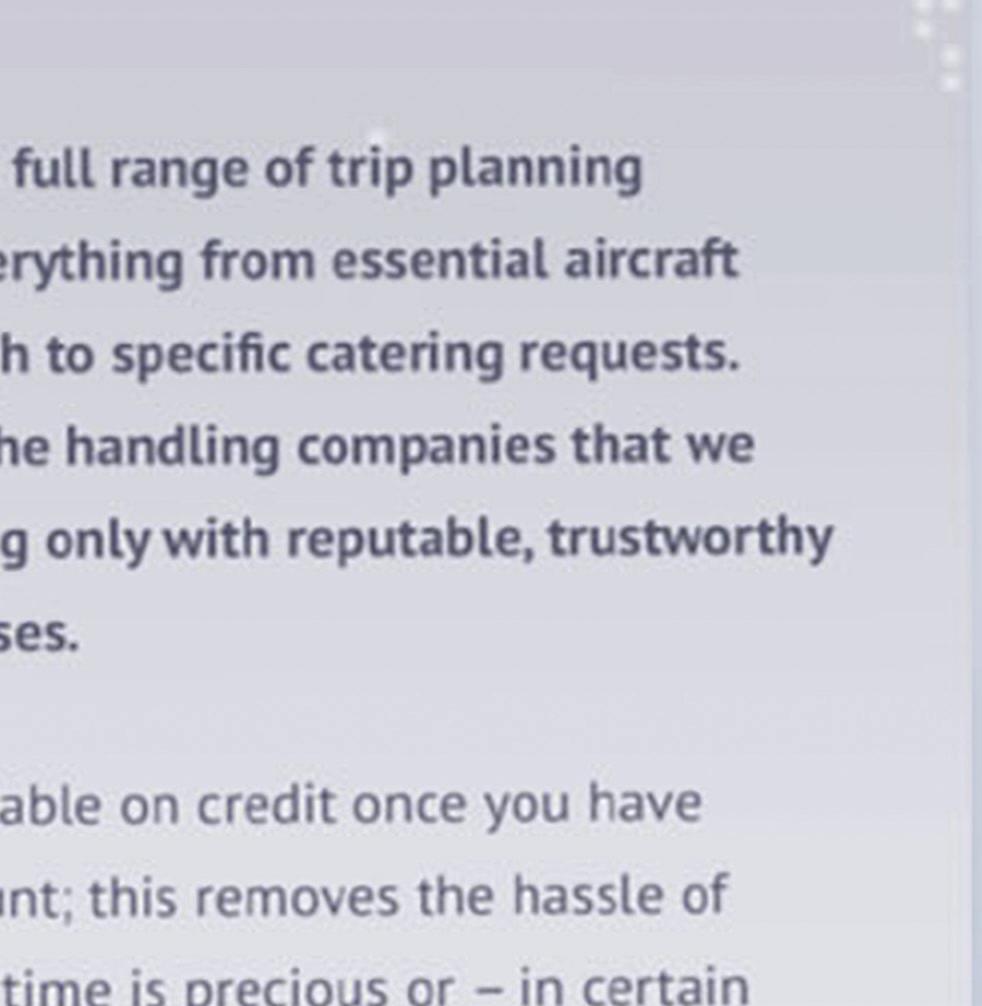









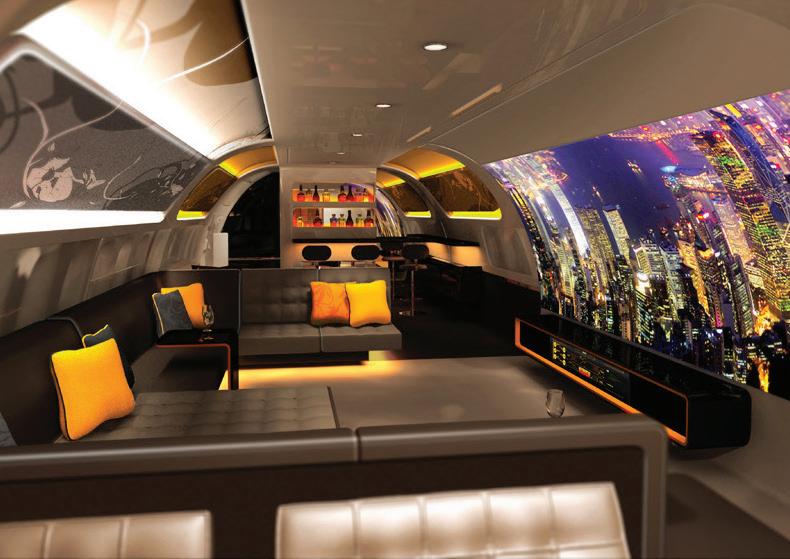





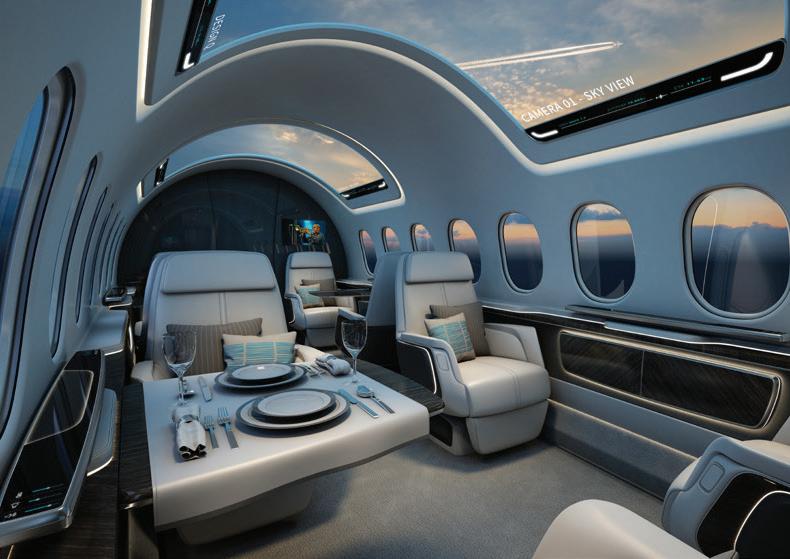

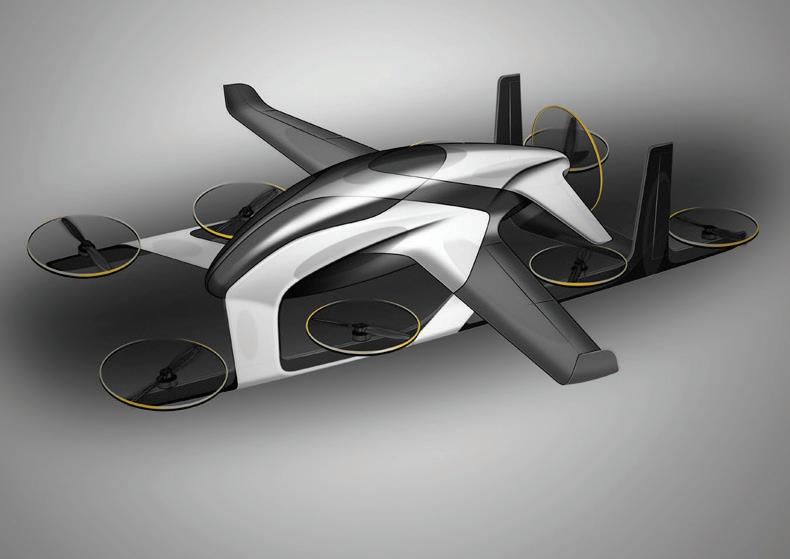
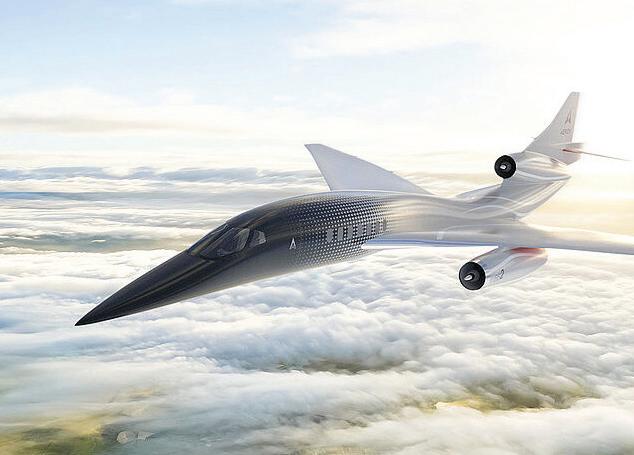




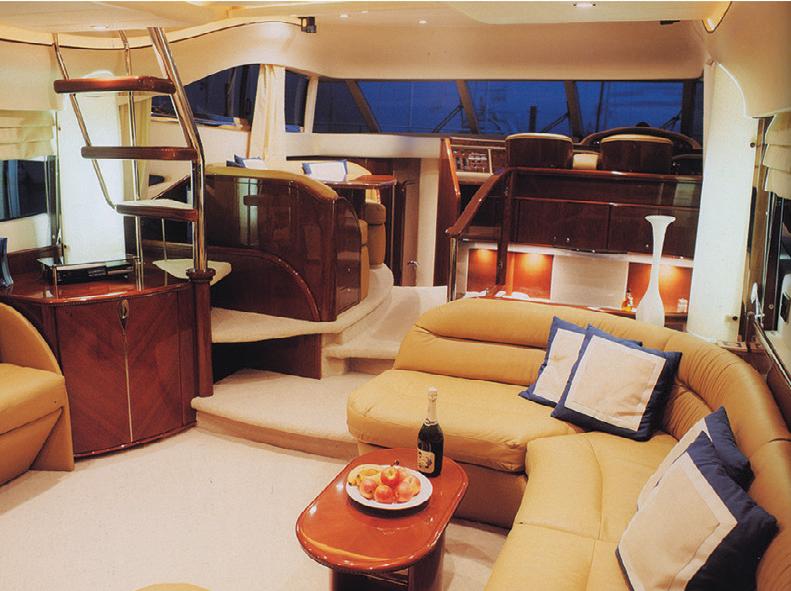

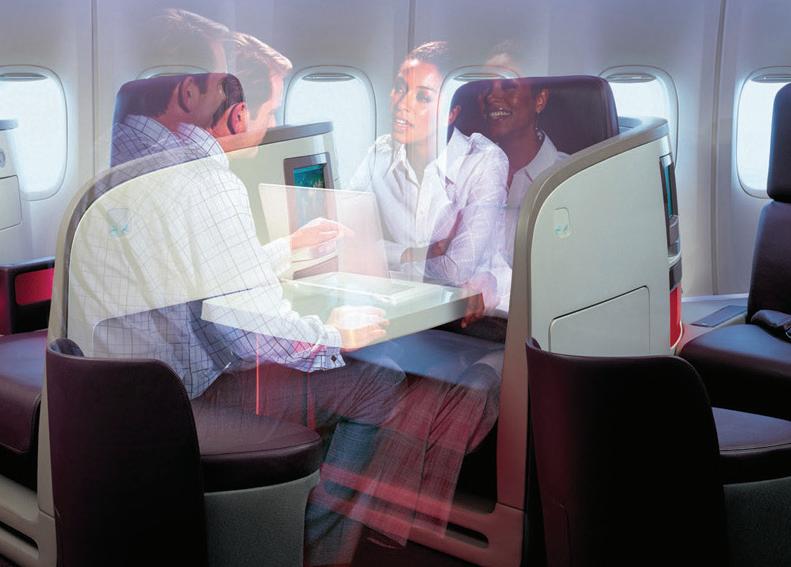


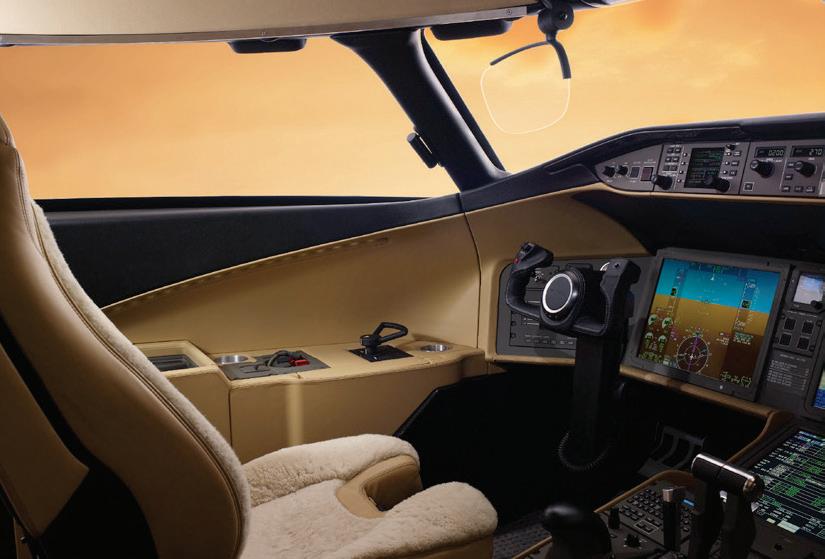

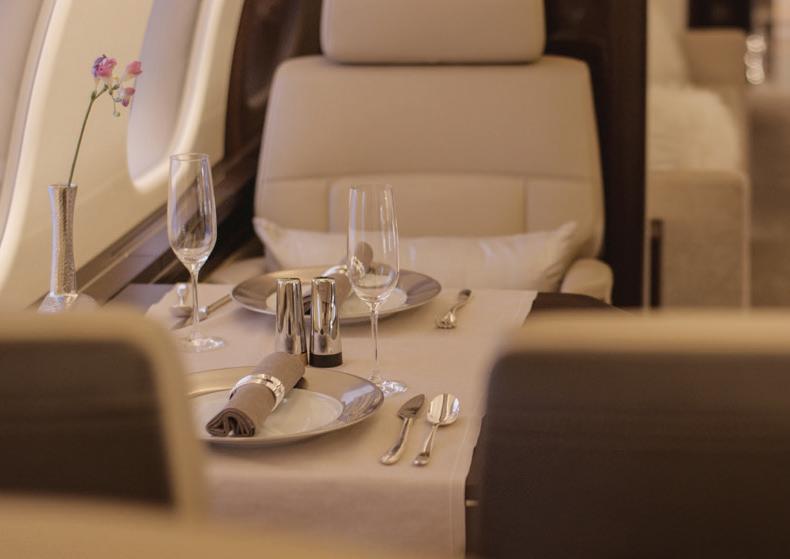
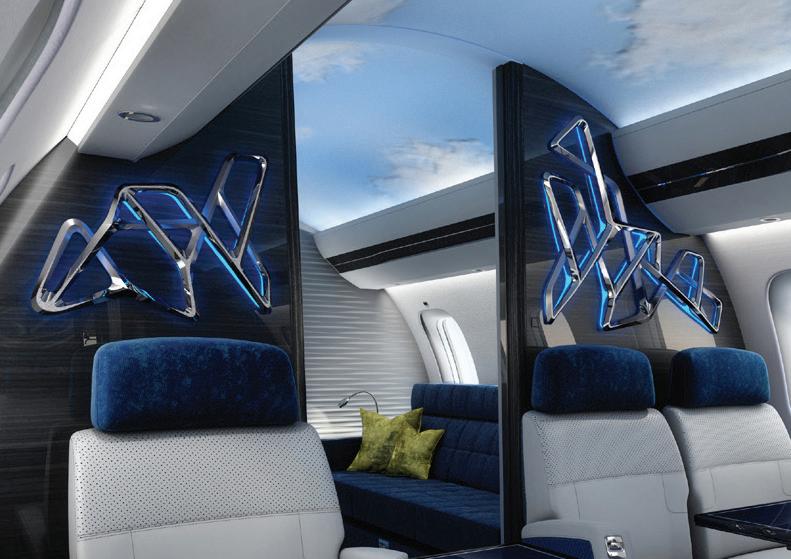






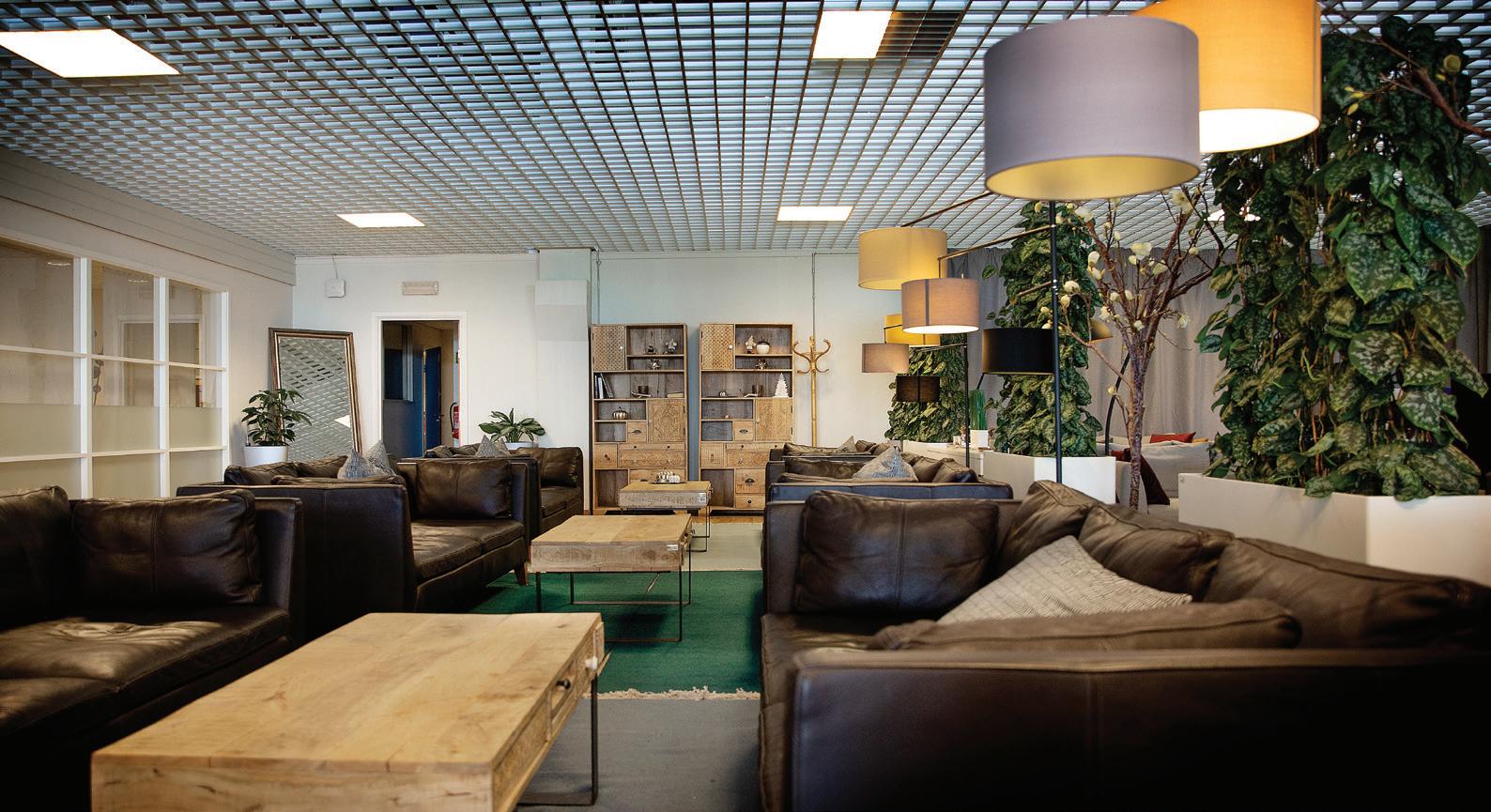
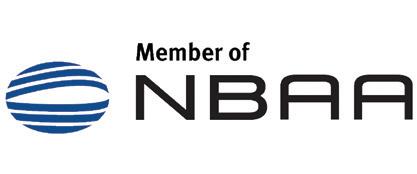






First


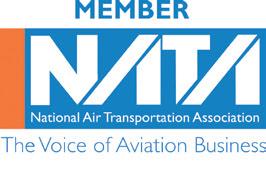
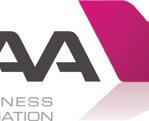



















Gogo’s leadership team talks to Anthony Harrington about the company’s 5G offering and its upcoming Global LEO Satellite product


For Gogo Business Aviation, 2022 has been one heck of a year. The company will complete its highly anticipated 5G network in October, while in May it became the first to announce a new global broadband service for business aviation. This will operate on a low-earth orbit (LEO) satellite network using a small electronically steered antenna.
That’s a long way of saying that Gogo is once again flipping the business aviation community on its head with new technology that will enable high-speed, low-latency connectivity on virtually any size business aircraft – anywhere in the world.
BAM spoke with three of Gogo’s senior leaders about how things are progressing on both fronts and what Gogo has planned for NBAABACE in Orlando.
Sergio Aguirre President and COO Gogo Business AviationAH: You and your team have been quite busy since the start of 2022. How are things progressing with Gogo 5G and your global broadband initiative?
Sergio Aguirre, President and COO: Our team has been incredibly busy the past few months – there are some big things taking shape here and I’ve never been more excited about Gogo’s future than I am today. We are going to celebrate the completion of our 5G network at NBAA in October, which is a momentous achievement for our team. At the same time, the global broadband system we announced at EBACE in May could end up being as meaningful and impactful internationally as our air-to-ground (ATG) systems have been in North America.
Unlike other providers, we’re focused on serving all of business aviation with our global broadband product, just
like we did with our ATG network in North America several years ago. We want to give everyone in business aviation the ability to have an exceptional broadband experience regardless of where or what size aircraft they fly. We’ll serve smaller aircraft such as large turboprops and light jets up to ultra-long range large-cabin jets, and every business aircraft in between.
AH: When we spoke with you back in February, the world was dealing with pandemic related supplychain issues impacting practically every industry, and you mentioned some of the challenges your team was tackling. How do things look for you today?
Dave Glenn, SVP – Customer Support: Despite a global pandemic that created an environment with several supplychain issues, our team has been able to overcome most of
 Melissa Hale SVP of Product and Marketing Gogo Business Aviation
Dave Glenn SVP of Customer Experience Gogo Business Aviation
Melissa Hale SVP of Product and Marketing Gogo Business Aviation
Dave Glenn SVP of Customer Experience Gogo Business Aviation
those challenges to get the 5G network built. They were tenacious at finding creative solutions to some very difficult issues and that effort paid off because our 5G network will be fully built and ready to provide nationwide coverage in the contiguous United States by the time NBAA takes place.


There has been an impact though. In August, the manufacturer of our 5G chip notified us of a new issue they’d encountered in late-stage testing which could delay ramping up the full production volume until mid-2023. We’re still working through that issue.

The good news for customers who want 5G is that they can install the AVANCE L5 with full 5G provisions today, including the MB13 (5G) antennas, and operate on our 4G network while they wait for the 5G (X3 LRU) next year. That means once the X3 is ready they can get it installed and they’ll begin getting 5G service.


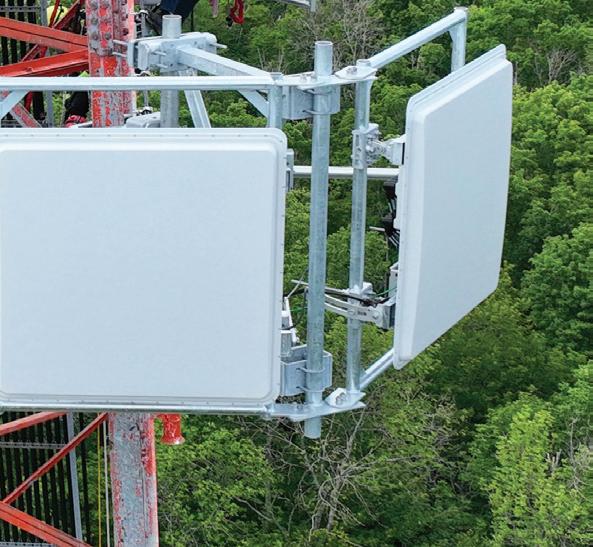







AH: Why would a customer want to install provisions (MB13 antenna and X3 tray) for 5G today when the full 5G system is not yet ready?
DG: The Gogo 5G provisions allow customers to take the greatest advantage of already scheduled down time. The 5G provision kit allows customers to get a significant portion
Idaho New York
Nevada



of their 5G installation completed now and positions them to take advantage of 5G once the X3 LRU is available. The 5G provisions will save aircraft downtime and additional expense when the full 5G system install occurs. It provides cost savings by avoiding the purchase of two sets of antennas (the L5 antennas and the 5G antennas) as well as the structural analysis and installation that would be necessary for the temporary installation of the L5 antennas.





AH: Speaking of the 5G network, it’s been fascinating to watch the progress you’ve made week to week with the map you publish on your website. Wasn’t that a little risky?
DG: It was a risk, especially in the supply-chain restricted environment we’ve discussed. For us it’s all about trust and credibility, and it was important that we were transparent with our customers and partners regarding the 5G network construction. No other connectivity provider has been that open about their network, not even the wireless carriers, but we were confident our team would deliver. To get an entirely new network built on a nationwide scale in less than a year is remarkable. There’s been a lot of buzz generated from those weekly progress updates and it’s been fun watching the network come to life. You can find the latest map here: https://www.business.gogoair.com/5G
“ Our 5 G network will be fully built and ready to provide nationwide coverage in the contiguous United States by the time NBAA takes place.”
Dave Glenn, SVP of Customer Experience

AH: What has allowed Gogo to be able to be so productive despite the challenges the past two years have presented?
SA: I would say there are three elements to our secret sauce. First and foremost we have to credit our people. We have an incredible team of people who live our core values every day, and we are focused exclusively on serving business aviation, so we’re not distracted by other priorities.
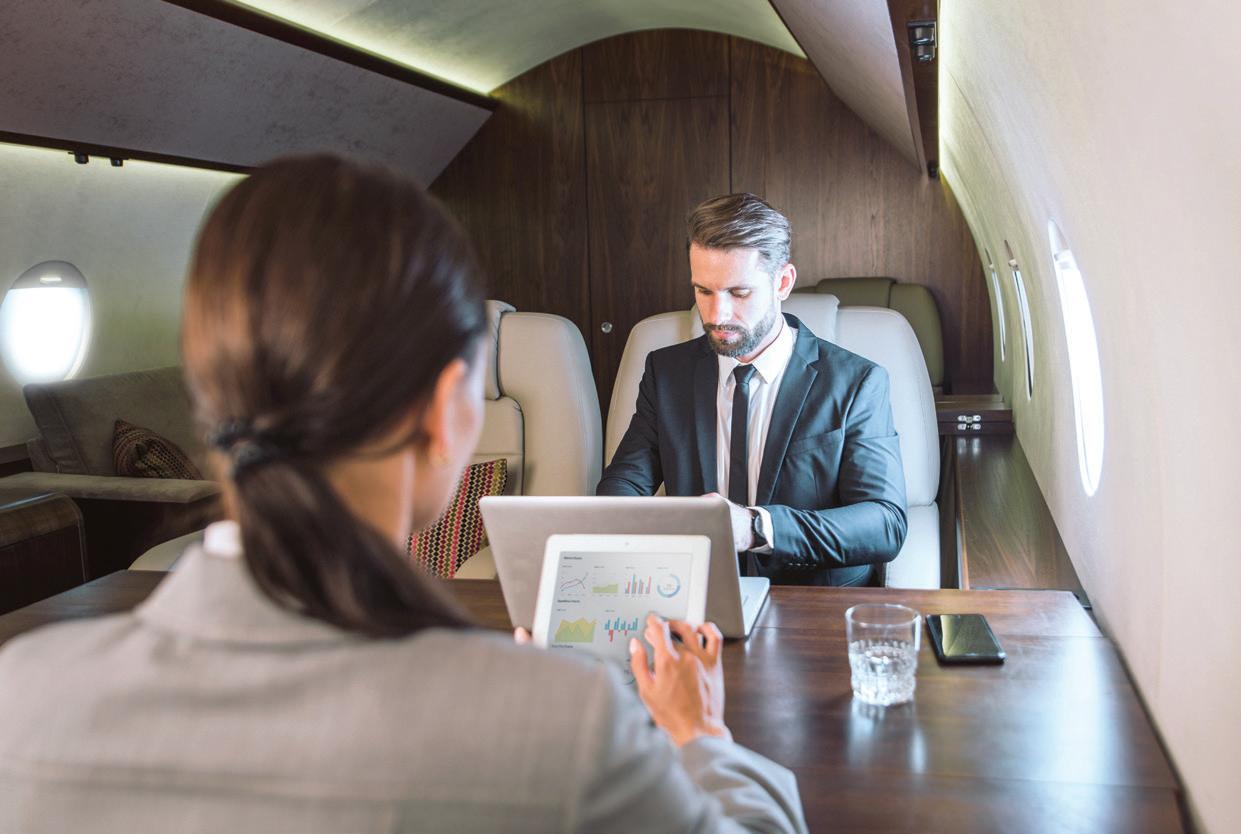
The second is that we talk to, and get a lot of feedback from, the OEMs, our dealers, and our customers. We listen intently to what they tell us, and we implement their suggestions as often as possible. We have both dealer and customer advisory councils that we meet with regularly and they give us honest feedback that sometimes is tough to hear, but we’re much better today because of those conversations over the years. In other words, we let the market tell us what it wants, and we build and innovate with that perspective in mind.
And third, we have never tried to emulate what someone else is doing. Instead, we’re constantly looking for how to do things differently, to disrupt the industry and create a better experience for our customers. I like to think of it this way: Whatever others say can’t be done is what we try to do.

AH: Can you give us an example of feedback you’ve received and how it was used by your team?




Melissa Hale, SVP – Product and Marketing: A great example is our fuselage-mounted antenna that will connect to the LEO network. We wanted it to fit on a super-light jet or turboprop, so it needed to be small. There was a lot of debate internally about how best to do that: do we make it a little wider, a little longer, a little taller? There were several options we considered and instead of making those decisions in a vacuum, we reached out to the OEMs and some of our customer council and dealer council members. We asked what was most important for them in terms of installation, aesthetics, performance, and any other factors we should consider. We didn’t finalise the design until we had their collective input.
AH: What will the global broadband system require and how will Gogo’s solution differ from the GEO satellite systems on the market today?

MH: In addition to being smaller and less expensive to install and operate, it will also take much less time to install because our LEO service will leverage the AVANCE platform. Existing AVANCE customers will only need to add the fuselage-mounted ESA and run power to the antenna and an ethernet cable to the AVANCE LRU. New customers will need to install an AVANCE system along with the antenna. That’s all there is to it.

constantly looking for how to do things differently, to disrupt the industry
create a better experience for our customers.”
Aguirre, President and
At Citadel Completions, we are focused on customized, design-centered interior completions of large aircraft. As our client, you are under the personalized care of our experienced team, without a huge, corporate bureaucracy to complicate the process. We’ll deliver your vision while exceeding the most stringent industry standards, in less time.










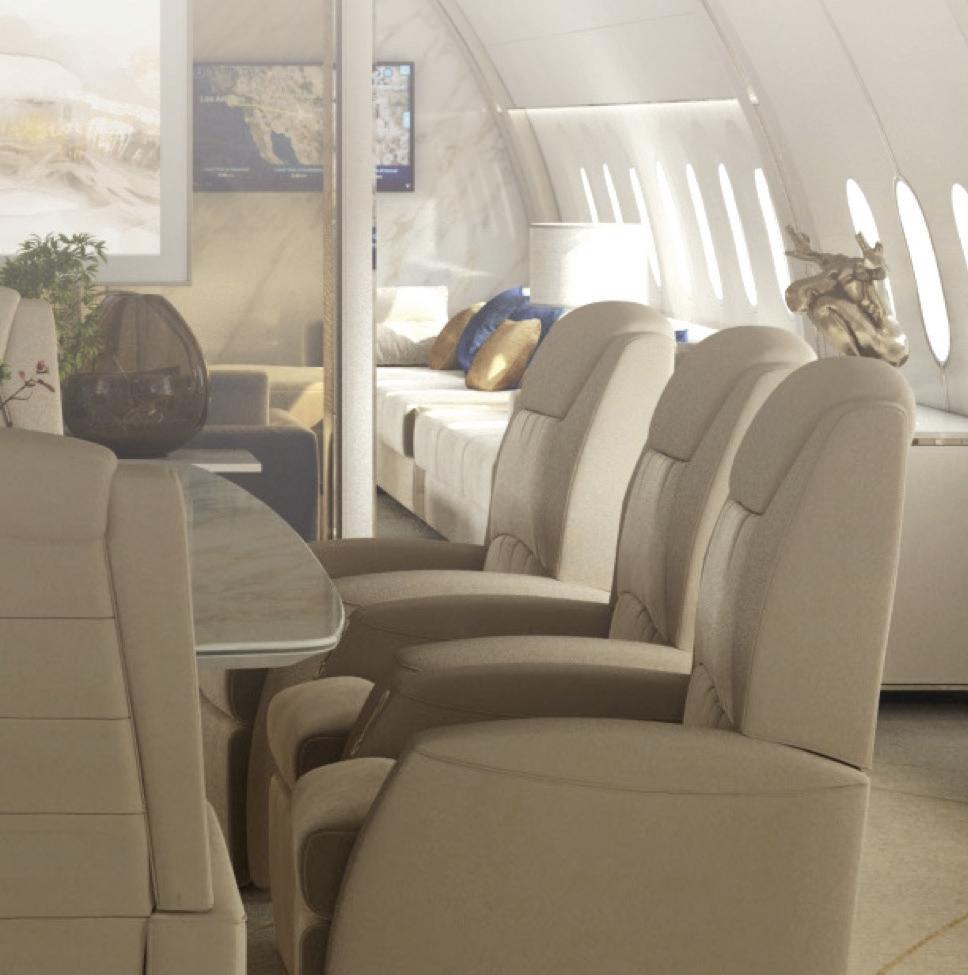
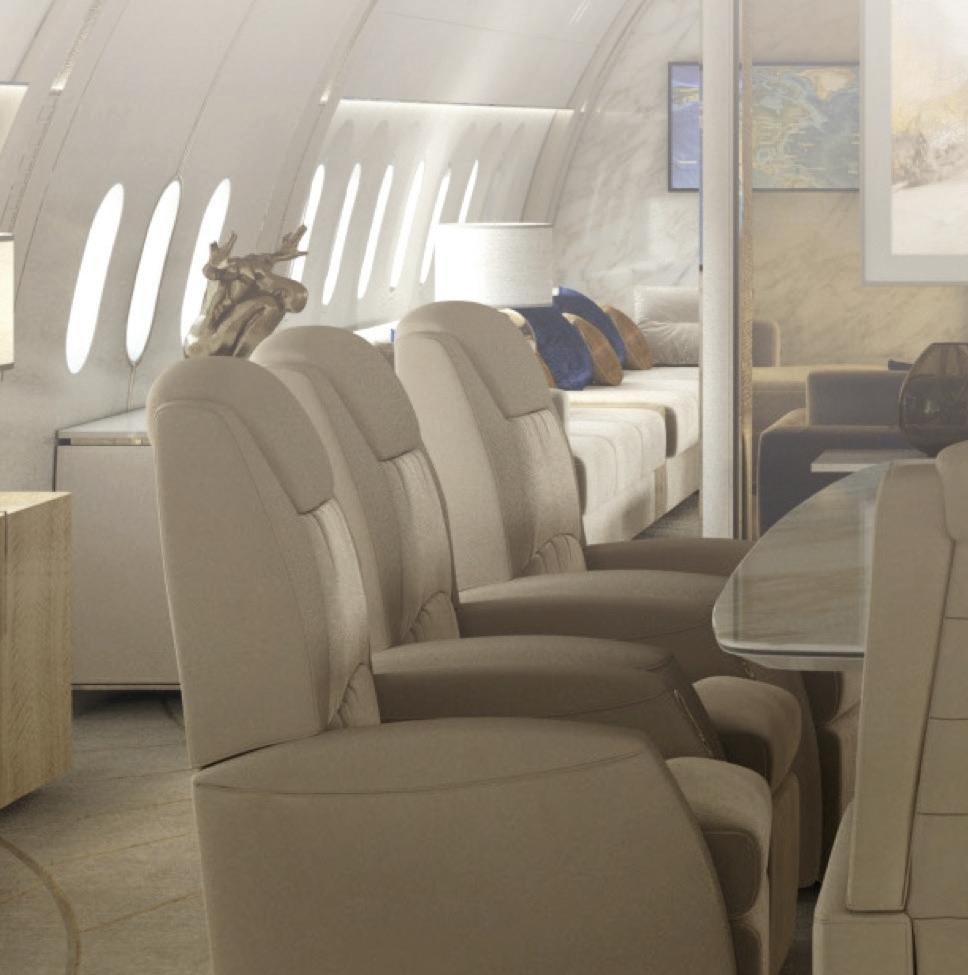


AH: Is it accurate to say AVANCE is at the heart of your solutions?



SA: That is correct. We specifically designed AVANCE so customers could easily and effectively add additional features, functionality, and capacity to the system. We saw this wave of increased demand for connectivity coming several years ago. That is when we started building AVANCE with the strategic approach of being able to add new networks, and for upgrades to be done with minimal cost and little to no downtime.
Once you have AVANCE installed in your aircraft, upgrading to 5G or global broadband is quite simple. For 5G, if you have AVANCE L5 you literally add one small box and replace the antennas. For global broadband, all you do is add the antenna, run power to the antenna, and ethernet to the box.
AH: Why did Gogo choose to partner with OneWeb and Hughes for global broadband?


SA: After careful evaluation, we believed OneWeb and Hughes were best suited to serve business aviation, with
many strengths and the necessary expertise. They are financially strong, have flexible offerings and can scale with us as we grow.
But I would also add that in the early stages we told them that if we wanted a winning system, we needed an antenna that was no bigger than some specific parameters we provided. In the traditional way of going to market with GEO satellite providers, that would have never been possible because the network operator would have said no – these are the design requirements, and you have to build the antenna to meet them.
Instead, we did it the way Gogo does everything – it was a team effort. In addition to building our ESA, Hughes also provides two key elements to the OneWeb network: they provide the modem technology and the ground-based equipment. By sitting down together, we were able to overcome obstacles that traditionally could only be addressed by one leg of the stool. We did it as a team, with all three legs of the stool working together. |BAM







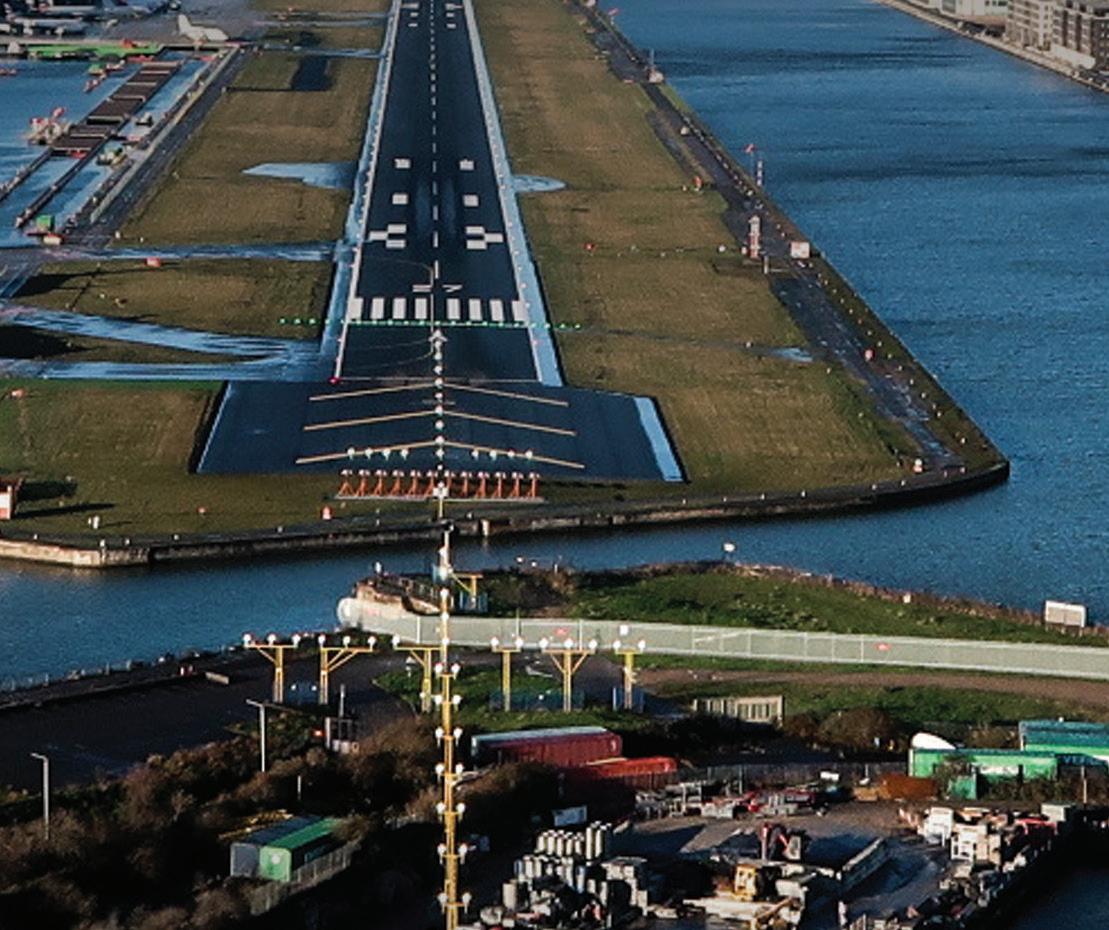


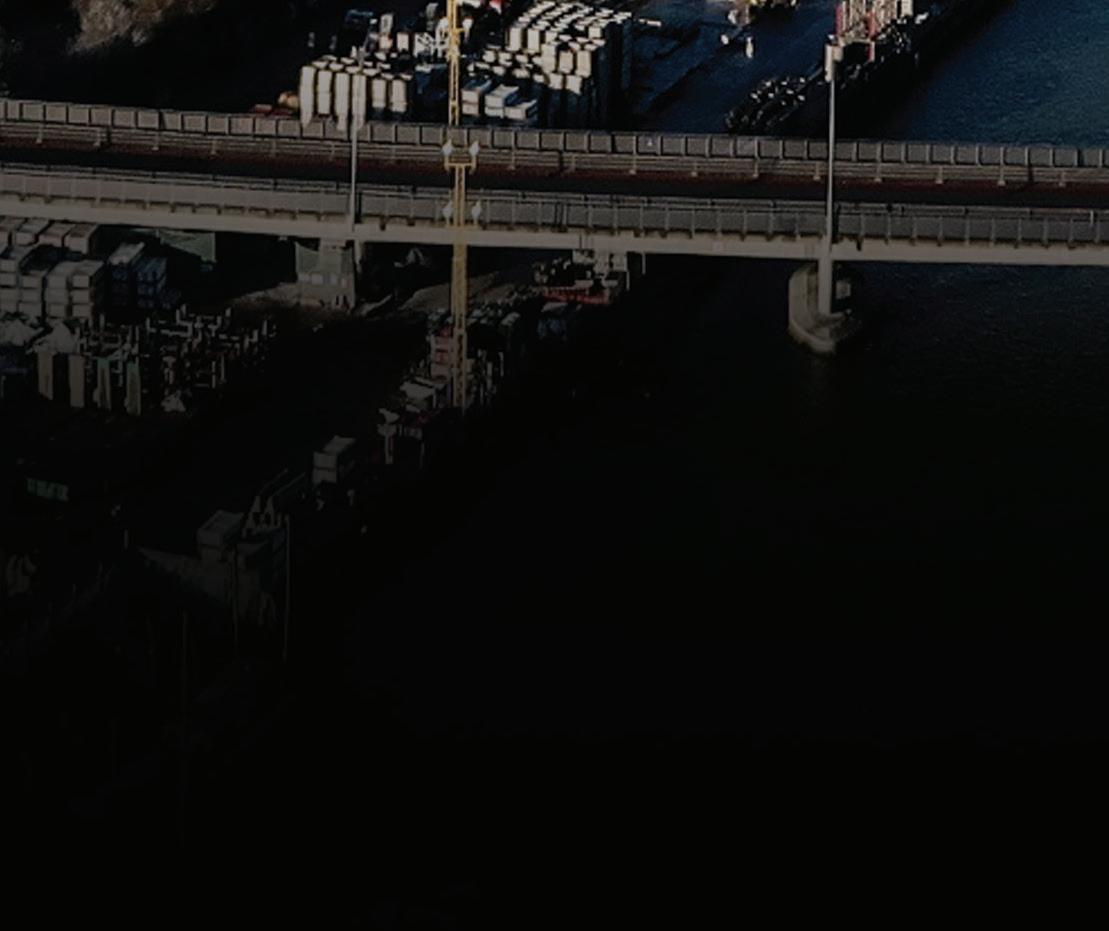




AH: Skylink Services is well recognised as a leading company in the region, providing specialized services for executive aircraft at Larnaca and Paphos International Airports. What can you tell us, George, about the founding of Skylink and how things are going today?
GM: The beginning was a long time ago now. I’ve been in this business for 29 years, dealing exclusively with executive and military aircraft. We do not do any commercial flights. I began my career in Greece, and there was an opportunity to establish Skylink in Cyprus 24 years ago.
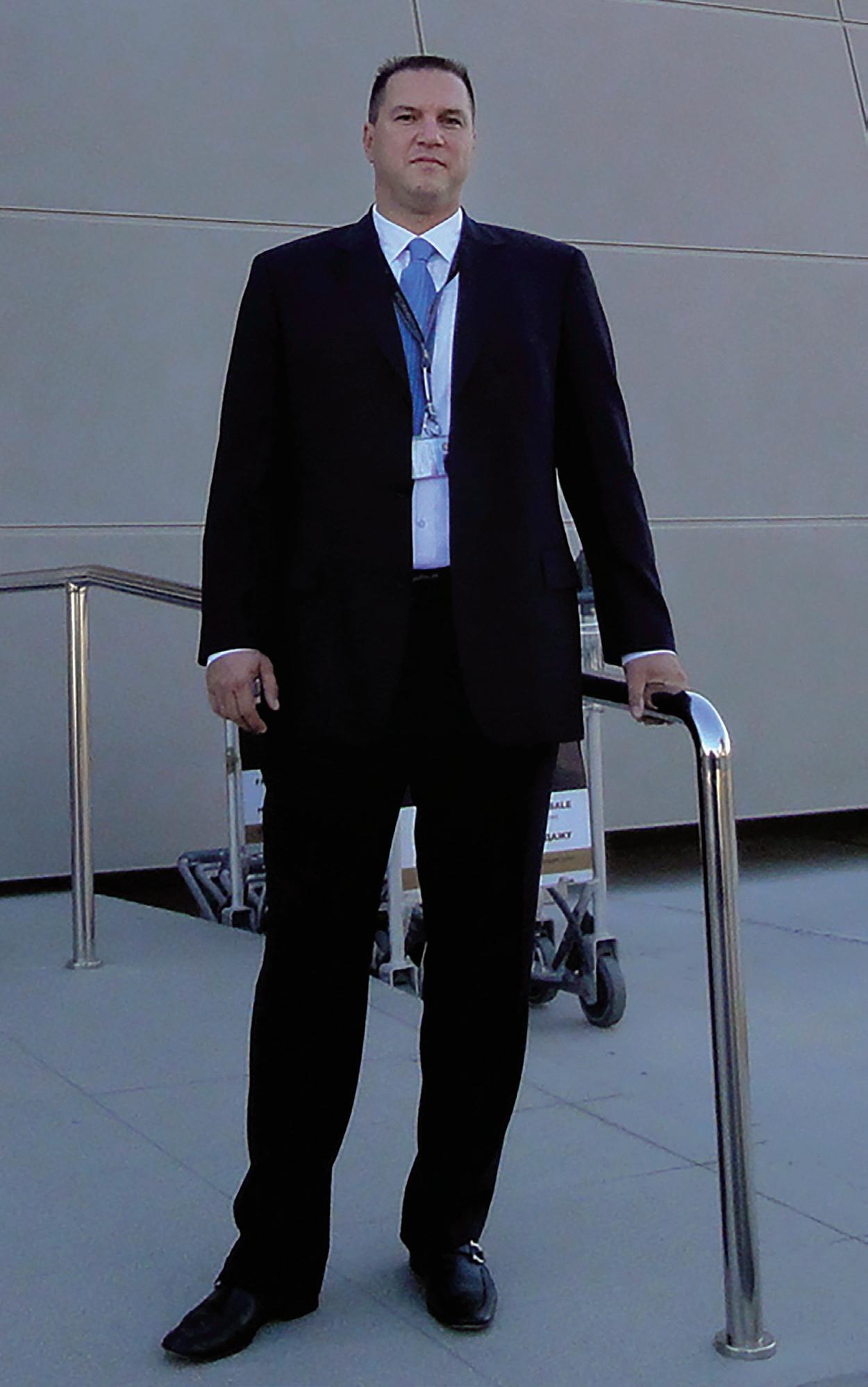
We have always looked to provide the highest quality of service to our customers. This starts with a red carpet at the steps of the aircraft and we treat every customer with the same degree of care and respect that we extend to the many world leaders who come to Cyprus and use our FBO.
Our staff and management pride themselves in providing an extremely efficient service, along with guaranteed discretion. All information gathered from our operators, passengers, and Heads of State flights is treated with complete confidentiality.
“
We have always looked to provide the highest quality of service to our customers. This starts with a red carpet at the steps of the aircraft and we treat every customer with the same degree of care and respect that we extend to the many world leaders who come to Cyprus and use our FBO.”
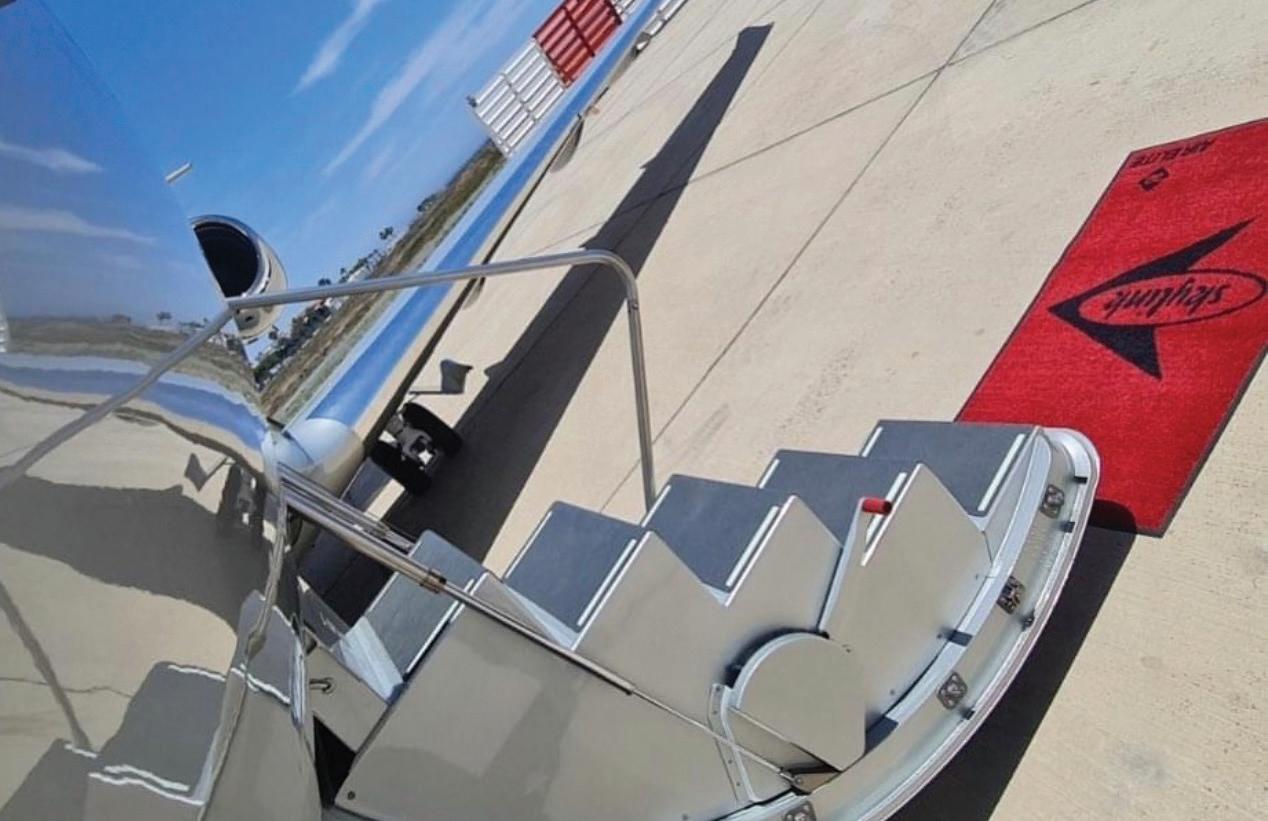

The quality of service we deliver is, I believe, the main reason why our customers prefer us and why we have so much repeat business from high net worth customers.

AH: What led you to take up a career in aviation?
GM: My father was an engineer for Olympic Airways when it was still owned by Aristotle Onassis. My father’s love and passion for his work inspired me tremendously. Despite that, my father insisted that I study to be a lawyer. He used to comment when I was very young that I could talk my way out of anything!
“
We represent over 420 companies worldwide. These range from the biggest corporate fleets to smaller operators.”


I have always enjoyed communicating with people and this is an industry where communication and reliability are among the key factors of success. Both of these I take to heart. Another great thing about our industry is the challenge. Every day is different because no flight is ever the same. The past few years have been challenging with changes in the world economy, COVID, and conflicts. I continue to steer the company through these difficult times and overcome the obstacles.
We provide ground handling for the aircraft visiting our FBO at Larnaca. We represent over 420 companies worldwide. These range from the biggest corporate fleets to smaller operators. Whenever they come to Cyprus, we take care of their landing permissions, refuelling, crew requirements, hotels, and transport.
What is more, of course, we have the only FBO in Cyprus based at Larnaca International Airport. We provide Meet & Assist services at the new terminal. So, if the passenger wants to go fast track on arrival, we can pick them up from the aircraft, clear them through immigration and customs, and collect their luggage.
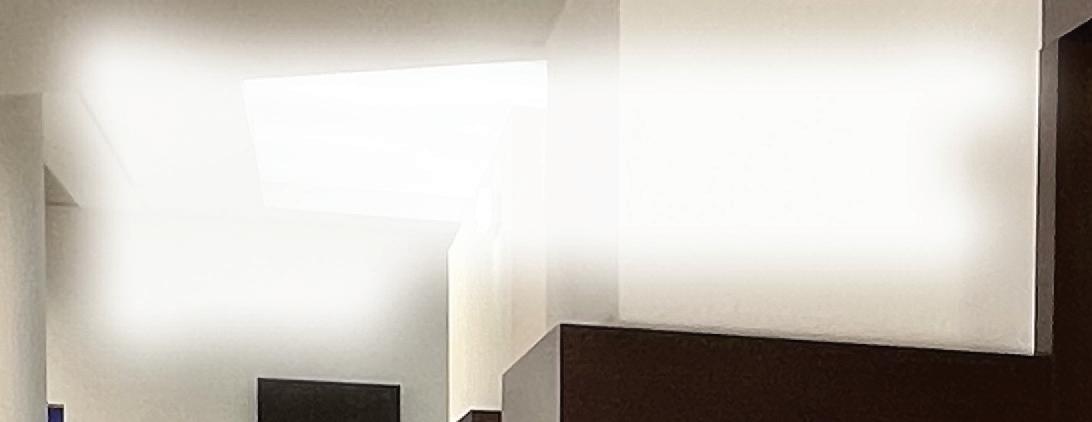
























We also can provide this service for outbound passengers. We can meet them outside, check them in, pass them again through immigration and security, and escort them directly to the aircraft. This service can be ordered on the Skylink website.
AH: What about charter bookings?
GM: I also own a brokerage company called EliteJet Aviation Services which provides executive flights. I have many customers around the world, who call me with specific requests. They might need, for example, to fly from Greece to Munich tomorrow. I am in a position to assist them, thanks to our close relationships with all the companies we represent and that journey to and from our executive terminal here in Cyprus.
AH: What led to the development of your recently launched Skylink Gourmet in-flight catering service?
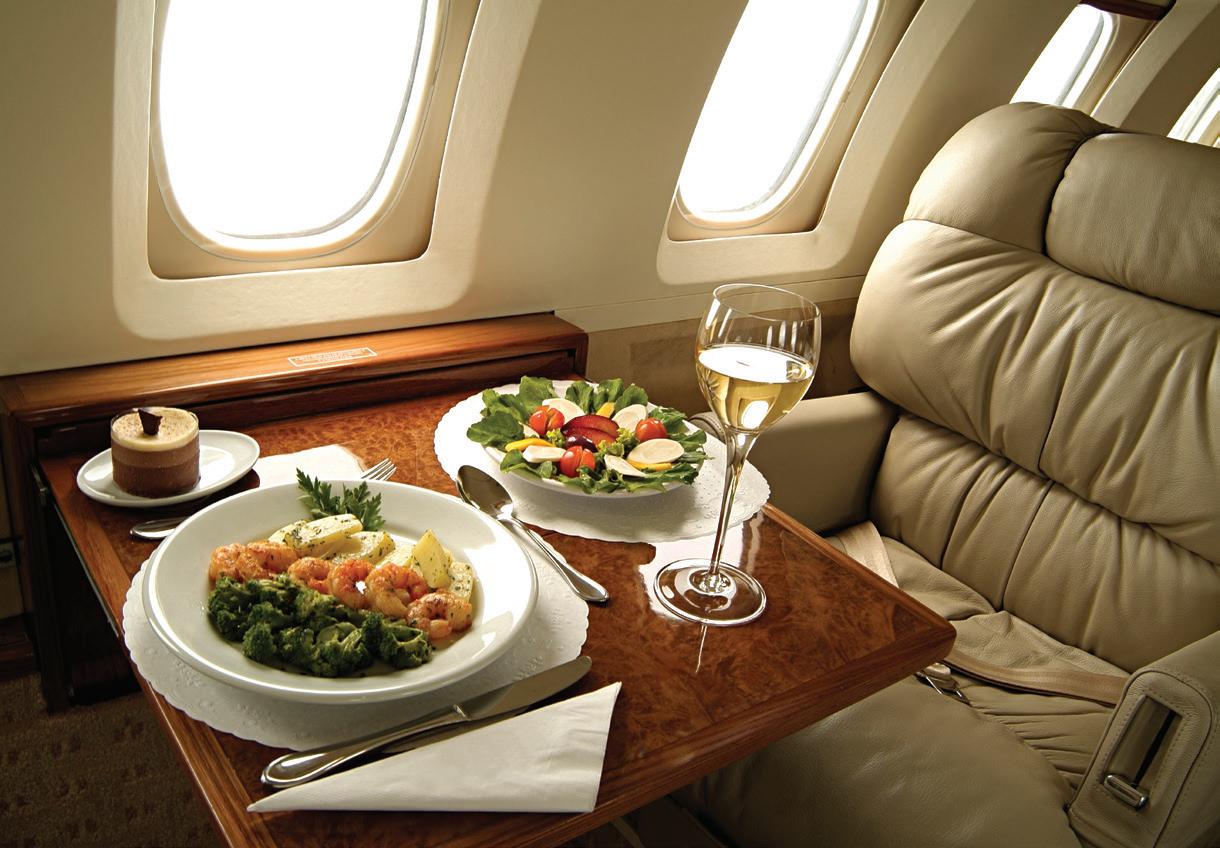
GM: This was an idea that I have been developing for perhaps the last two or three years. The idea was always to develop a gourmet service that would provide clients using the Skylink Executive Terminal at Larnaka Airport, with 5-star catering to meet all their in-flight catering needs.
The service also delivers 5-star catering to business jets and VVIP passengers using Paphos airport. It is available 24 hours a day, seven days a week.

We’ve always provided for our customers’ catering requirements, but we had to outsource that to hotels and restaurants. Clearly, you have much greater control over the quality and range of options that you provide when you have a full catering service under your own control. This is what Skylink Gourmet inflight catering now provides for us. Skylink Gourmet is the only company in Cyprus offering inflight catering directly delivered airside to private and executive aircraft.
Skylink Gourment is a sister company of Skylink Services. The kitchen is located right next door to the Executive
Terminal and is completely brand new and very much a topof-the-range catering facility and kitchen. Our Head Chef has over thirty years of experience in the airline catering industry, and that is a tremendous advantage for the service.
On top of this, we have a great complement of catering staff who have a real depth of experience across all aspects of gourmet catering. This includes a sommelier service that allows us to provide wines that are a perfect match for whatever dishes our customers may order.
Our Chefs and kitchen staff take care to source only the finest local ingredients in order to provide private, executive or charter customers and crew with the tastiest and freshest culinary experience. The staff will work with customers to meet and fulfil all of their requests, taking into account all the client’s special dietary needs and nutritional requirements.
AH: With clients flying in from all over the world, your chefs are going to receive some very specific and challenging requests, are they not?
GM: We work closely with clients to deliver gourmet meals to their precise specifications. The chefs can arrange kosher or halal meals. They can prepare gluten-free, vegan, vegetarian or dairy-free, or low-sugar – whatever the client requires. If the customer has a particular taste preference or desires a very specific set of ingredients, our staff will work with them to ensure their satisfaction.
We can do all kinds of country, or regionally-specific, dishes, be it European, Asian, Middle-East, Oriental or Indian cuisine. We also do special children’s meals and there is a wonderful grill menu. We provide age-appropriate children’s activity packs and we arrange personalised cakes for special occasions or birthday celebrations. Basically, we aim to be a five-star luxury restaurant that clients can enjoy at 40,000 feet.
Strategy1 Advisors is a boutique, global management consulting firm. We specialize in full life-cycle business strategy development and advisory services linking strategy to operational execution.
Who We Are - Strategy1 Advisors is committed to assisting small to medium-sized businesses develop, evaluate, and operationalize business strategies and providing the supporting advisory services to link your strategies to operational execution. Our management consulting areas of practice include strategy, advocacy, markets, board service, and executive transitions.
Strategy - We use a proven model refined over many years to walk step by step through the strategy development process.
Advocacy - Business advocacy programs through education, evaluation, and collaboration.

Markets - Link your market plan to your strategic plan and ensure that everything is connected to your operational systems.
Board & Executive Transitions - With our network of world-class executives, we can assist you in filling Board positions.

AH: Clay, AIC Title Service had a great year in 2021. What is your experience so far in 2022?





CH: We started the year really well. January and February were five percent and seven percent up, respectively, on the first two months of 2021, and that was a record year for us. So to be ahead of them was fantastic.
However, things softened a little in May and June. But then July and August started really big. So, my expectation for our results by the end of 2022 is that they will be probably as good, if not a little better than we achieved in 2021. As far as the numbers are concerned, we are 25% better right now, in money terms, by comparison with the same period in 2021.






AH: How do you think your performance compares to the market as a whole?


CH: It is really difficult to get much of a handle on what other folks are doing. I know the total number of registrations going through the FAA, and that number is staying fairly steady, year over year. Right now, the numbers of new registrations are on a par with the same period in 2021. So I would say that things are staying approximately the same for my competitors and others in the industry.

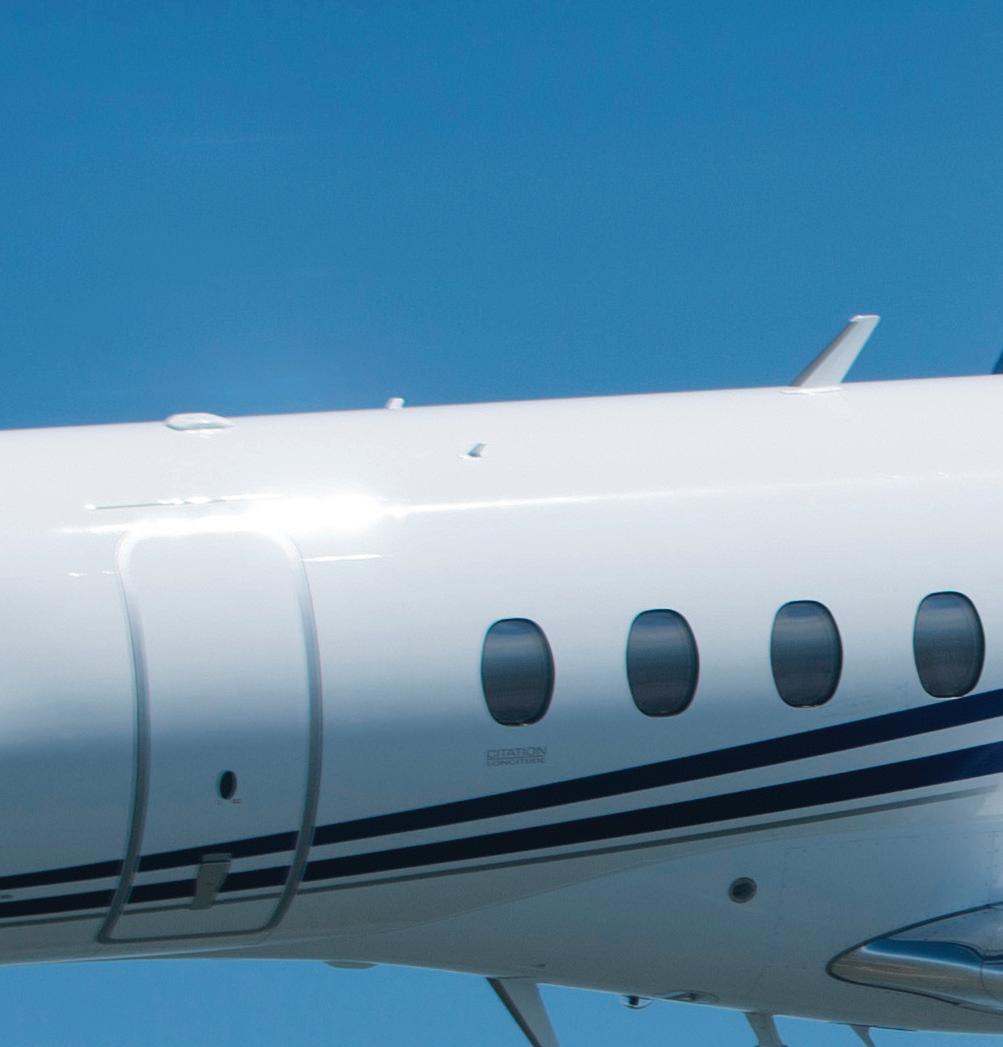

 Clay Healey, the owner of AIC Title Service, talks to Anthony Harrington about the current boom market in business aviation
Clay Healey, the owner of AIC Title Service, talks to Anthony Harrington about the current boom market in business aviation
“
On the international front, we have, as you know, our AIC Global Solutions operation, run by Eric Lewin. We partnered with Eric to bring our proven Aircraft Closing Platform to the European market.”








What I can say is that we are really pleased with our progress. For example, we opened up 23 new transactions on Monday, 8th August alone, and we’ve had plenty of good days like that.
On the international front, we have, as you know, our AIC Global Solutions operation, run by Eric Lewin. We partnered with Eric to bring our proven Aircraft Closing Platform to the European market. Eric helped us to add the features required to make it work in the non-US jurisdiction markets. The Global Closing Platform, run by Eric in London, is now really starting to get traction. We have some transactions going through it now and we have great expectations of it over the next few years.
AH: Inflation is really starting to be a worry around the world. How do you see things developing?


CH: Of course, everyone is screaming about rising fuel prices. The dollar is up against a basket of international currencies. That makes it easier for us to import goods but it tends to hurt exports. We are all aware of goods and services going up, but hey, life goes on. In our market, we are dealing with high-net-worth people for whom a hike in the consumer price index does not have much influence.
If you look at things realistically, the ultra-low interest rate environment of the last few decades was really simply an opportunity for the banks to increase their assets. They were giving you next to nothing on your money and charging four percent on loans, so they were getting more and more profitable.
Will it hurt business aviation if interest rates go to 15 percent? Absolutely! However, interest rates at three or five percent will not have that much impact, in my opinion. I would be surprised if we saw any adverse impact until late into 2023 or early 2024. We don’t see any trouble ahead this year, that’s for sure.
You have to understand that the US is what controls the business aviation industry. The vast preponderance of the global fleet is here in the US, and if the US industry is having a good year, then that defines what is happening. Private aircraft are going to keep moving in good numbers and General Aviation is going to do well.



China and what happens in China is not going to affect us. Asia is not going to affect us. Europe could affect us
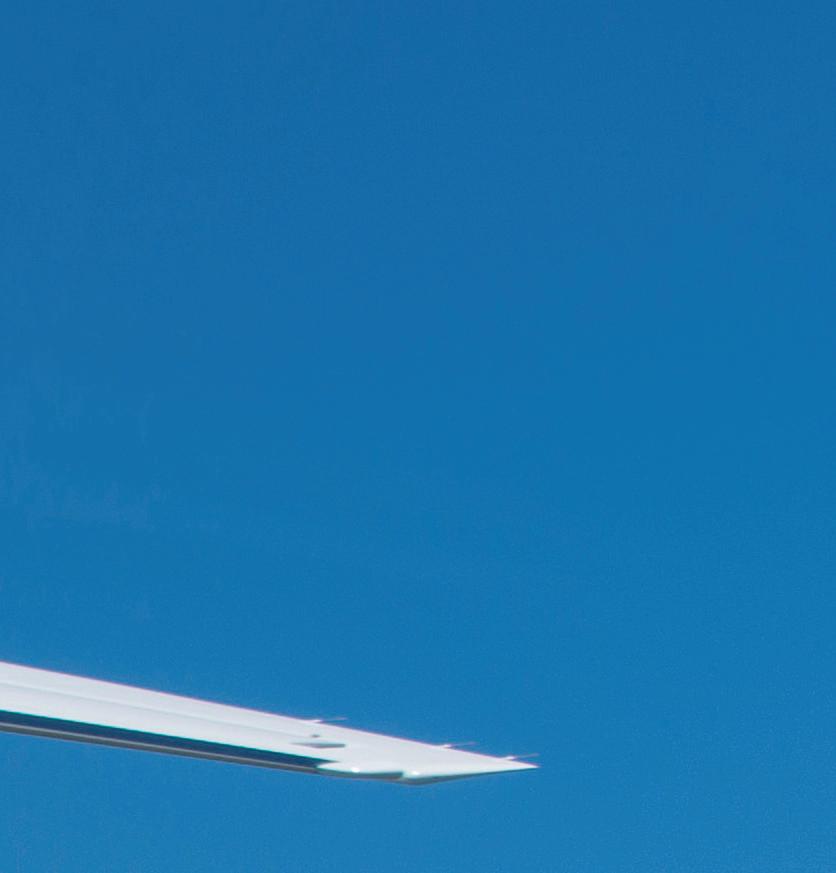
“
Most GA aircraft are being used by people who are very affluent. Yes, they don’t like it, any more than I do, when I have to pay three times more for aviation fuel, but it does not stop them from flying.”



but so far it hasn’t. Europe and the Russian – Ukraine war could create a 15 % to 20 % drop in European private jet movements, but you pick that number right back up with the increase in US movements.
Of course, we have all kinds of talking points right now. Inflation is picking up. CPI indexes are going through the roof, but that matters if you are buying milk or gas, it doesn’t really impact private aviation nearly as dramatically as the talking points might suggest.
Most GA aircraft are being used by people who are very affluent. Yes, they don’t like it, any more than I do, when I have to pay three times more for aviation fuel, but it does not stop them from flying. Most aircraft owners in the US use their aircraft as a business tool, and they are not about to stop using them.


AH: Every two years you have your ‘Preferred Client Conference’ in August. That is just about upon you. What are your expectations?
CH: We’ve been working really hard getting ready for the event, which is just a week away, on Sunday and Monday, as we speak. Already, it is clear that we are going to have a phenomenal event. Artificial Intelligence has been a very important part of our technology platform for a while now and we are going to be showing the audience further developments.





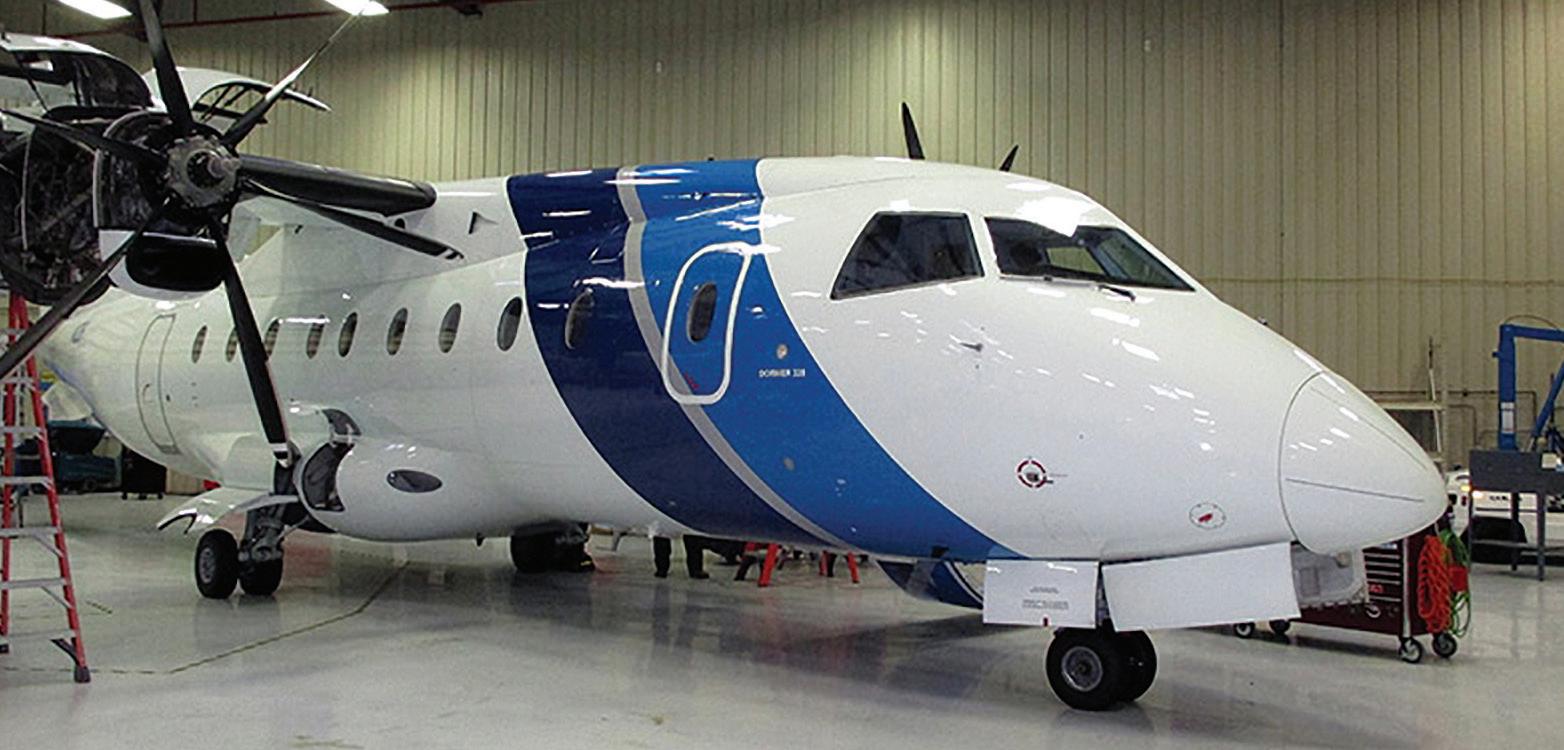


Already we have automated around 93 percent of all the searches related to registering an aircraft. Then it just needs checking and the few items that are handwritten parts of the aircraft’s documentation have to be entered. You need to check that signatures match, that sort of thing, but really, our platform takes so much of the work out of it.











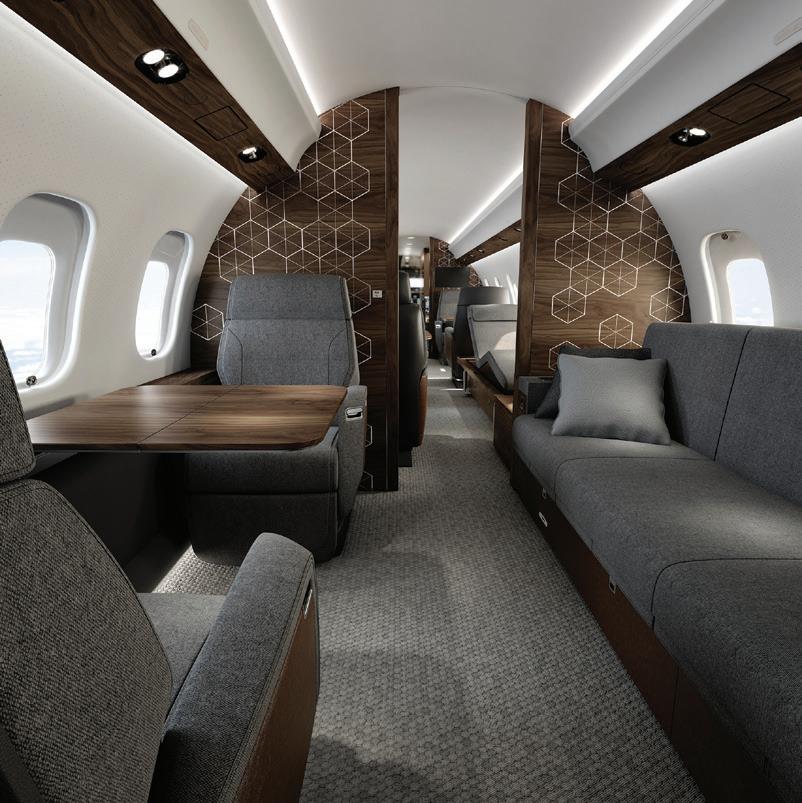
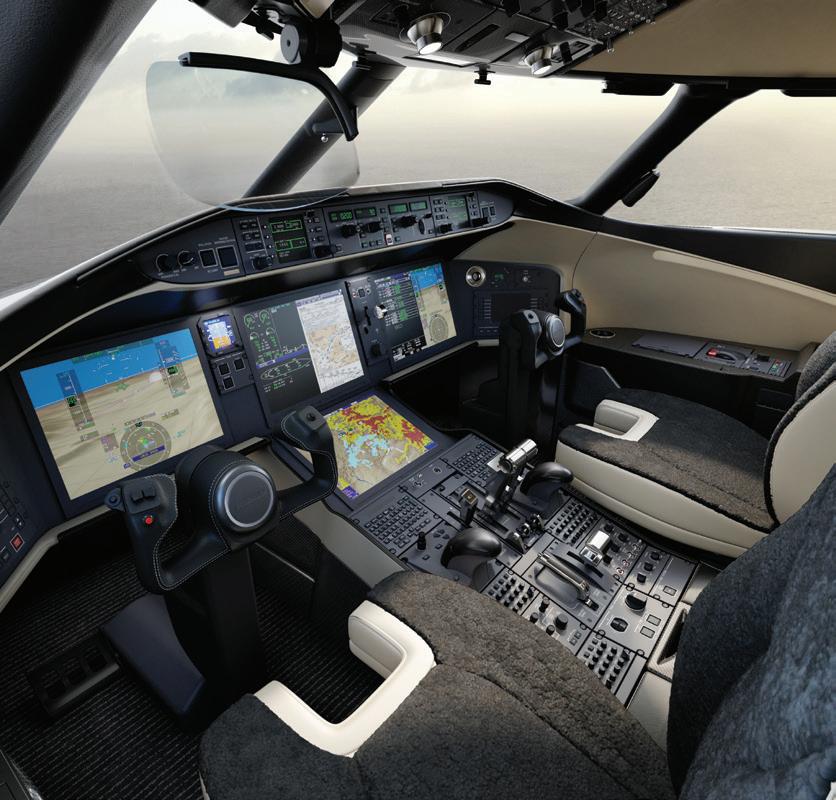






















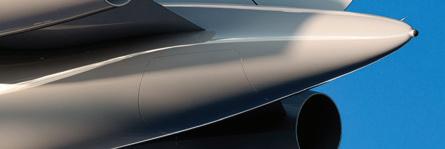












Even so, everything we do is checked and double-checked and we know it is error-free. Our clients know that too. We do the best we can to make our clients more successful by helping them to close transactions quickly and smoothly. When you make their lives easier, that increases the chances they are going to use you again! |BAM






















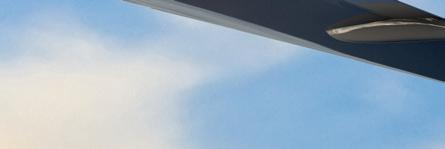





























“ Everything we do is checked and doublechecked and we know it is error-free. Our clients know that too.”












JSSI is continuously innovating our maintenance management and maintenance tracking software. As neutral service providers, our goal is to enable owners and operators of business aircraft of all sizes, makes and models to make smarter maintenance decisions, reduce operating costs, and maximize fleet availability.



Whether you manage a fleet of business jets or operate a single turboprop, add more value to your operation with a custom solution from JSSI.











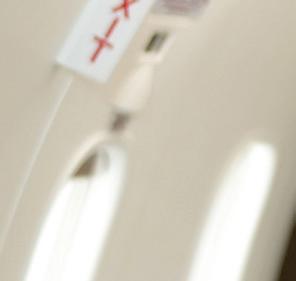



Nicholas Correnti, founder of Nicholas Air, on scaling up a small business aviation company to the point where it can claim to have the youngest fleet of aircraft in the industry


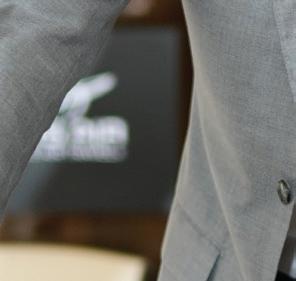





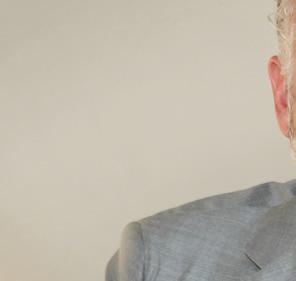

Founded in 1997 by Nicholas Correnti, NICHOLAS AIR began as a small private aviation company focused on aircraft management and leasing programs, with locations in Arkansas and North Carolina. The company quickly became known for the industry’s newest owned and operated aircraft, customizable jet card programs, and highly personalized service experience.




Q: Let’s talk a bit about how you set out to build a really strong brand and about the philosophy that has led to Nicholas Air having such a young fleet of aircraft.
NC: It’s simple—we aim not to be the biggest but to be the best. We believe strongly in honoring the commitments we’ve made to our Members when it comes to aircraft quality and service reliability.









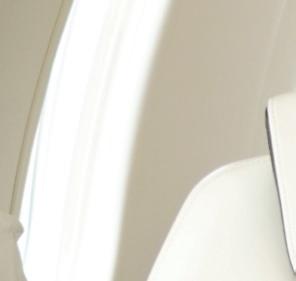














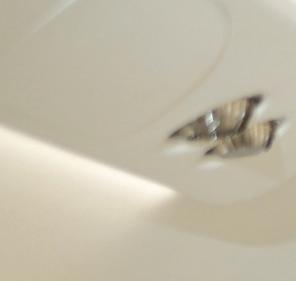






A large part of that is centered on the airplane itself. These aircraft are the showpieces for the brand, but they are also the vehicle by which our Members entertain clients, or where they enjoy their time with their family, or where they seek respite from a busy schedule.



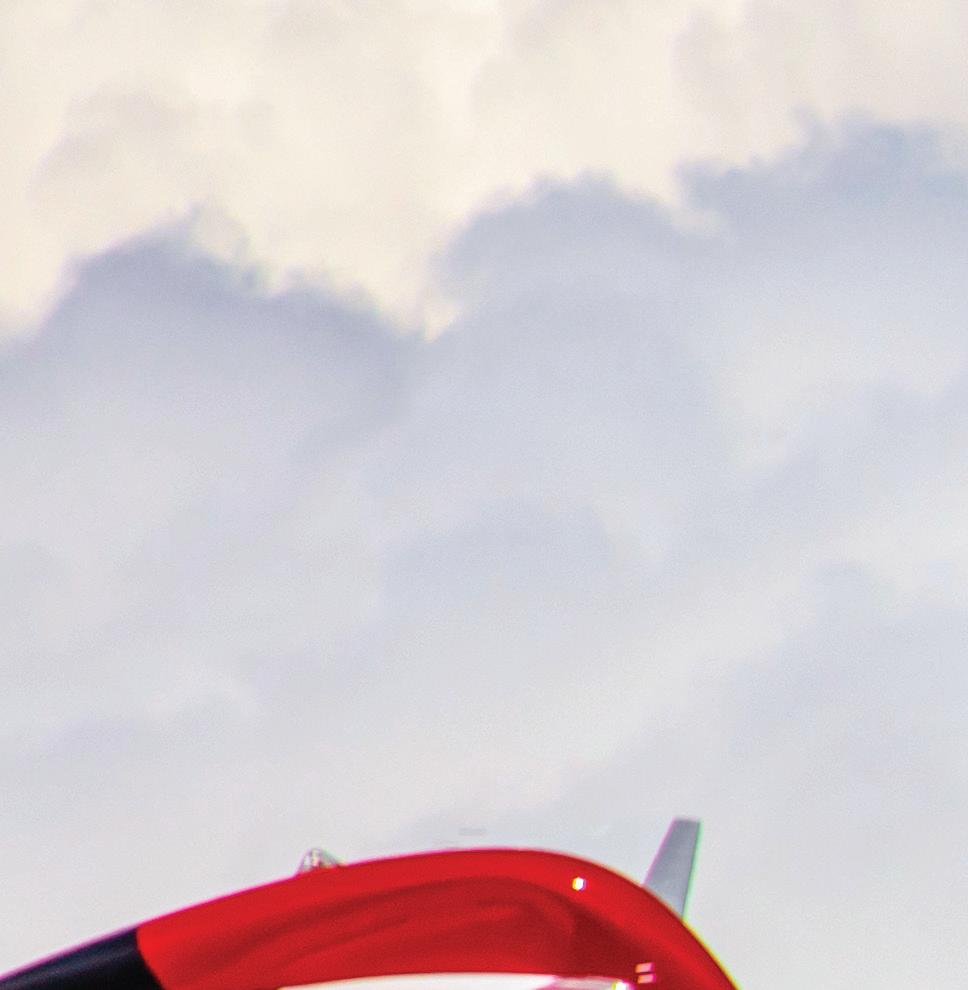
There is something different, and special, about walking up to a NICHOLAS AIR aircraft and knowing that the brand you selected for your private travel spends the resources to keep the fleet young. Plus, the onboard experience is curated for your comfort. A young fleet means a financially stabile company, but it also means that the aircraft are modern, inherently safer, and mechanically more reliable.
Q: What is involved in building a strong, talented management team?

NC: I’ve spent my entire career in private aviation and inside the walls of NICHOLAS AIR, so when we expanded our leadership team, we wanted to have people with experience from all over the industry and even





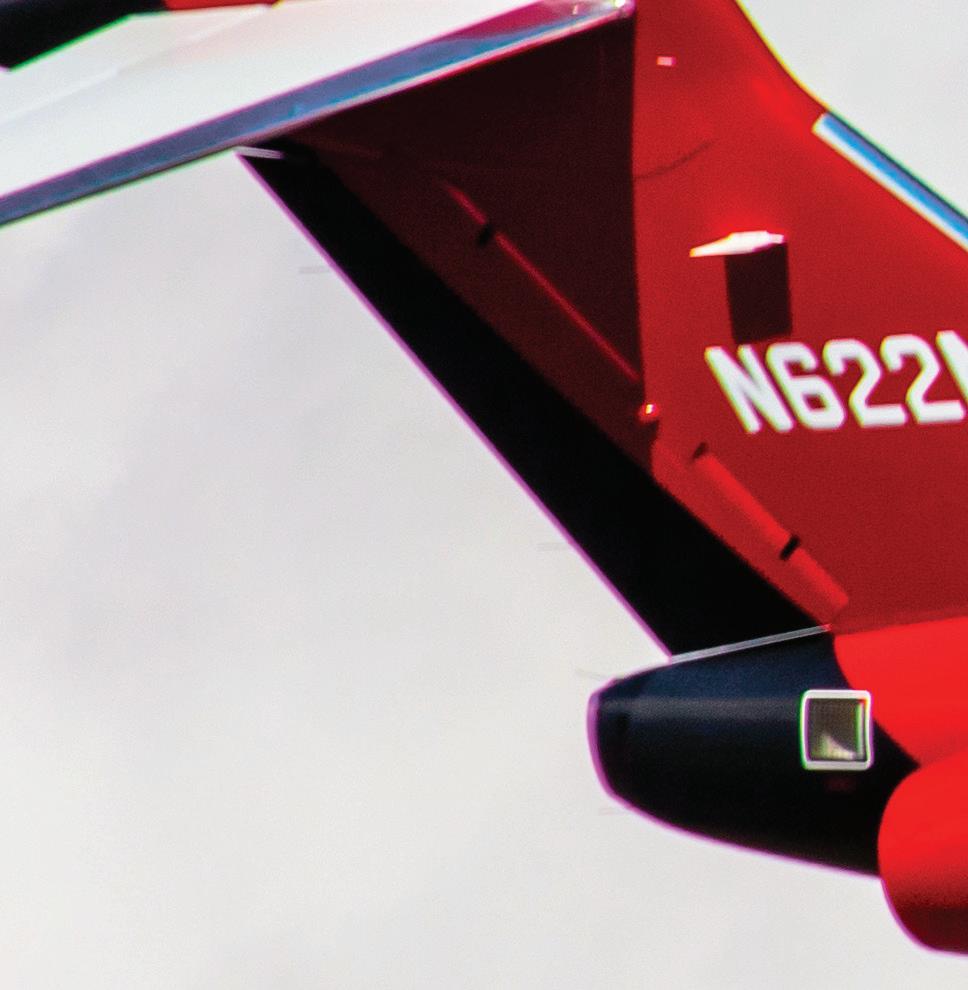
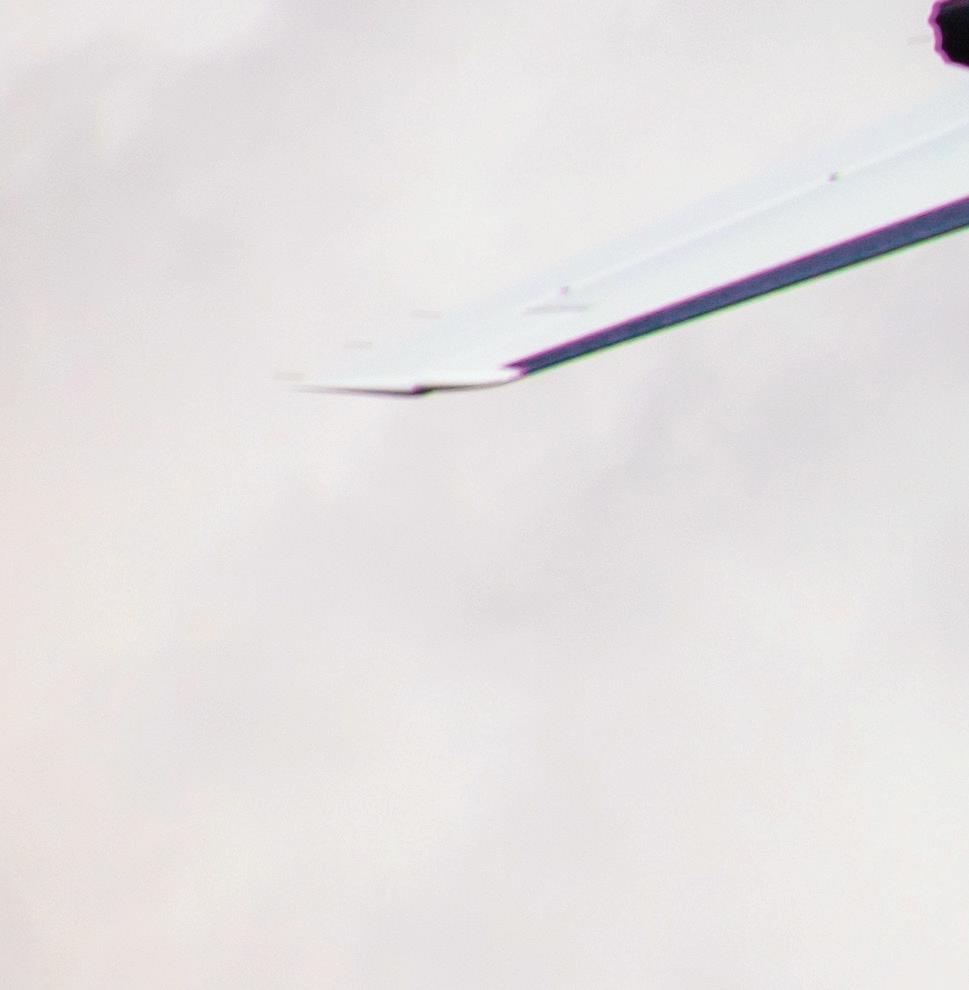



outside of it. The industry knows that a leadership role at NICHOLAS AIR is a coveted spot and it’s an exceptionally competitive process.
Above all, we look for integrity. Strong morals, business ethics, and an exceptional value set should never disappear from business and it is something that I personally want more than any other quality in my circle. Second, you have to possess a strong work ethic and willingness to see the job through. Aviation is a 24/7 business so you have to not only be engaged all the time, but our people understand the value of their engagement on the operation, and ultimately the success of the company.
Plus, finally, you need knowledge. There is a lot of aviation specific knowledge within our leadership, but I am increasingly amazed at how much our team understands other industries at the same time. They are perpetual students of business and stay active within the global business community while ensuring our success here at NICHOLAS AIR.
“






Repeat business is the most important benchmark that we have, because we operate under the belief that anyone can sell a new customer that first time.”
This core group of leaders is incredibly smart and the cohesiveness and the closeness of our team is a major part in our rise in recent years. To sit around a table and work through ideas and concepts, all aimed at continuing a responsible and stable approach, is a lot of fun. The conviction they have to our brand and our core principles, and then for me to see how that translates to our whole team and our corporate success, has been incredibly rewarding.
Q: Customer satisfaction and repeat business go hand in hand. How do you generate both?
NC: In our company, they go hand in hand. In fact, that repeat business is the most important benchmark that we have, because we operate under the belief that anyone can sell a new customer that first time. You see it often enough around the industry, where all of the extra stuff is thrown into a deal to acquire a new customer. But the reality is that the only way to keep that customer is to actually deliver on the product. You can’t be late. You can’t fly inferior equipment. You can’t keep changing business models to chase a market.
The private jet consumer is exceptionally perceptive and to earn that renewal business, it means the service delivery has to be spot on from the very first flight and all the way through. Doing the little things right takes time and resources, but it is imperative in this industry if you want to have a long-term customer. It is impressed upon our team from the first day they join us that we will take better care of our customers than anyone else in this industry.



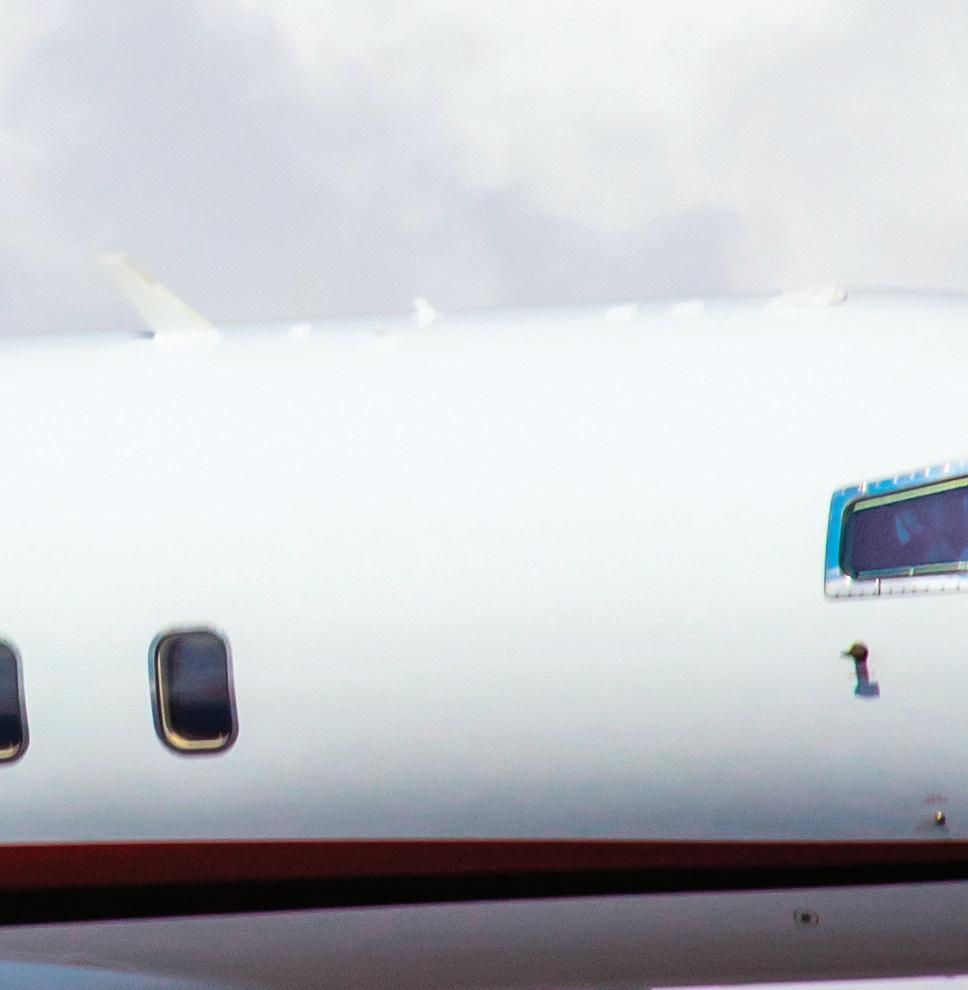
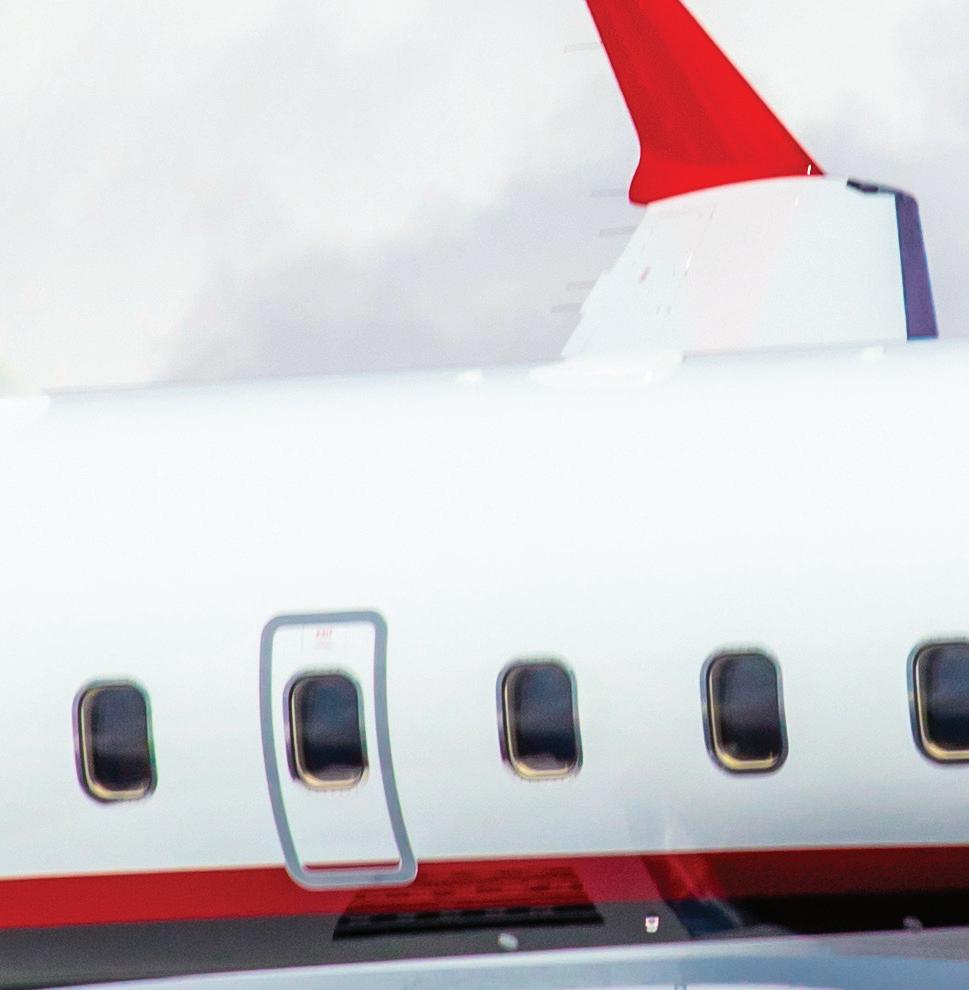
Q: The charter market has suffered in the last decade from relentless price erosion. How do you combat that and drive profitability, while still generating customer satisfaction?






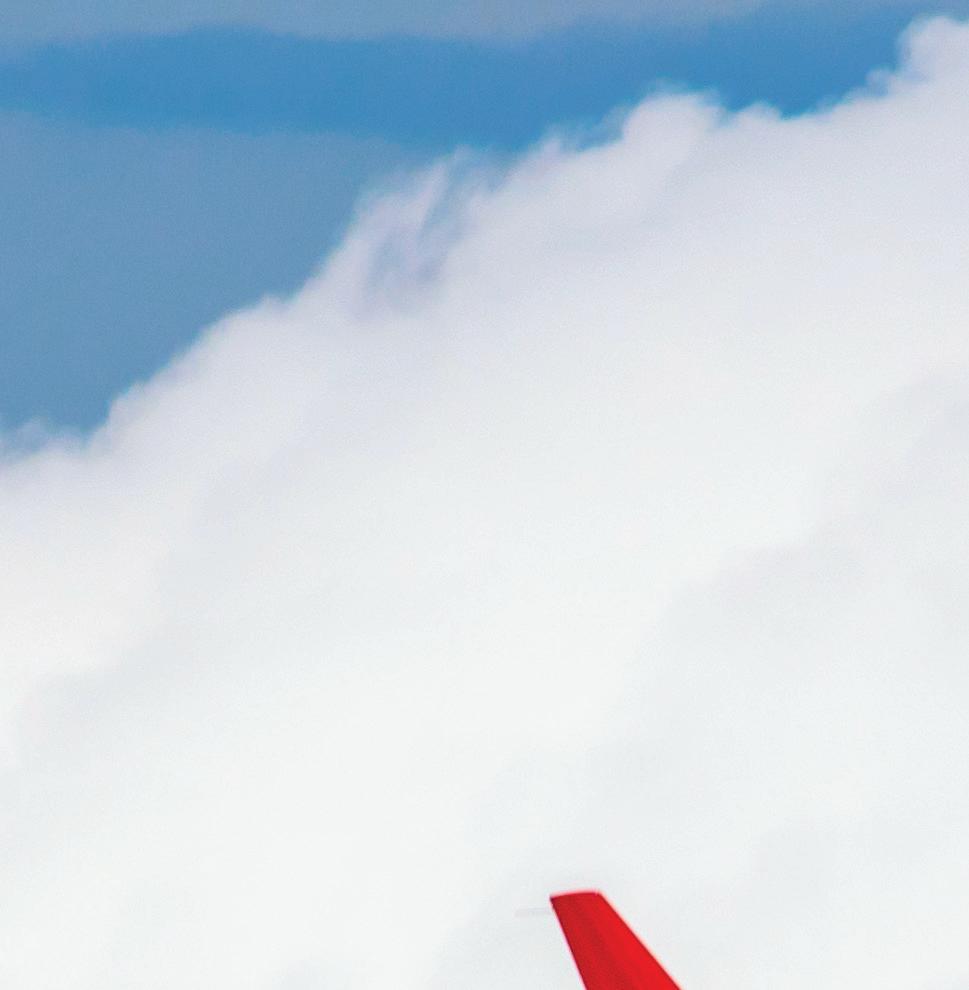
NC: We certainly have noticed that trend a lot as well, but have avoided it. It doesn’t take long to look around the industry and notice the trend of brands overextending themselves financially in order to keep up with the current market demand, but that is just not part of the corporate culture here at NICHOLAS AIR. Certainly, there’s a lot of talk around this “democratising private travel” but that type of rhetoric doesn’t work in a market where the cost of goods keeps rising.

Three years ago, pricing had started to fall slightly in the face of competition and when 2020 rolled around, those very thin margins couldn’t help a business weather the storm when customers flying turned off for a couple months. The industry saw some drastic moves as some brands went out of business entirely, some cut their rates just to encourage flying, and others changed the quality of their aircraft to keep prices artificially low.
They were interesting moves, but they weren’t sustainable and in fact, when pricing reset again in 2021, those brands had to go even higher just to play catch up against their 2020 books. It’s a vicious cycle, but it’s a cycle made worse by brands who are buying planes at a 30% premium just to service a clientele who bought in at a low hourly rate.
We combat this by staying true to our values and by being confident in the product we bring to market. Yes, pricing in the industry is at an all-time high, but if you continue to have a high- quality product and the customer recognises that, then it is ok. The private jet consumer knows there is a price to pay for top quality, just the same as they know that $8000 an hour for a 1998 Hawker 800XP is a bad deal.
We’ve remained committed to buying new aircraft, providing a great service level, and actually delivering on the promise that our team makes during the sales process. Not a lot of companies are doing that right now and instead, they are










bringing on big top line revenue numbers and flying it with increasingly older and older equipment. That may help the stock price or help the bottom-line numbers somewhere, but the consumer ultimately wakes up and realises that the value of the product is out of step with the price being paid.
Conversely, a NICHOLAS AIR Member understands where our pricing is and each time they step on board or interact with our team, they know first-hand that our company’s commitment to quality has never once wavered.

Q: How much is the current surge in fuel costs impacting the sector? The price of oil has now started to fall, mainly because of weakened demand from China, as I understand it. Are you forecasting a continuing strong demand for your services or do you think the market will weaken as we go into 2023?
NC: Our company is built differently than others in the segment in that we are better able to handle the ups and downs of the economy and the external factors of the business. Of course, there are factors that are going to be beyond anyone’s control, but having a really solid gameplan from the beginning and sticking to it is something that we pride ourselves on.
The vast majority of private jet customers, no matter what style of flying they choose, are seeing the price of fuel impact






















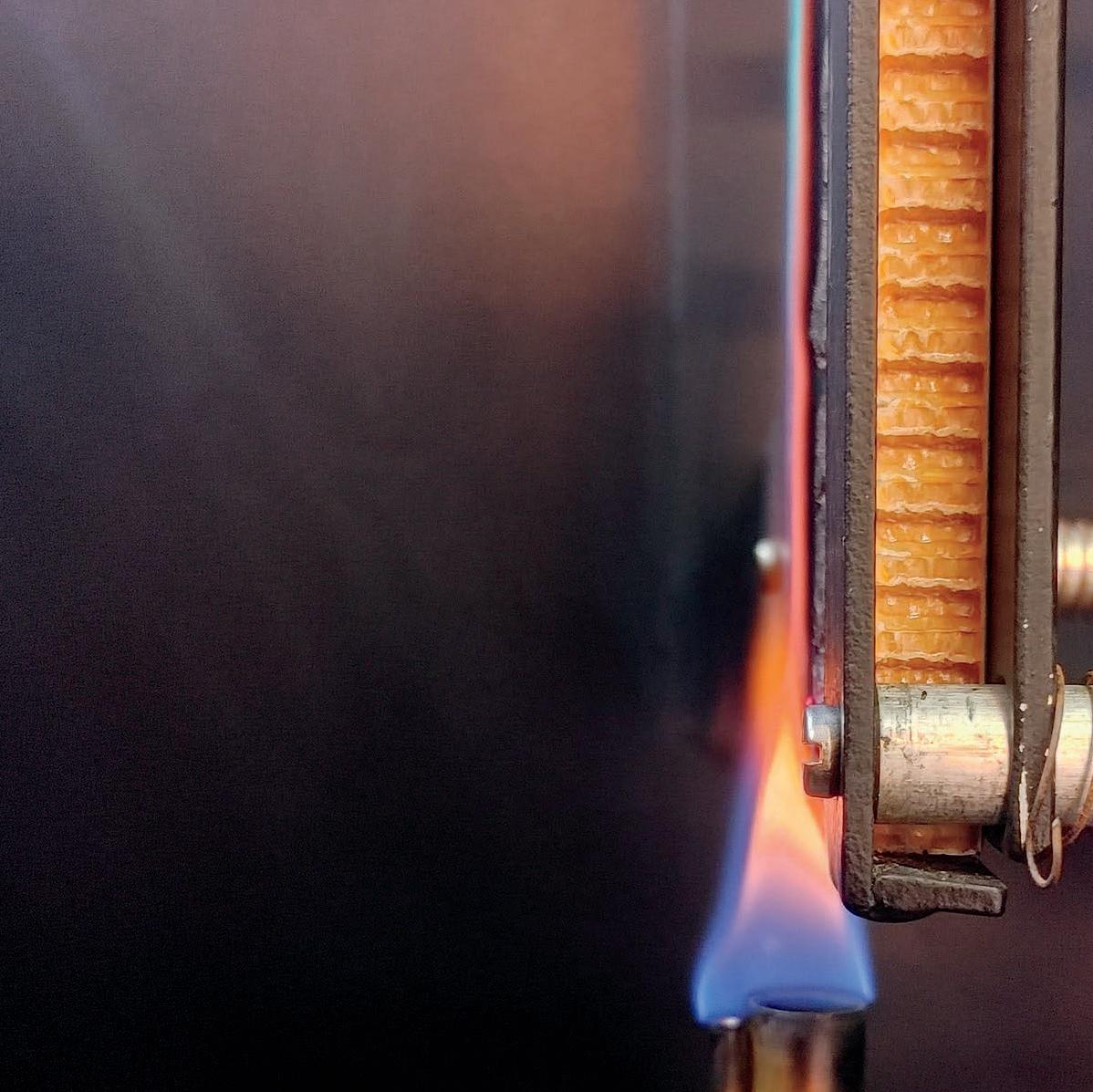







their business as well in some fashion, so there is a little more understanding as Jet-A fluctuates up and down. For us, we focus on the relationships we have with our FBO partners to ensure that we are aware of what’s about to happen and can strategically work through that with our crews and Members. Having great information at our fingertips allows us to do better route planning and better fuel uplift, which ultimately impacts our entire operation.
As for demand, I don’t see the demand changing for our program, in that we offer a different product to the rest of the industry. Our product is intended to be at the highest end of the quality scale and puts a premium on elite service levels. I don’t think either of those elements go out of style and the response we have gotten from both our Members and potential Members shows their preference for a company that is committed to those things in the long term.
NC: The same place we are today. Providing the most refined set of private flyers the best private air travel experience in the industry. With that comes more engagement and visibility in the communities we serve around the country as we meet more people who are eager to find out why we’re held in such high regard.


I recall the days when folks used to think that NICHOLAS AIR was only in the Southeast, but then they’d see us out in Aspen, or in Montana, or along the California coast. Those destinations have become increasingly more frequent, meaning more and more opportunities for savvy flyers to get exposed to our aircraft and our team.



With each of those experiences, new Members come to our program, further widening the web of people who prefer NICHOLAS AIR for their private aviation needs. The footprint of our flying will grow, the number of aircraft will grow, and the size of the aircraft will grow as we see more red tails around the world.
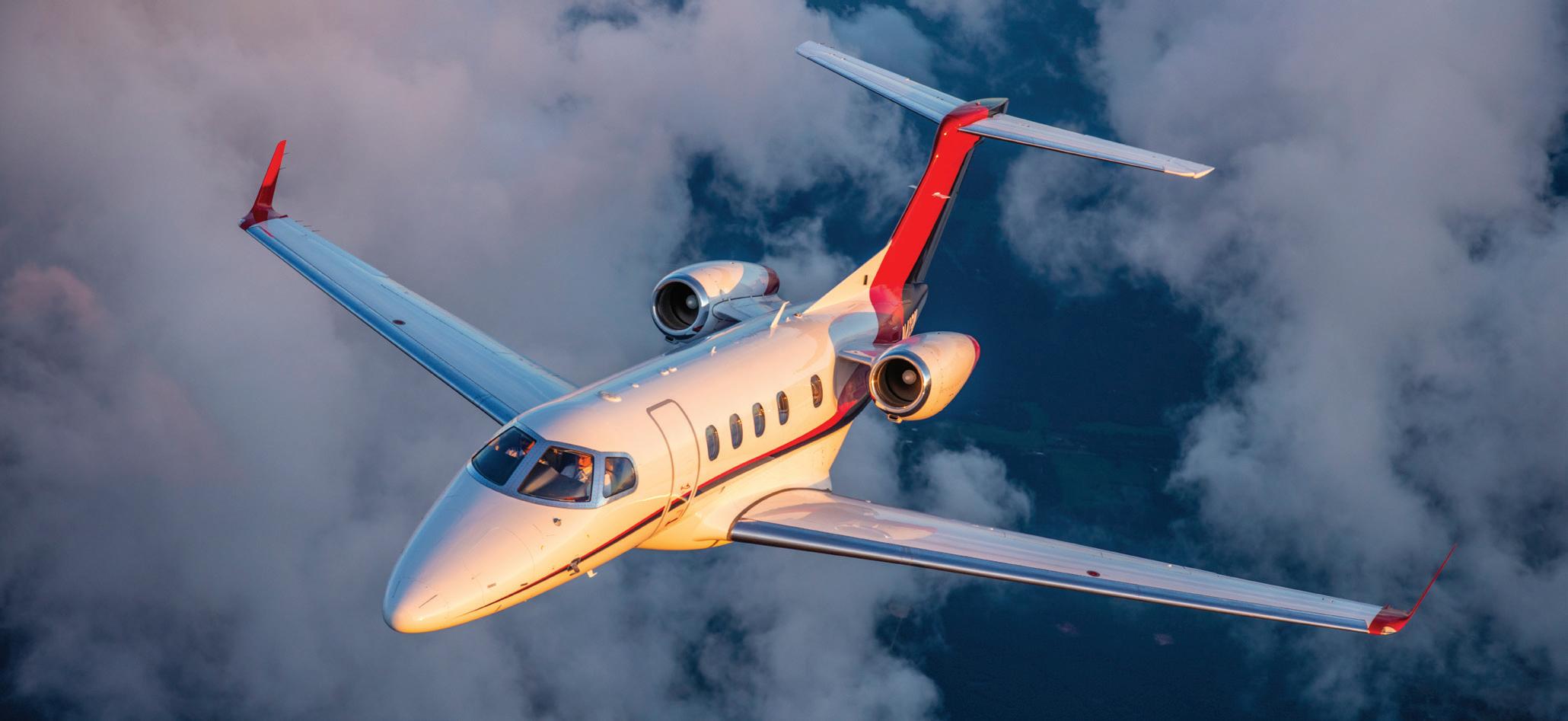
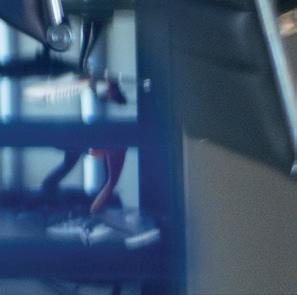



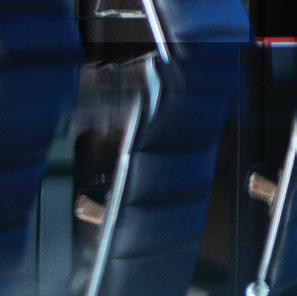


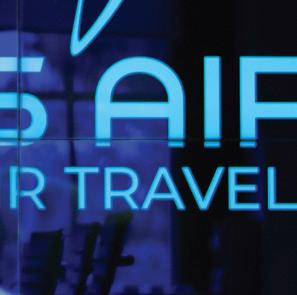
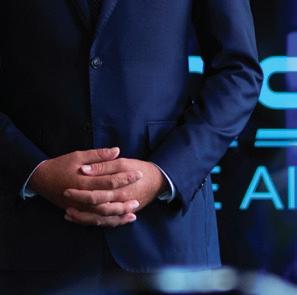






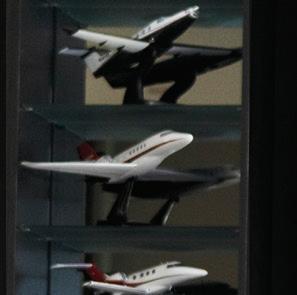

|











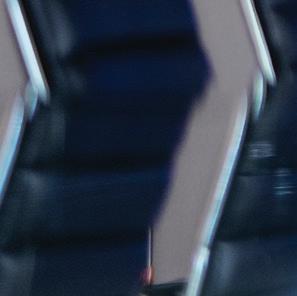




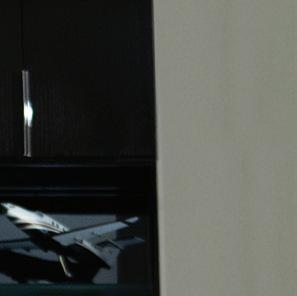


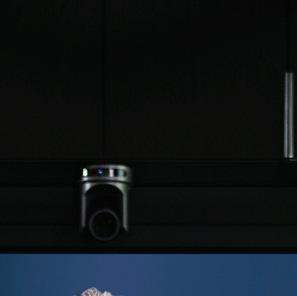









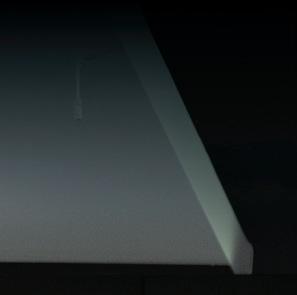

BAM
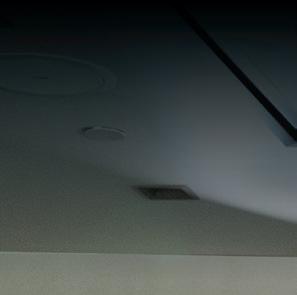
 Richard Hekker
Pascal Barreau
Richard Hekker
Pascal Barreau

AH: Richard, what was the idea behind founding OPES JET?
RH: My Partner, Pascal Barreau, and I decided to do something no one else in the industry had yet done. We first had the idea about three years ago. It took about a year to get the plans and investments together and then we began writing the app, which went live in mid-2021. Since then, we have been proving our concept and now we can begin scaling.
Today, we have roughly 2,000 customers and over 5,000 aircraft on the system. Virtually all our customers tend to be repeat customers. Interestingly, our two principal customers for Europe and the US were so impressed with their initial experiences and our concept that they became shareholders in OPES JET.
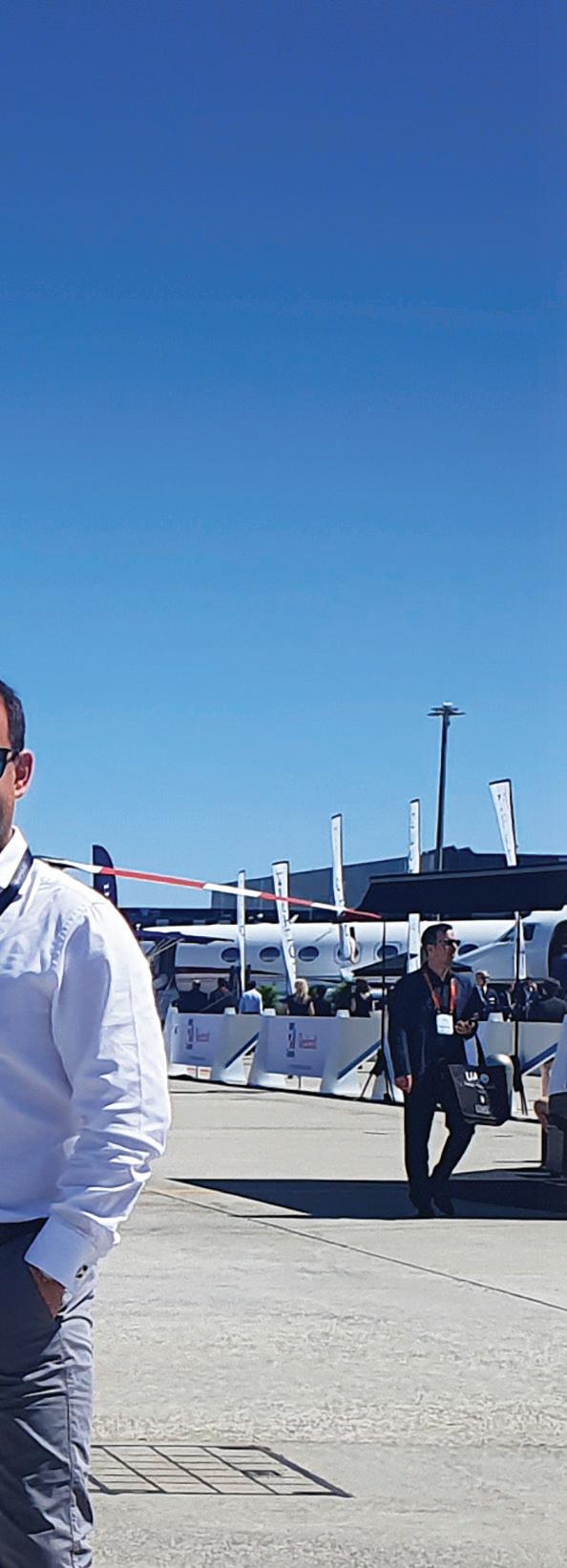
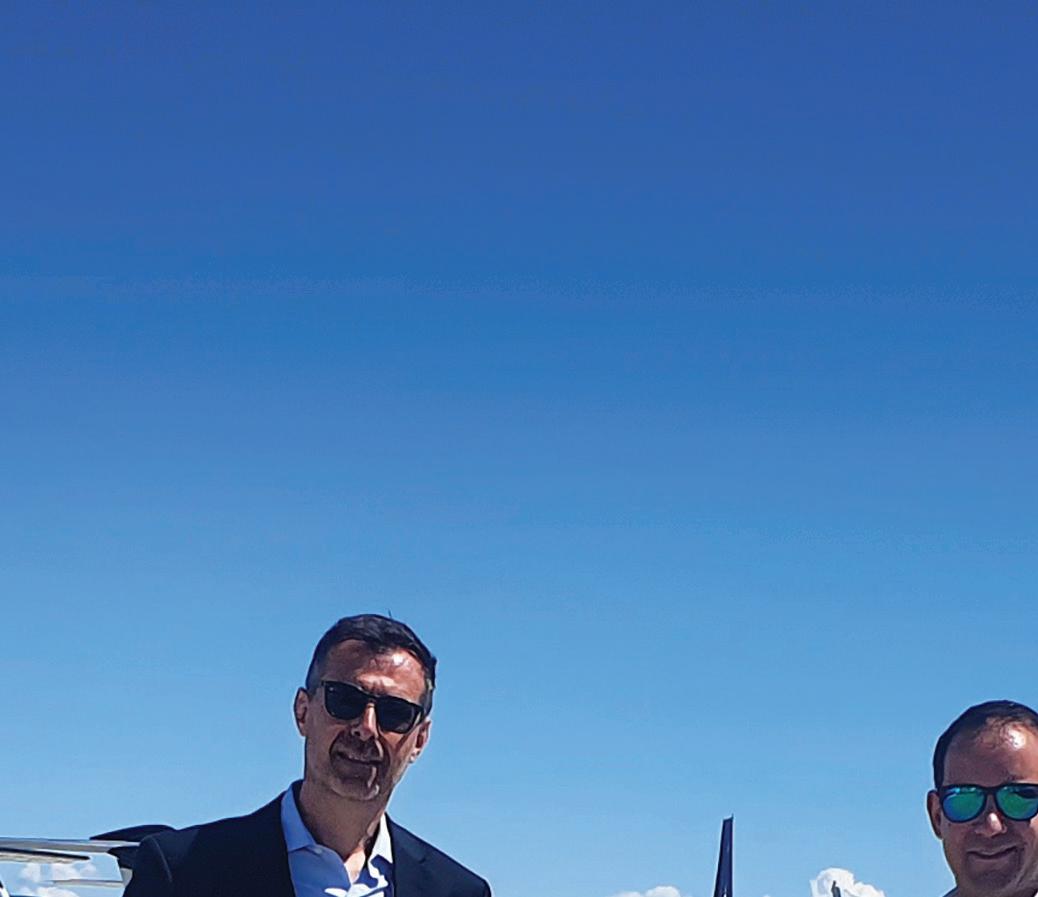

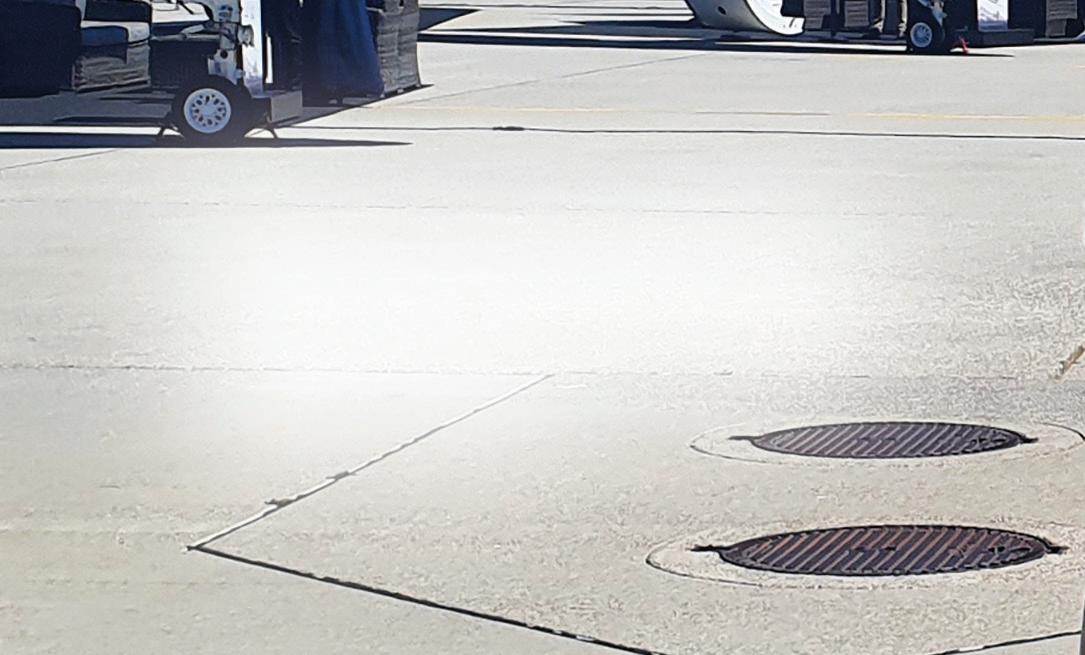
RH: Well, besides welcoming American shareholders, we have received lots of positive feedback from other American and Canadian customers, so in order to facilitate further growth and offer local support, we decided to extend our team overseas. And here we are! Today our customers in the Americas can book flights using our mobile app while enjoying support from our US team led by Dafne Isasi. Operators have embraced us and our concept as well. You could say we have been given a very warm welcome. It is exciting to see how quickly our US branch is expanding in the world’s largest market.




RH: We do like to call ourselves an Airbnb for private jets. I know this is an overused analogy, but it is very descriptive
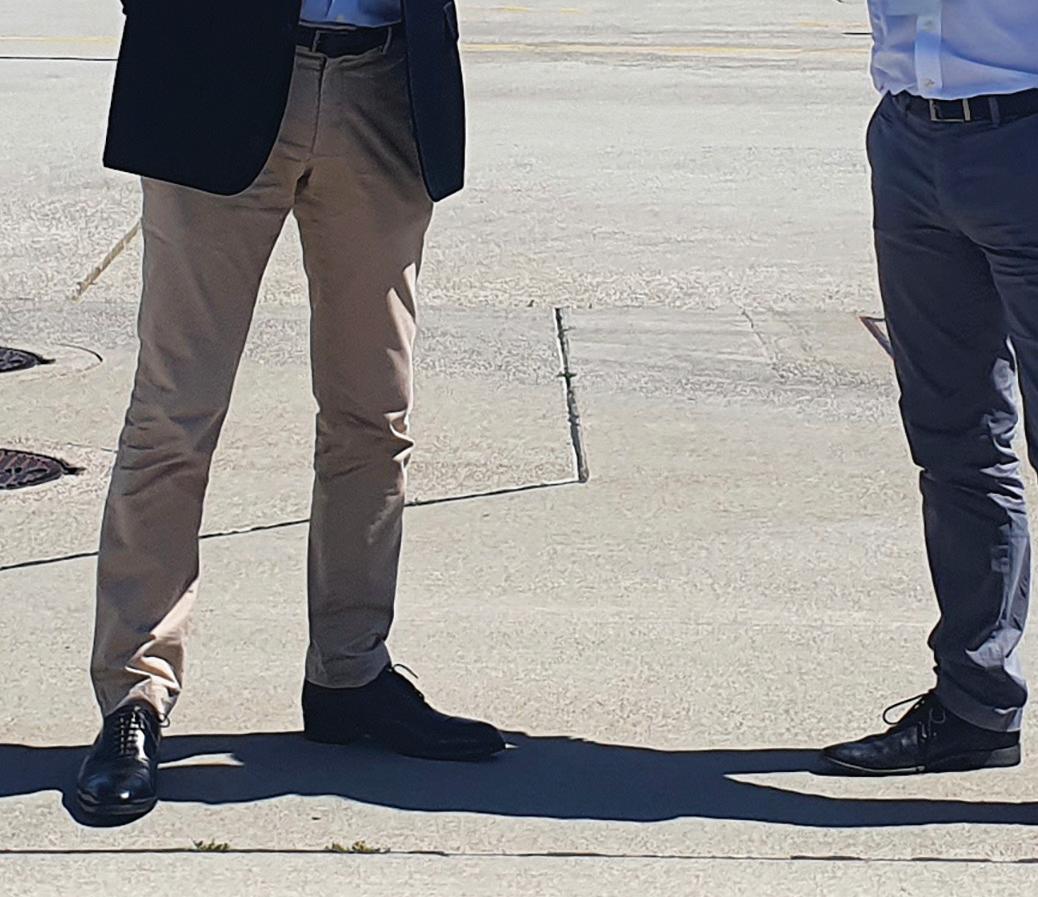

“ My Partner, Pascal Barreau, and I decided to do something no one else in the industry had yet done.. .”
Richard Hekker, founder and CEO of OPES JET, talks to Anthony Harrington about the reasons he started a private membership jet club
what we do. We put the users of our app in touch with the owner/operator of the aircraft we feature in the app. For that, we have built two apps. The first app is an application









customers that they access via an iOS (Apple) device, be it an iPhone, iPad, or latest MacBook - anything that runs native iOS.


“ For the operators, we built a second app; a platform that allows them to manage their own portfolio of products that users will see when they use the customer app. Best of all, this platform is completely free for operators.”








































For the operators, we built a second app; a platform that allows them to manage their own portfolio of products that users will see when they use the customer app. Best of all, this platform is completely free for operators.

The key is that customers using our app to book flights know exactly what they are paying for the flight. Operators know exactly how much that flight is costing them, what their profit on the flight will be, and they can see what their competitors are offering for that same flight. It is a proper Dutch auction.





There are a number of benefits to this. First, we tell the customer what the average price is for the point-to-point journey that they want to make. Then we show them the various prices that operators are offering. Say the average price is $25,000, however, if one of those operators has an empty leg that fits the customer’s parameters, they may say, hey, I can do that for $7,000 and still make a profit.
Now, if the customer was going through a broker. The broker may well find an empty leg flight that suits their potential



























customer, but which broker is going to offer that to their customers at $7,000? They’d offer it at $18,000, still well below the customer’s budget, and pocket the difference.


With our app, everything is transparent. We charge a four percent service fee on every flight. That’s it. This ensures that the customers will always get the best deal available if they choose to use OPES JET.








Another unique feature of our model is that customers have to apply to become a member of OPES JET. When you apply, there is a waiting list. If you have been recommended by an existing customer, then your application will tend to get expedited.

AH: What do you do with people who have applied to join but have never flown privately before?





RH: We send them an email explaining exactly what they can expect from flying private. So, if they still want access after they know what to expect, then they will be fast-tracked to membership.

“
Today our customers in the Americas can book flights using our mobile app while enjoying support from our US team led by Dafne Isasi.”Dafne Isasi





“ We do not charge operators at all. Transparency is very important to us. The customer pays for everything, and we show them everything. There are no hidden fees. They can see all the cost factors and how the price is made up.”
AH: Do you charge operators to come onto your system?
RH: We do not charge operators at all. Transparency is very important to us. The customer pays for everything, and we show them everything. There are no hidden fees. They can see all the cost factors and how the price is made up. There can be no kickbacks to us from operators at the customer’s expense, as our transparency extends from the customer to the operator.
At the moment, our sales conversion rates are around 20%, which is one of the highest in the industry today. However, we expect it to increase to 40% as more of our customers begin to understand how our bidding system works.
Of course, operators compete on a range of different factors, not just on price. Some may offer a bigger, newer aircraft or a higher level of service for the same price. Operators can spice up their offering with a lot of extras. Customers can see exactly what is on the table and can negotiate directly with
operators through our interface. The customers make their own choice among the competing alternatives.
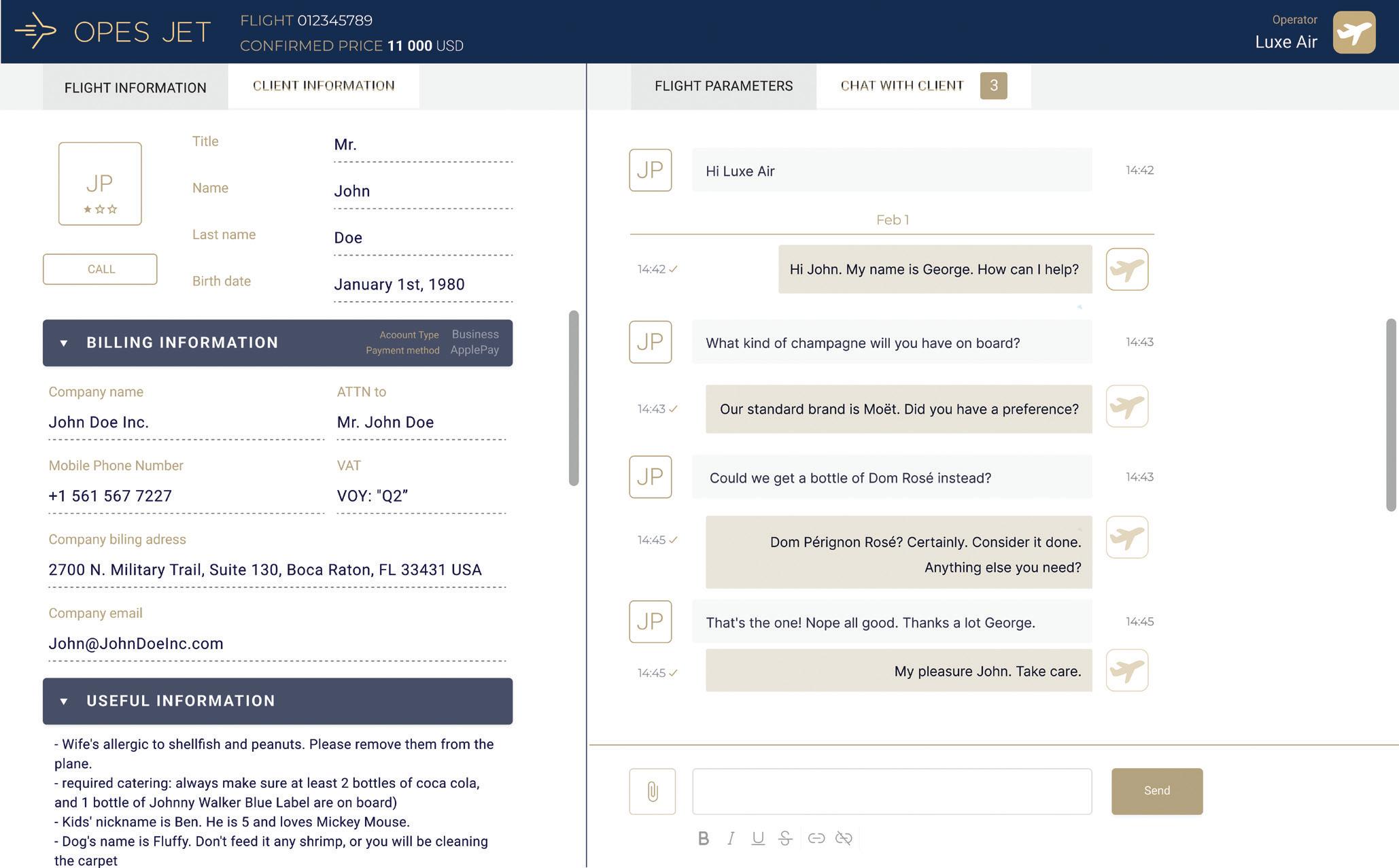
A broker will work to maximize the gap between what the client is willing to pay, and what the operator receives. Pushing their customers’ prices up and the operator’s prices down. On OPES JET, there is no gap. Both sides work together transparently to find the most effective compromise.
This is another reason why we built the OPES JET platform, namely, to avoid a race to the bottom. As an operator, you can see all the prices a customer has received, so you can avoid underselling yourself – or pricing yourself out of the market.
The average broker takes a 15 percent commission on a charter where there is no transparency on the final price. We ask four percent on a fully transparent amount.
AH: We are in an unusually strong period as far as the charter market is concerned, with lots of people wanting to avoid crowded airports and crowded commercial airlines. How well do you think your business model will work if there is a downturn in the charter market?
RH: We are asking people who fly private or are thinking of flying private to install our free App. They pay no yearly fees, sign-up or subscription fees, and will always ensure they have access to the best deals.


Pre-Covid, there were roughly 200,000 people who flew private regularly. That number increased to over 300,000 in 2021 and today it has nearly doubled again to over 500,000.
A recent study showed that in the US alone there are probably around a million families who could afford to fly private.

Since Covid, people have realised that flying private is a tool of convenience. It gives you full flexibility regarding your travel schedule, as to when and where you leave, and who sits with you on the flight. Plus, it is always a direct flight. This market is not going to shrink going forward.

If you’re a Part 135 charter operator, visit https://ops.opesjet.com to get started. |BAM
“ We are asking people who fly private or are thinking of flying private to install our free App. They pay no yearly fees, sign-up or subscription fees, and will always ensure they have access to the best deals.”




 Eve Laurier, VP of Marketing, Communications & Public Affairs at Bombardier, talks to Anthony Harrington about the role of women in business aviation
Eve Laurier, VP of Marketing, Communications & Public Affairs at Bombardier, talks to Anthony Harrington about the role of women in business aviation

AH: Eve, what can you tell us about your early career and ambitions before you joined Bombardier?
EL: I started working while I was still at university at Molson, the iconic Canadian brewery as a sales and marketing representative, I believe I was the first woman in that role. I was so eager to make my place in this world, I worked hard, took it very seriously and got noticed. But then I needed to decide whether to continue my studies or my career, so I decided to finish and get my diploma as a Bachelor of commerce.
My “North Star” has always been about finding a path where I feel I can make a real impact.

This has been true in all the positions I have held. I started as an executive in one of the most prominent French-Canadian advertising agencies, Publicis, as an account director for L’Oréal; then moved to Richter, a large financial consulting firm here in Quebec. Then I was appointed to take charge of Edelman for Quebec, the world’s most important private PR firm. I was there for around six years.
The main reason why Edelman hired me was that it is a US-headquartered consultancy and wanted to win clients amongst the top companies in Quebec. It is difficult for US companies to make real headway in Quebec, but with Edelman, we positioned ourselves as a large international firm with a footprint in Quebec. As such, we won a lot of Quebec businesses that wanted access to international markets. It was a great position for me to build up trust and bring the right talent on board.
AH: Then you got the call from Bombardier. How did you feel about that?
EL: Bombardier is a pillar of the Canadian economy. We have nearly 10,000 employees in Canada and over 14,000 in the world, and the supply chain is mostly in North America, so it’s an important player in our ecosystem. Bombardier


“ Bombardier is a pillar of the Canadian economy. We have nearly 10,000 employees in Canada and over 14,000 in the world.”
has a tremendously exciting story behind it. The company has changed many times over the course of its 80-year history. Everyone knows Bombardier as the inventor of the Ski-Doo snowmobile, although that is now part of a different company.
Then there were the trains and the commercial and business aircraft. Now Bombardier has repositioned as a pure-play business aviation aircraft company. The repositioning is a clear success and it’s a new story that needs to be told to many different stakeholders, in different ways and various channels. What an opportunity for someone like me, who is passionate about brands, purpose and people.
Furthermore, another major reason for me in joining Bombardier was the opportunity to work closely with Éric Martel. He is a well-respected CEO in this industry and I learn a lot from his leadership style which embodies values that are key for me: transparency and humility.
AH: Let us turn to the role of women in business aviation and your own experience and thoughts on this.
EL: I have said this many times, and in many different speeches and presentations: as a woman, you are very often going to be presenting to a board that is largely or wholly comprised of men. At my very first board presentation, when I was just 27, I was facing a Board with fifteen men and not a single woman.

I looked at my male colleagues, who just strolled into the boardroom as if they owned it. For my part, I had to work hard to imagine myself as a fully confident person with every right to be there. There is no doubt that it took a lot more energy and commitment for me to walk into that room than it did for my male colleagues.
So, how do you overcome this? My advice to myself, and it is the same advice I give over and over to groups of women




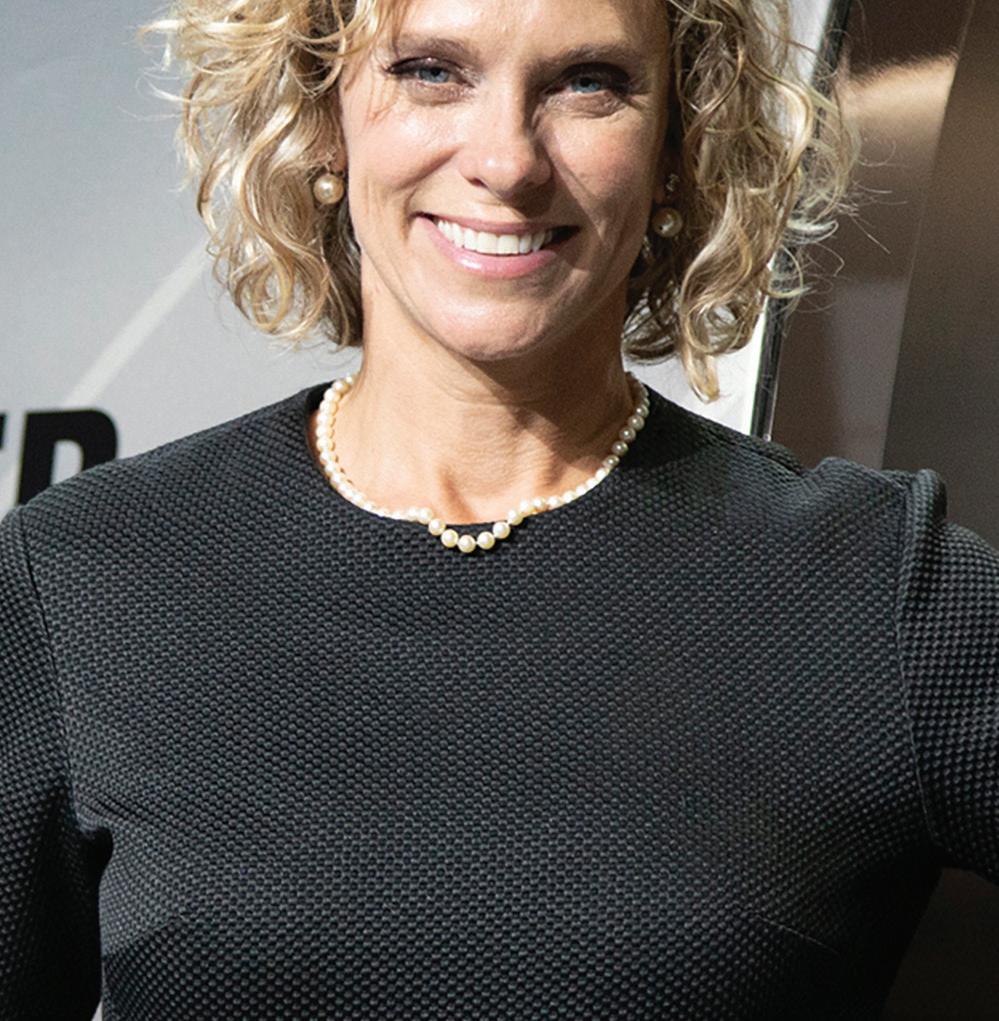



“ My advice to myself, and it is the same advice I give over and over to groups of women across the business aviation sector, is to take the time to strategise and really plan your presentation. Make the difference your advantage.”
across the business aviation sector, is to take the time to strategise and really plan your presentation. Make the difference your advantage. Now you have to connect with men who are used to connecting with men on a management level, not with women. So, you need to know how you are going to make that connection.


I was working at the time in an accounting firm and I have to say that I never felt any bias against me. But there is this difference, as I have said, and you need to prepare accordingly. You have to think about how you dress, what your message is, your purpose and how you walk into the meeting. Perception is important. I never looked down. I owned my place at those meetings, no matter how I felt inside, I never let it show.
It is not about women versus men. It is about preparing properly, about over-preparing, if you like. It has always turned out to be to my advantage to over-prepare. I use it as a motivational factor.

AH: What has your experience been inside Bombardier?

EL: Today we have two women on the Executive Committee of Bombardier and gender differences are not even a factor. However, when I speak, I make sure that I have something important for my colleagues to hear. I say what I say with humility and respect but I make my point.



Recently, we had a tremendous event in Bombardier involving 60 women, all of whom were graduates of an intensive women-in-leadership course. We had a big ceremony and Éric Martel gave a speech. He told us: ‘Ladies, the boys’ club is over.” And that is absolutely the case. It was always going to be true that at some point, as an industry, we would have to pivot to a situation where ‘the boy’s club’ attitude is over and fades into history.
AH: Going back to that early experience of yours. I think if you did a role reversal and asked a man to present to a Board of 15 women that man would be more than a little nervous.
EL: (Laughs) That is so true. It reminds me of a charity event that a friend of mine and I organised for the Quebec breast cancer foundation. Some seven hundred women bought tickets to the event. To fund-raise, my events committee decided to auction off five tickets for a few men to attend this 700-woman event. The bidding finished at $1000 per ticket. I had the job of escorting the male winners into the party, which had been going for about an hour and a half or so. At the door, I think all those guys would have given me twice as much to be allowed to leave on the spot!!! So…that’s the way women feel when they enter an all-men Committee. But you shake it off, and you do what you have to do.

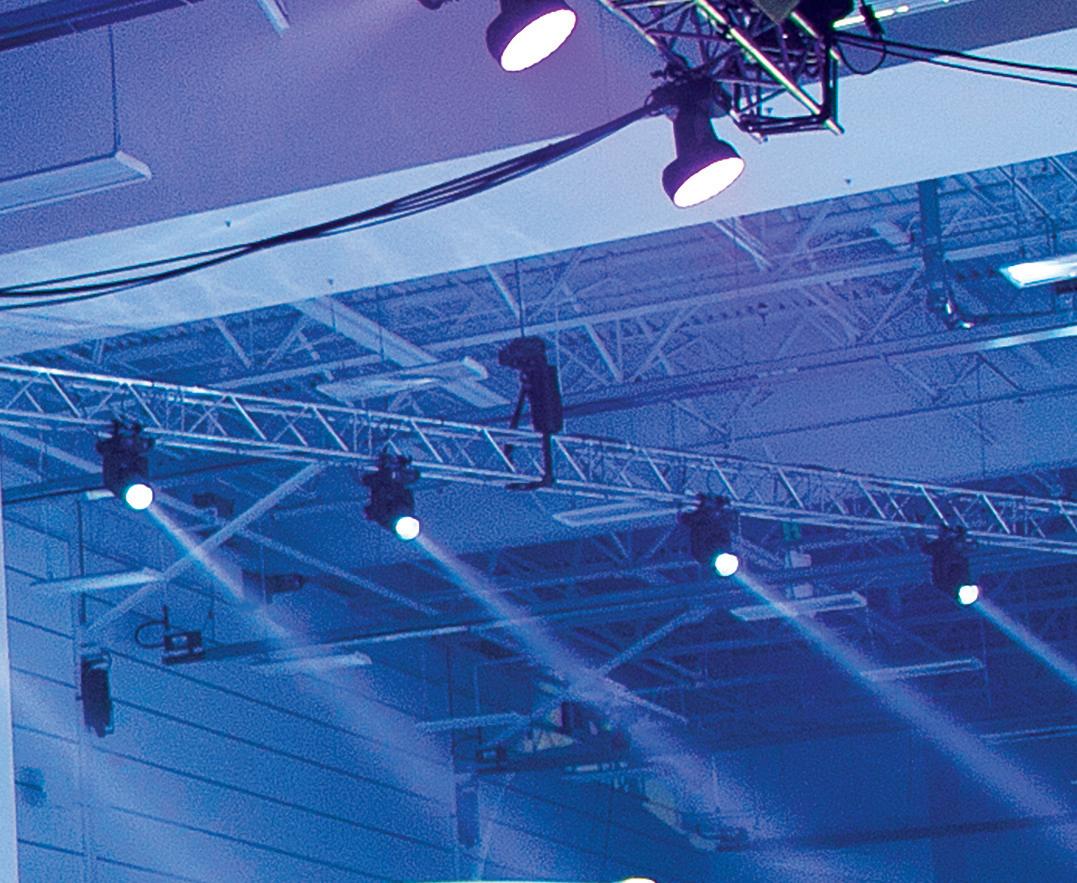


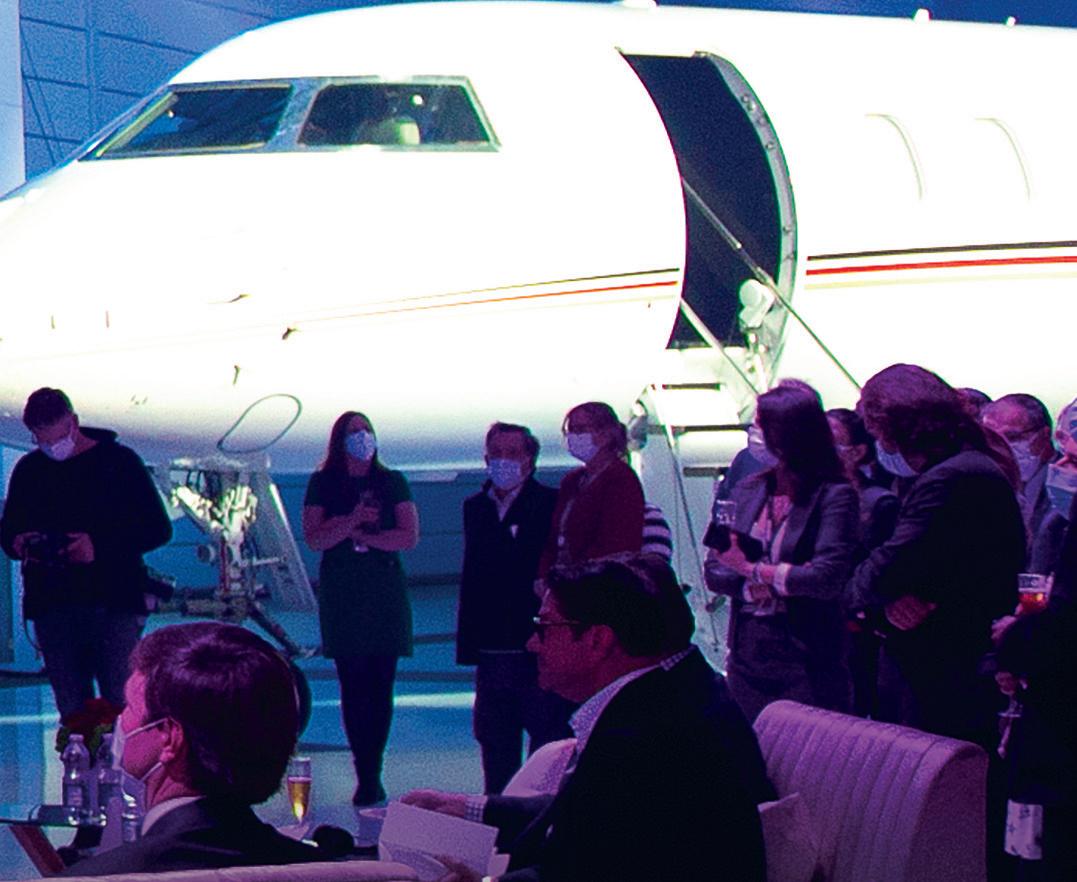







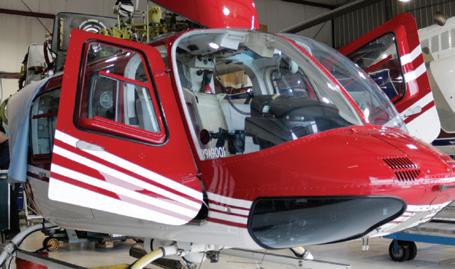
Jokes aside, you need women advocates in this business and you need men advocates. There is still some prejudice out there against women, of course. I am not naïve enough to say there is not. But as a society that prejudice is becoming more and more unacceptable. Women have to own that attitude.
I have as many tremendous male supporters in my business life as I have women supporters, and you need both. When you have a challenging presentation to make, you need to be able to call on your mentors and get some tips on how to strategise.
AH: So, you are confident that there is a real sea-change across the industry?
EL: Very much so. Today, if someone says something unacceptable, you don’t even have to speak up against the comment. Those around you in the meeting will immediately speak up to condemn the comment. There has been huge progress.
AH: Bombardier has a large number of highly skilled engineers. In my experience, engineers very often either do not understand or take a dim view of marketing. How do you react to that?


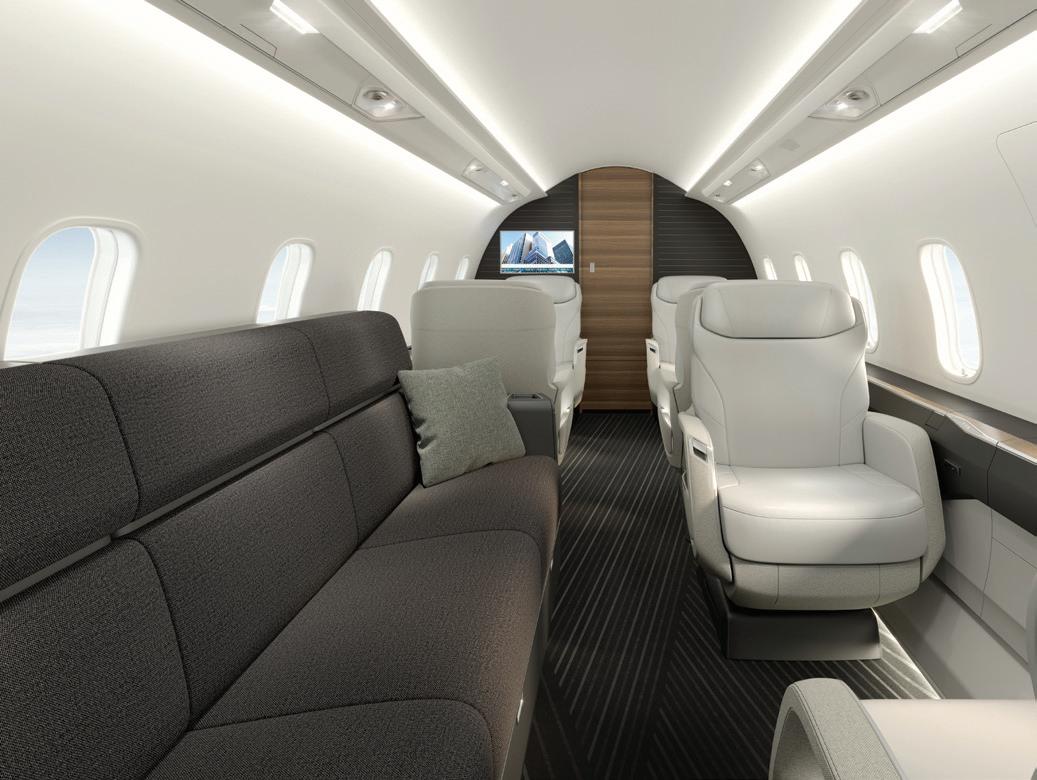
EL: We have no doubts about the value that we bring to the company. Our role is truly to support the sales, the service, the engineers and so on. We don’t do our ‘own thing’, we follow the strategy and we shape our projects to support what the company is out to achieve. It’s fully aligned. So long as we define meaningful KPIs and we know what our objectives are, we’re good. It is all about correctly aligning the marketing objectives with the company’s overall objectives.
For example, right now, with the war for talent, we are focussing a lot of our marketing budget on recruitment. Five years ago, this was not the case. There were a lot of people looking for jobs and it was much easier to fill positions.

We keep focused on putting the marketing dollars to work to achieve the current strategic objectives of the company as a whole.
One of the things we did when I arrived was to go to our operations team and work on understanding their balanced scorecard approaches. So now, when I present to my colleagues on the Executive Committee we use the tools that they value. This works well for my team. It ensures that everyone is talking the same language and working off the same, agreed KPIs.
Of course, marketing is a cost centre, rather than a profit centre, in any business. When you are producing and selling you generate revenue. We spend the company’s money, so we work hard at ensuring we go where the operational people need our support. We add leverage to their sales efforts. We are a service centre and I have no problem with that. Our talents are there to help our colleagues achieve their goals.
AH: Bombardier just opened up a huge service centre in Singapore. How does that relate to your efforts?

EL: Clearly, we have a global strategy for the Bombardier brand. We have to ensure that our brand equity is strong and coherent worldwide. Then on top of this, we put in place a local strategy for recruitment and for clients. So, our service centres are a huge part of our strategy and
the new Singapore centre is a clear instance of this. We are extremely fortunate in having a CEO, in Éric, with tremendous communication skills to support our brand equity. We just celebrated Singapore and Melbourne, but stay tuned for London and Miami (readers may want to check out the fun behind-the-scenes stuff at my Instagram @evelaurier_official).
AH: How involved are you in the whole sustainability debate?
EL: Sustainable Aviation Fuel is a huge priority for us. On top of this, we have our Eco Jet project. The idea is to figure out what the aircraft of the future needs to be. This is a huge 20-year vision that we have been working on for some 15 years already.
One of the advantages of being based in Quebec is that all our energy comes from hydroelectricity and renewable sources. All our facilities run off green energy and are as green as you can make them. We put the environment front and centre in everything that we do. The whole idea is to get better faster when it comes to lowering our carbon footprint and that of business aviation generally.
It’s important to remember that business aviation allows executives to get to their destinations quickly and efficiently,

“ Sustainable Aviation Fuel is a huge priority for us. On top of this, we have our Eco Jet project. The idea is to figure out what the aircraft of the future needs to be.”
Our business, like so many, was affected by the Covid-19 pandemic. Like so many others, we had to make some changes. But one thing that remains unwavering is our appreciation for and dedication to our customers.
We realize how important our name and reputation are to you. We’re very proud that Meridian is still owned and operated by the same family that founded our company in 1946. We still own and operate two award-winning FBOs, at KTEB and KHWD. We’re still your CAA preferred FBO at both airports, and we still meet the highest safety standards in the industry.
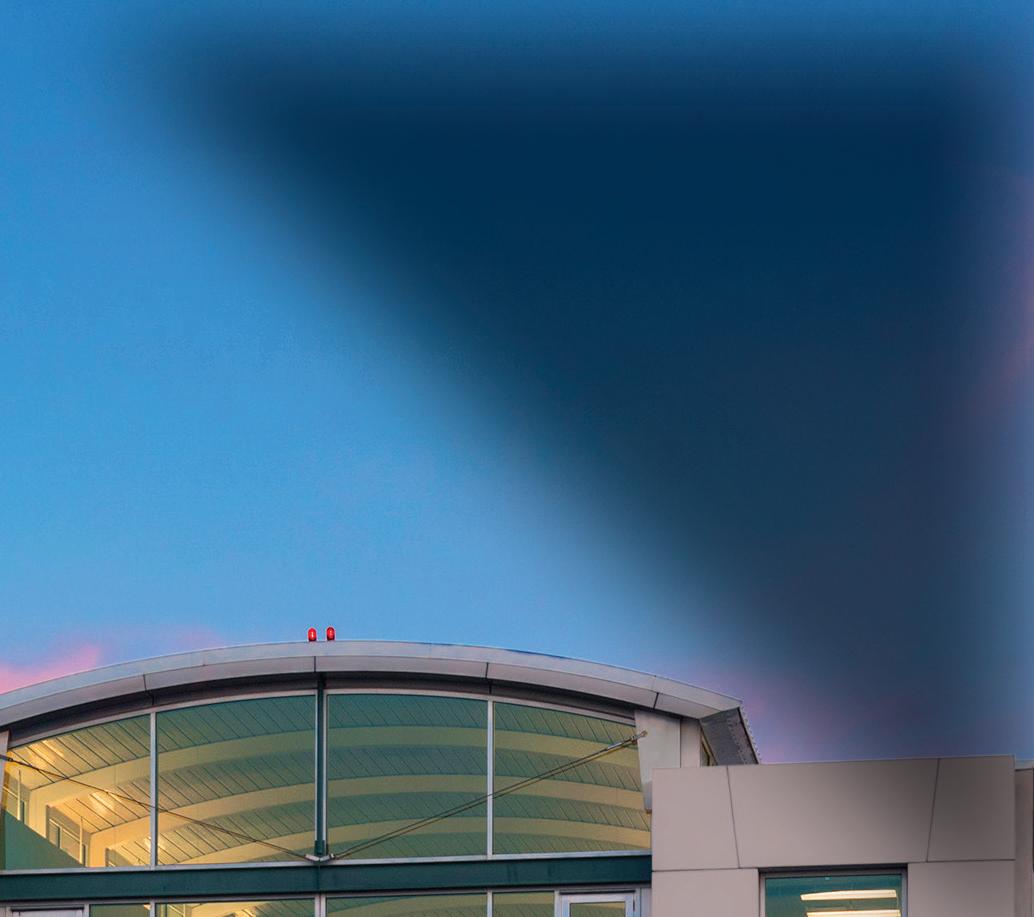

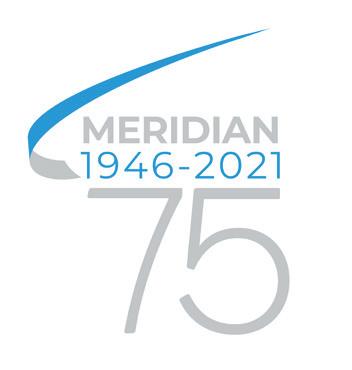

So, while time has changed some things at our company, our commitment to you never will.



Teterboro,


|

Time may change some things, but one thing remains the same: Our commitment to you.
“










So, I might be speaking to a young woman who says, “I don’t know, I don’t think I’m good at STEM subjects.” And I answer: “Don’t doubt yourself – you have the abilities! Are you interested in AI, or IT?” Business aviation, of course, is highly predicated on data and AI so we need these skills.”

often avoiding multiple layovers, and so it’s an important business tool for our customers. We also need to remember that while business aviation represents less than 0.05% of the world’s total greenhouse gas emissions, we’re still working very hard as an industry to reduce that.






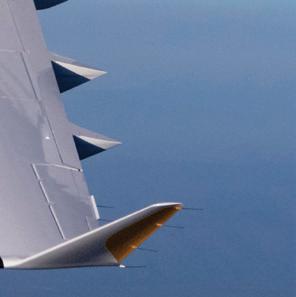





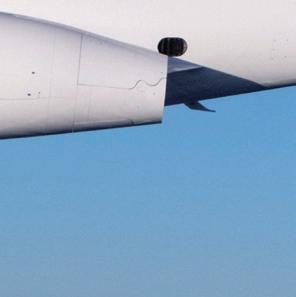
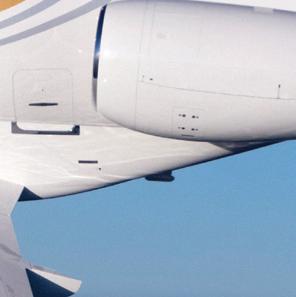

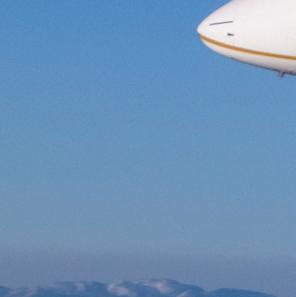

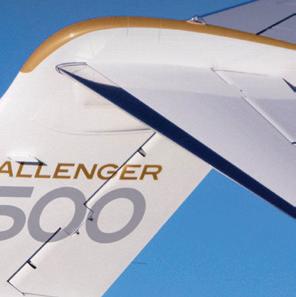




AH: One final question, Eve, how do we get more young girls thinking of business aviation as a great career?
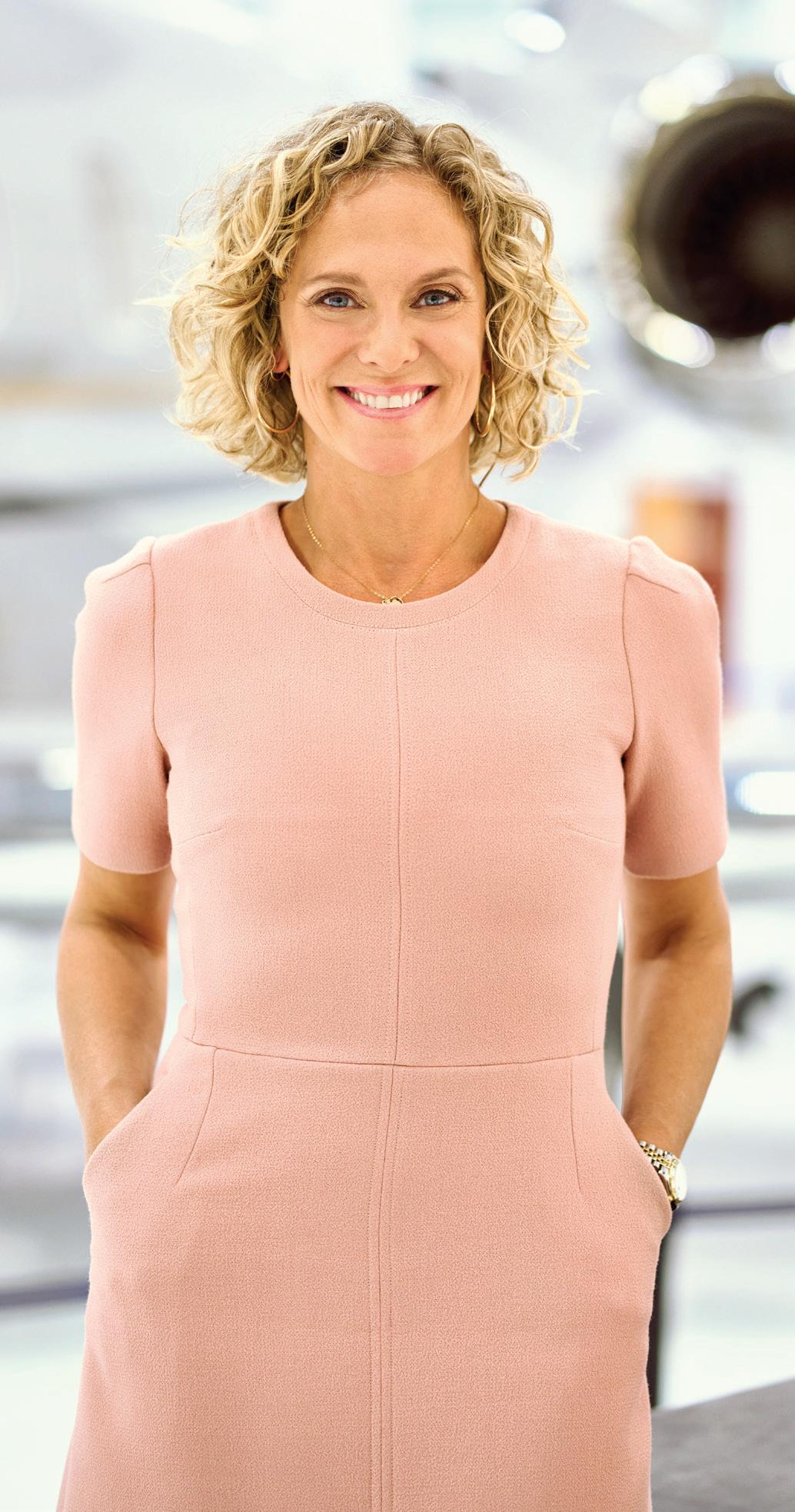



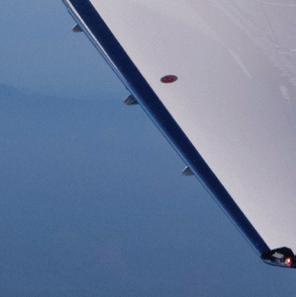

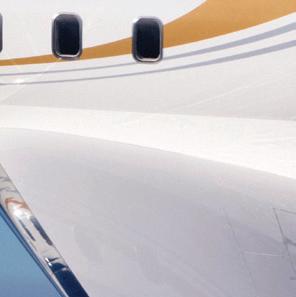


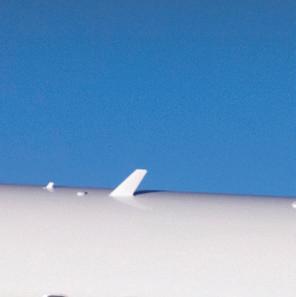








EL: I go to a lot of schools and I see a lot of boys, but not a lot of girls at the talks I give. It is not that they think this is unattractive because it is a male-dominated industry. The young women I meet these days are far too self-confident to think like that. It is more that they are simply unaware of the full range of different careers that this industry offers.
So, I might be speaking to a young woman who says, “I don’t know, I don’t think I’m good at STEM subjects.” And I answer: “Don’t doubt yourself – you have the abilities! Are you interested in AI, or IT?” Business aviation, of course, is highly predicated on data and AI so we need these skills. You can have many different careers during a lifetime in this industry. We have plenty of folks here in Bombardier who have been here for 30 years and have had six or seven very different careers within the company over that time. This industry is a great place to be! That is the message we have to get across.









David Helfgott, CEO of SmartSky Networks, talks to Anthony Harrington about the approaching launch of SmartSky’s Air-to-Ground (ATG) network




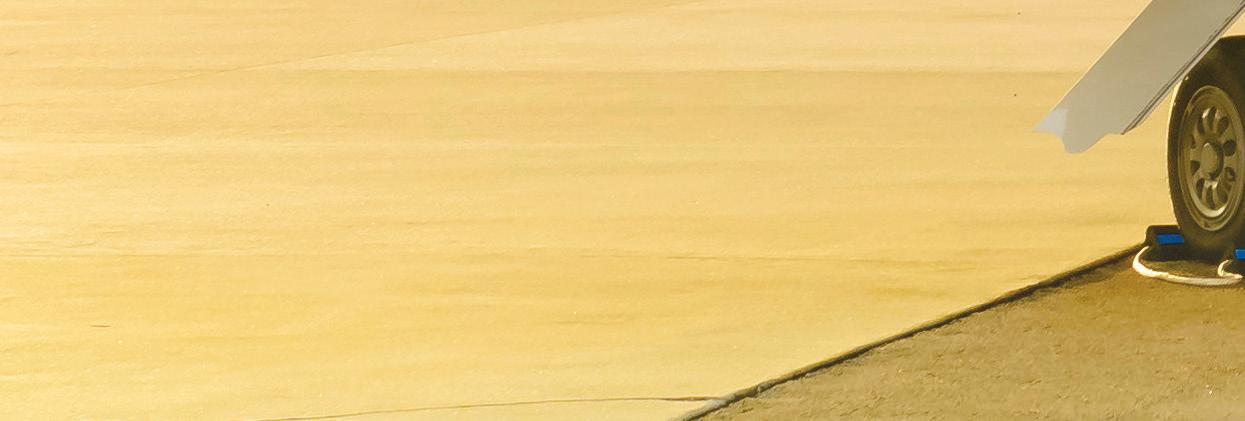







David Helfgott became CEO of Smartsky Networks in October 2020, taking over from Haynes Griffin, who continues as Chairman Emeritus. He has a stellar record in satellite and telecommunications and brings a wealth of experience to the role.





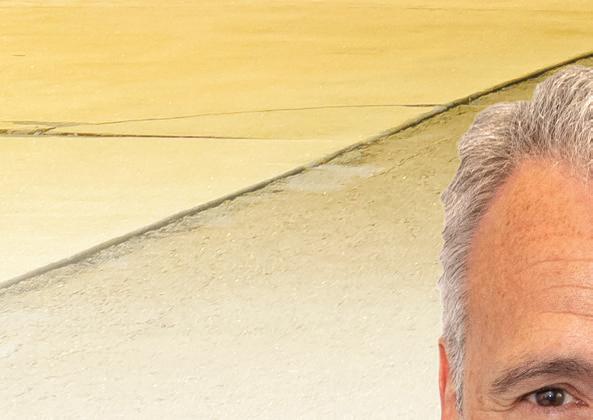
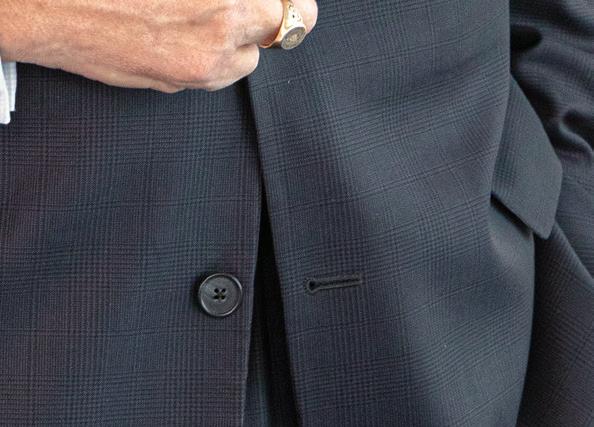

He began his career with GE’s satellite division, which became SES. He has served as President and CEO of Inmarsat Government, President of Tactical Wireless Communications at Cobham, President and CEO of SES Government, and, before taking on his role at Smartsky, he was President and CEO of the phasedarray antenna developer Phasor.



AH: How are things going with your rollout plan for your ATG system for business aviation, Dave?








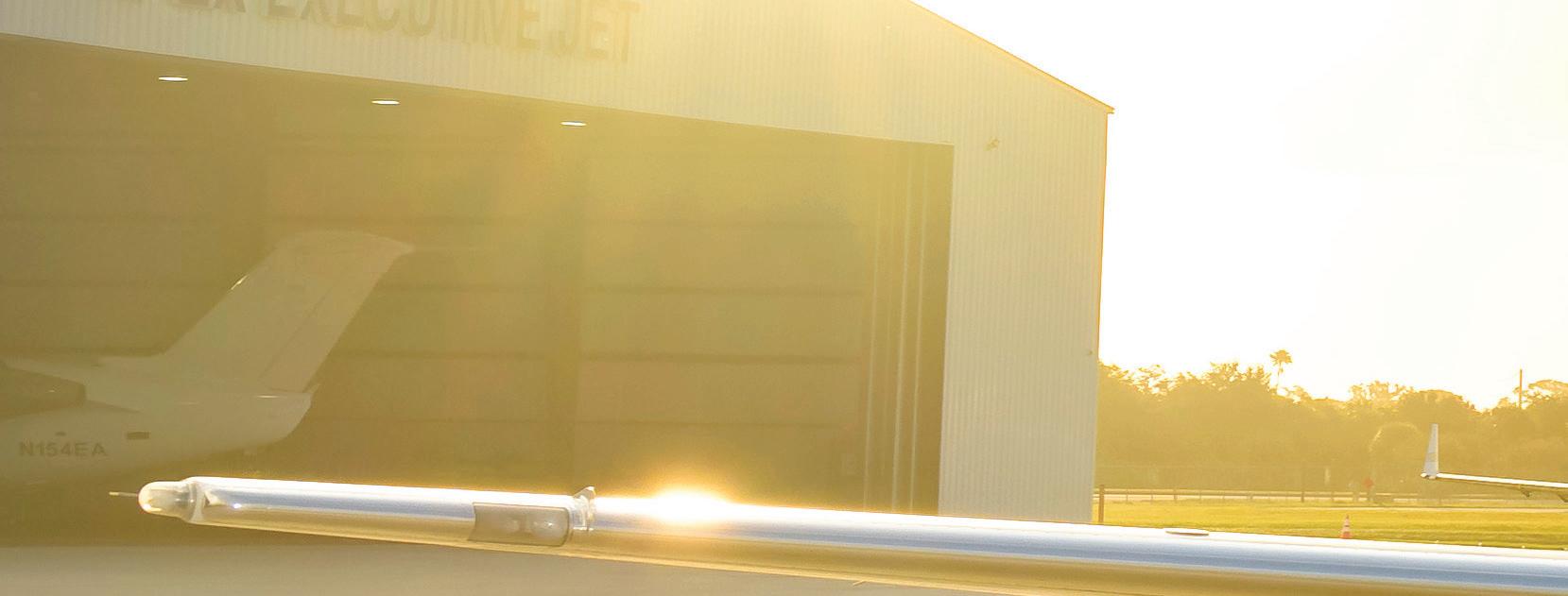

DH: The project is going really well. We’re rolling at a very good pace and hitting the mark on all our development goals. Things are rather manic around here. Halfway through



We should be able to have customers commercially using the service shortly before NBAA, or perhaps a little earlier.”
“


We have already signed up 20 channel partners, including value added resellers (VARs), original equipment manufacturers (OEMs) and maintenance, repair and overhaul (MRO) shops.”

August, we announced that we had achieved nationwide coverage for our network. We are now just doing the final bits of hardening up and getting everything into the stage of being commercially ready. We should be able to have customers commercially using the service shortly before NBAA, or perhaps a little earlier.










AH: What is happening on the partner front?
DH: We feel we are doing really well there. We have already signed up 20 channel partners, including value added resellers (VARs), original equipment manufacturers (OEMs) and maintenance, repair and overhaul (MRO) shops. We’ll be
































































































































































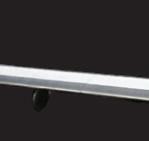
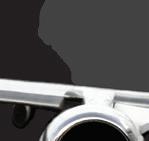

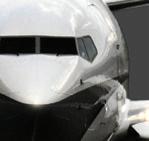



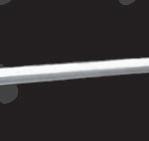
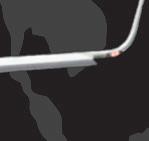


















































































































































































































































































































































































































































































































































































































































































So, we are waiting to see how that plays out. If they have really found a way of doing it without infringing our patents, good luck to them. As I say, the market is big enough for both of us. But if there is infringement, that’s another story.
AH: When I have spoken to people in business aviation about Smartsky’s offering, the typical response is: “It’s way too late. They should have brought their product to market years ago.” What do you say to that?
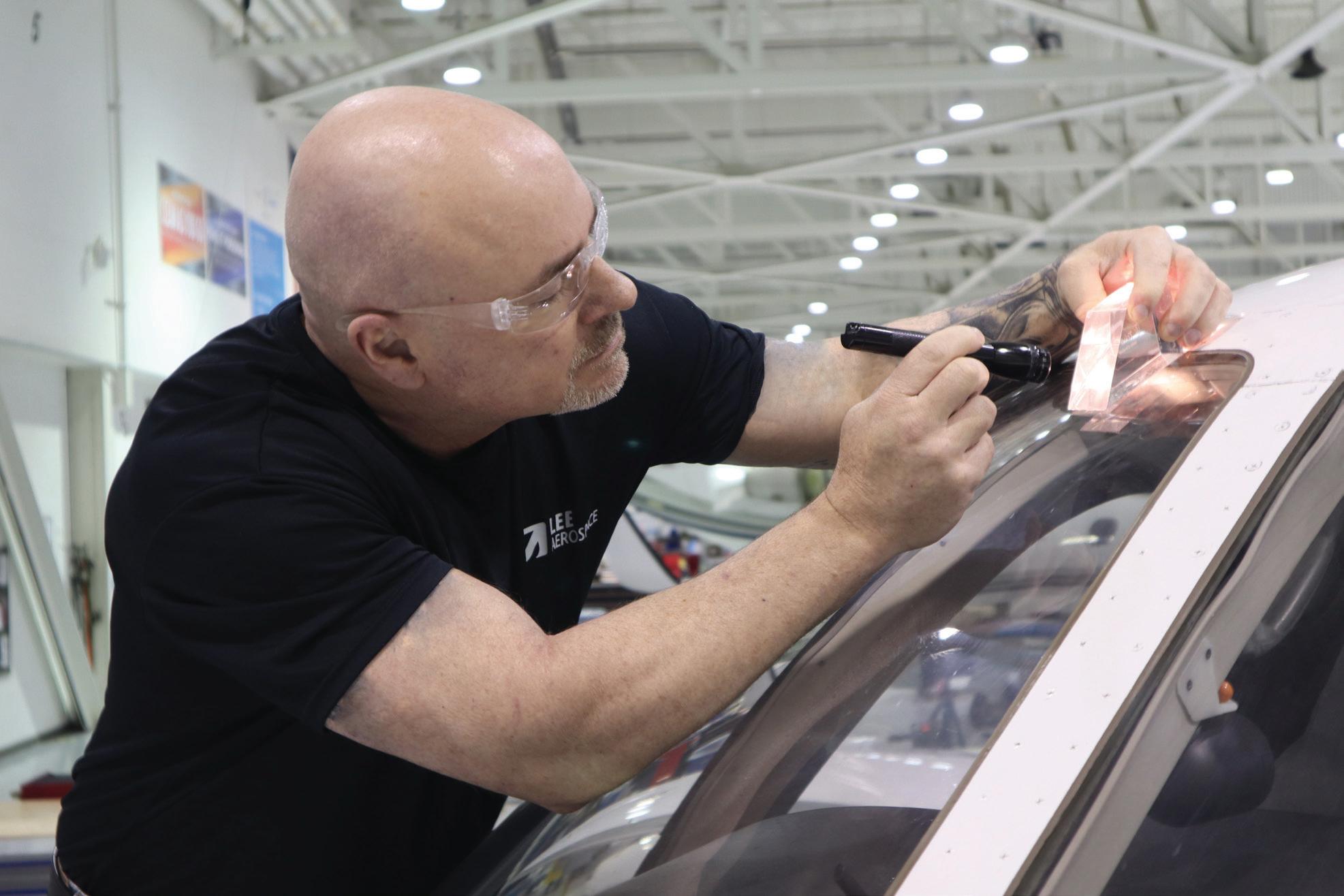
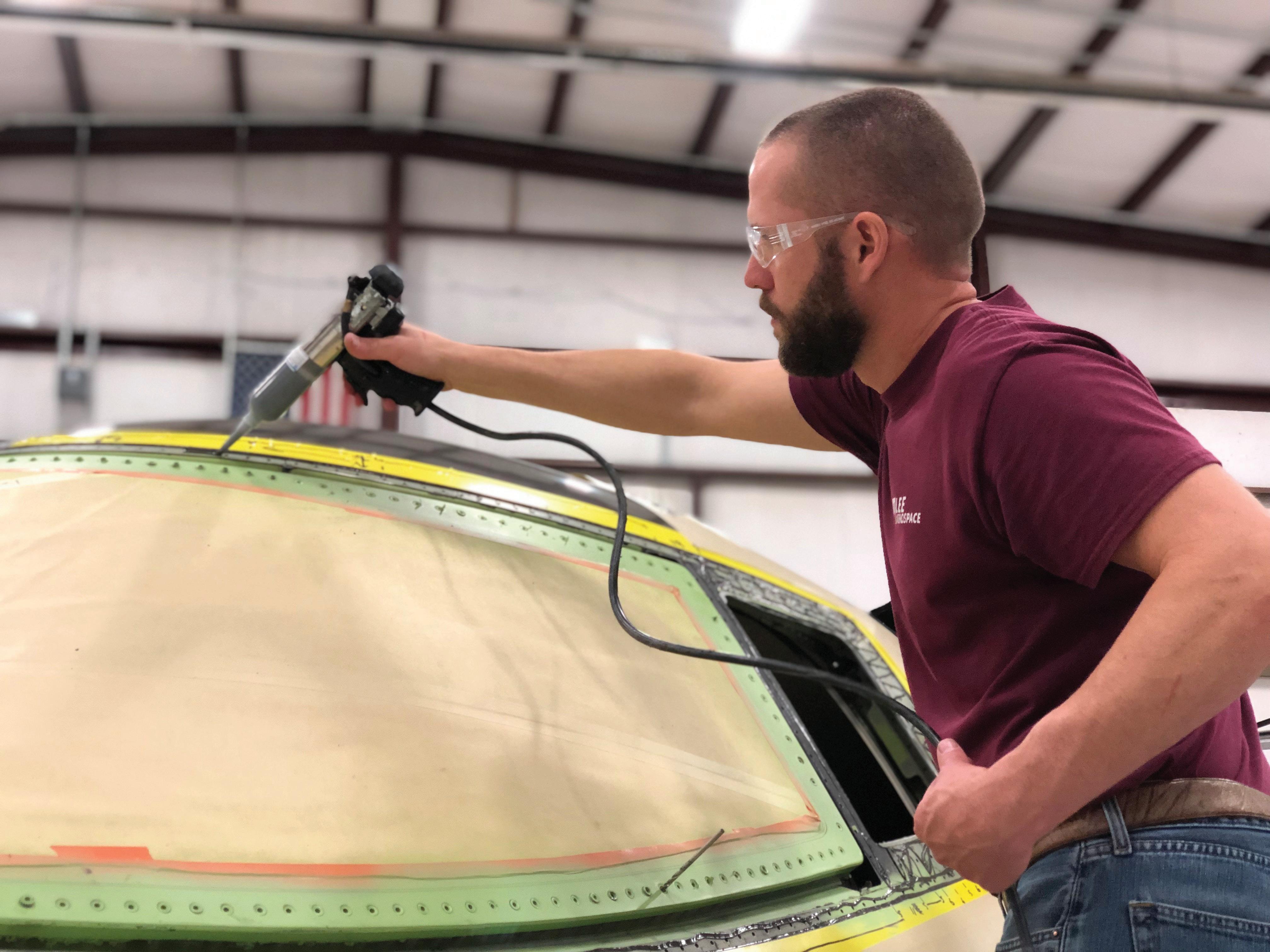






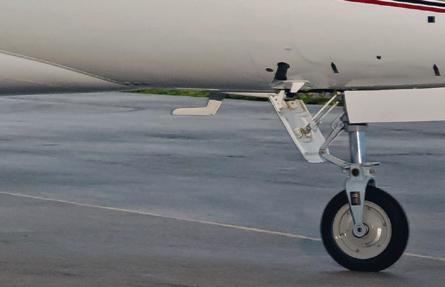





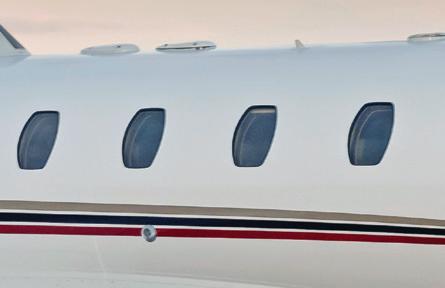






DH: Do I wish we’d brought it to market a couple of years or more ago? Absolutely. But this is very challenging, technically, and it wasn’t ready until it was ready. Now we’re just weeks away from commercial service use – and the reactions we are getting are very positive indeed. We are not counting on a lawsuit to determine our future. We are ready to compete with the incumbent and we are very comfortable with the cards we have in this game.
AH: Where do you see the sweet spot in the market as being, for Smartsky?

DH: Air-to-ground is a fantastic technology for smaller and mid-sized aircraft, where there is just not the real estate on the jet or the turboprop for a satellite-type antenna. Generally speaking, it is very hard to put anything additional onto an aircraft. There are always trade-offs. Size, weight, and power are critical, as is drag, and consistency of performance. It is very tricky getting it all to work together, but we have the right package now of size, weight, and power, optimised for business aviation and for the user experience.
AH: Where are you with beta testing?






DH: We have not announced a beta program, but we have been flying entry-into-service customers for several months now. That process comes to an end fairly soon and it has been very useful indeed for us. |BAM

“ We are ready to compete with the incumbent and we are very comfortable with the cards we have in this game.”





Q:
Brian, what was your first introduction to business aviation?
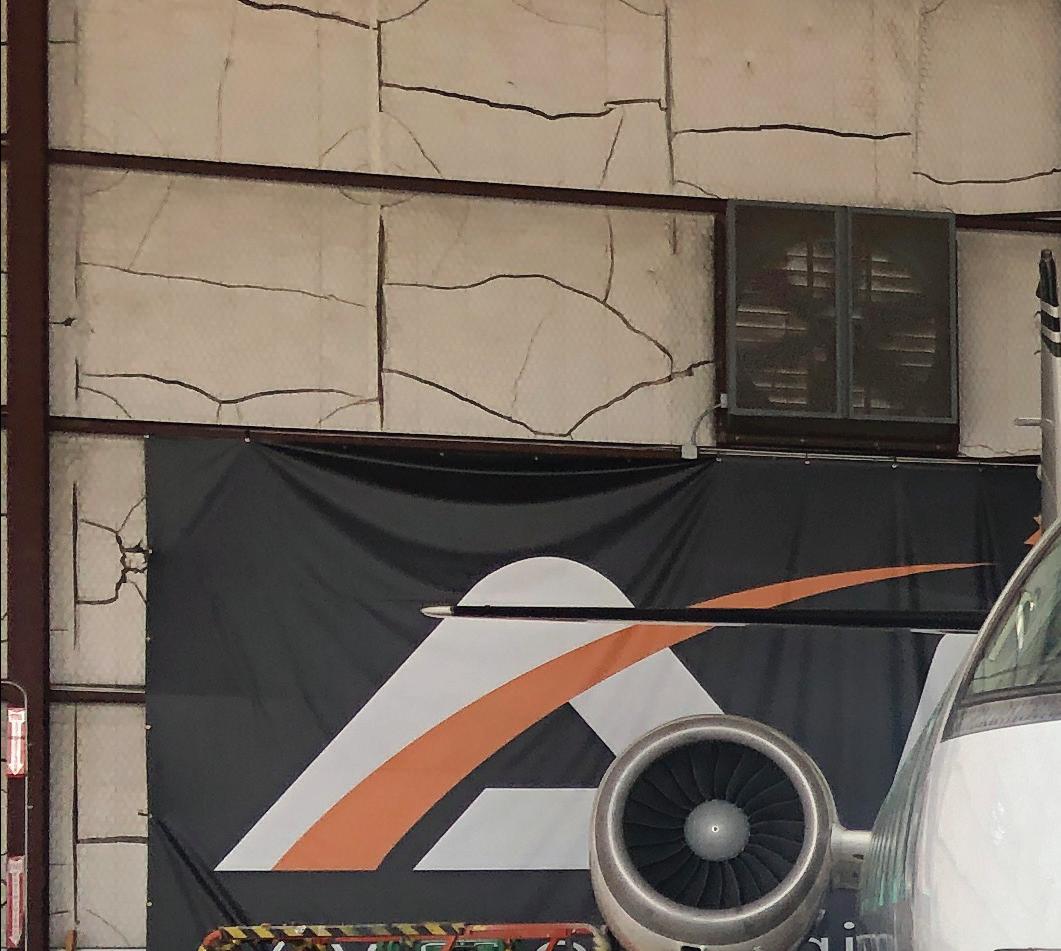
BA: I am a lifelong aviation person. My family has been in corporate flight operations all my life. My mother was a flight attendant on Gulfstream’s aircraft and my father was a captain on them. Aviation was all I knew growing up.

Anyway, I started my career in line service, then moved over to charter sales, and finally, to maintenance. Jim Balzer is my partner in AMP. He was in charge of our maintenance arm in our charter company in what was then called Regal Aviation.

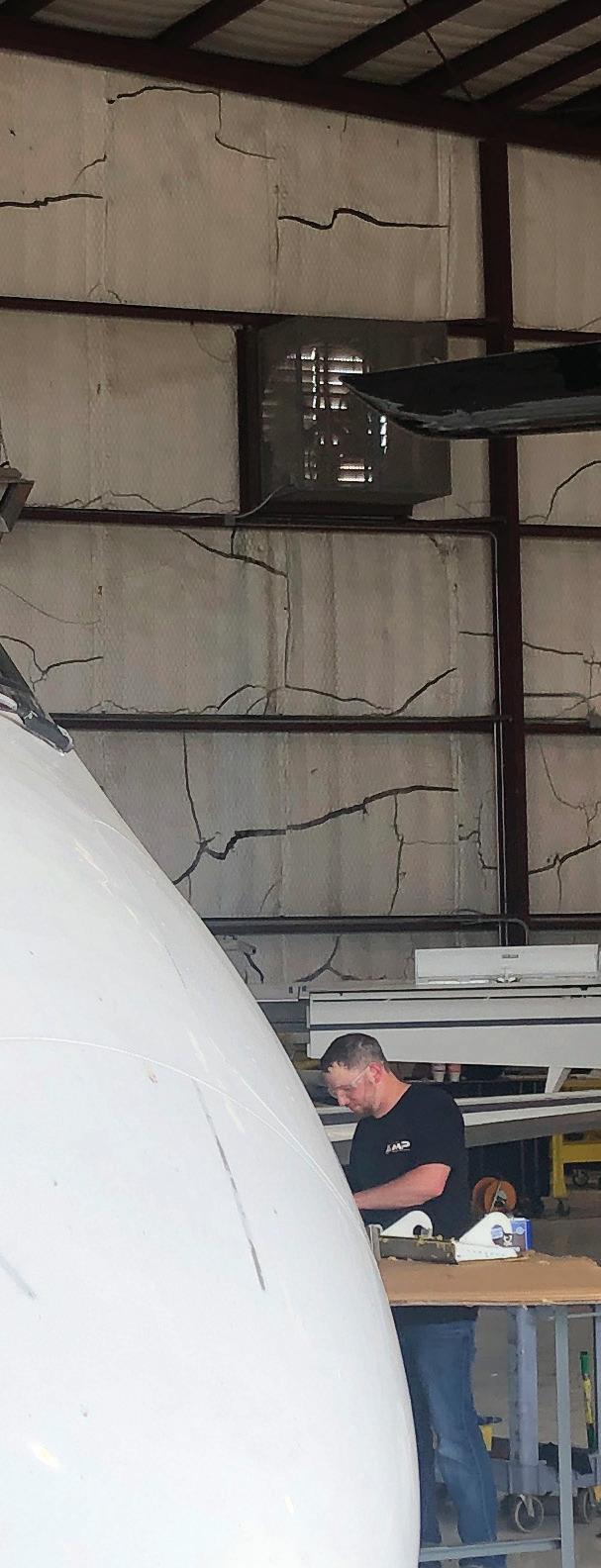
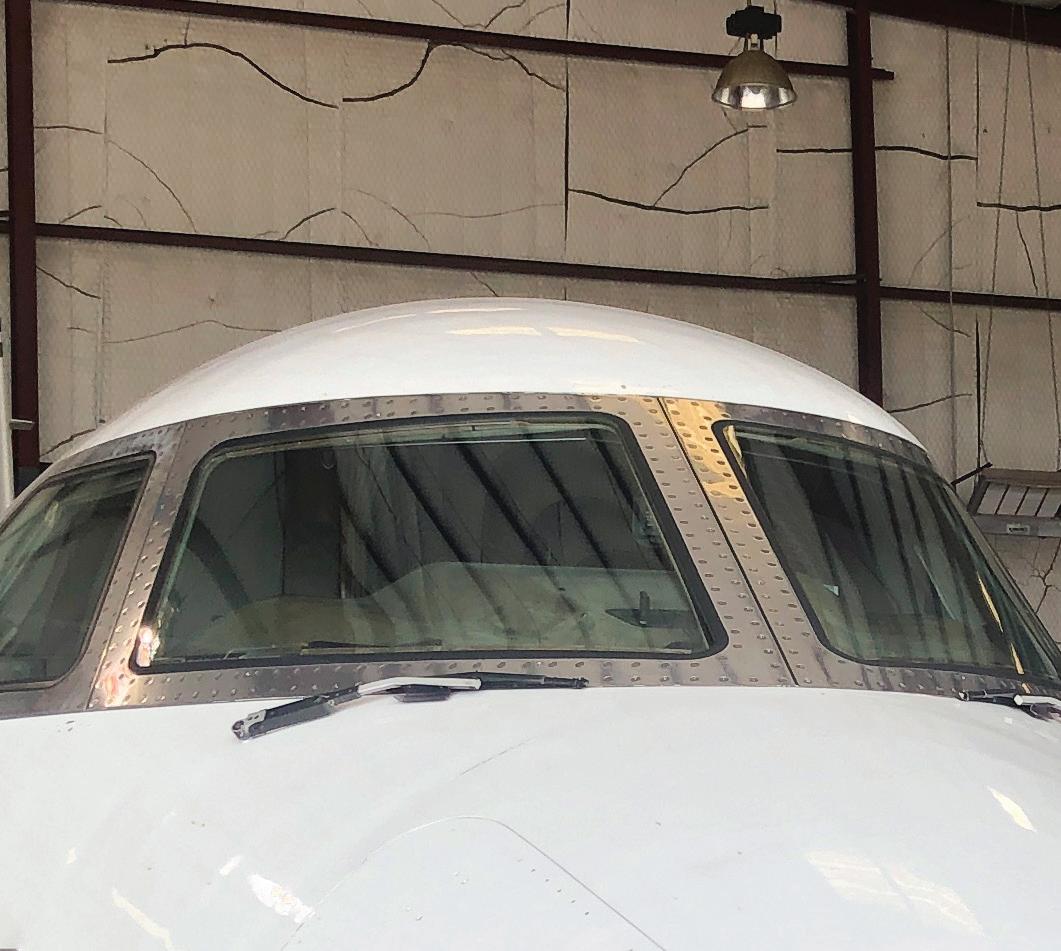
Getting into maintenance was a natural progression for me. My Dad had seven Gulfstreams in the company that we were running out there. That is kind of just what happens in aviation. You just find yourself in the middle of things one day and it goes on from there.

Q: Which did you prefer, charter or maintenance?
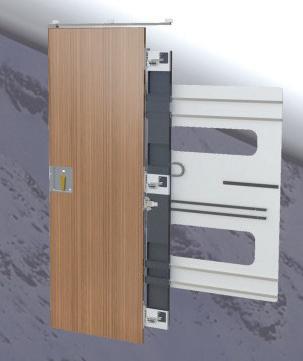
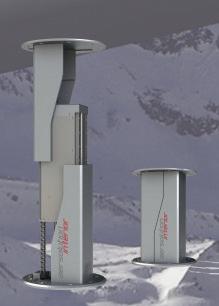






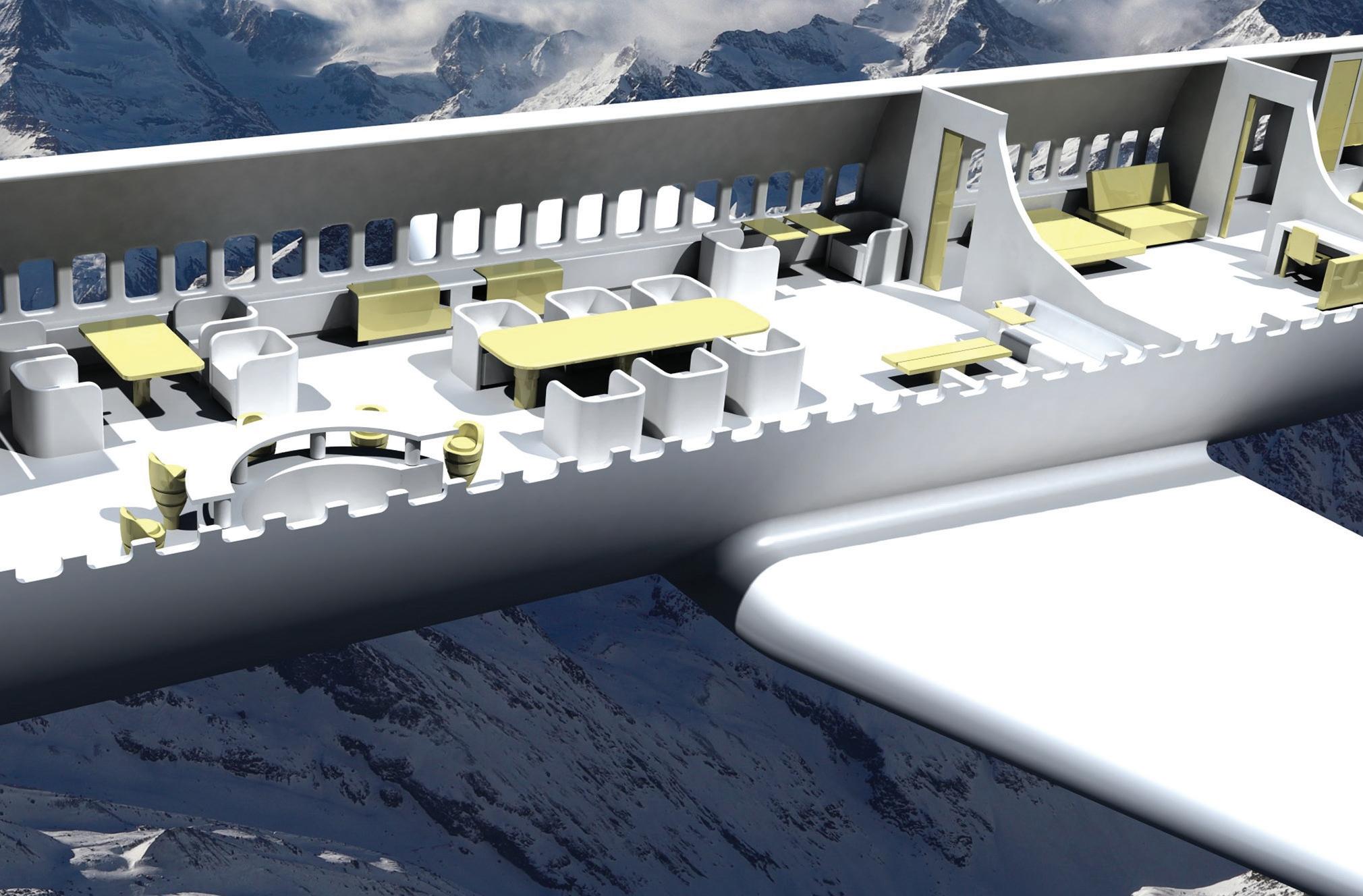

BA: No question, for me maintenance is much less stressful, though the two, maintenance and charter, actually go hand in hand. The charter side wants to be sure that the aircraft is going to be available when they have customers who want to fly the next day!
Q: How were things for you when the Covid pandemic was at its height?

BA: We had a bit of a weird start to things once Covid
CH-
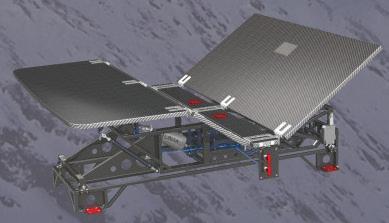







“ Without a doubt, the big uptick in charter that the industry is experiencing is driving a big demand for maintenance to keep the aircraft as available as possible.”
really hit. Things went quiet for a month or two but then it really picked right up and for the last 15 months it has been non-stop. In fact, I would say that we have seen even more growth over this period than we were expecting.
Q: Do you have a feeling for what has been driving the growth in demand for maintenance?
BA: Without a doubt, the big uptick in charter that the industry is experiencing is driving a big demand for maintenance to keep the aircraft as available as possible.
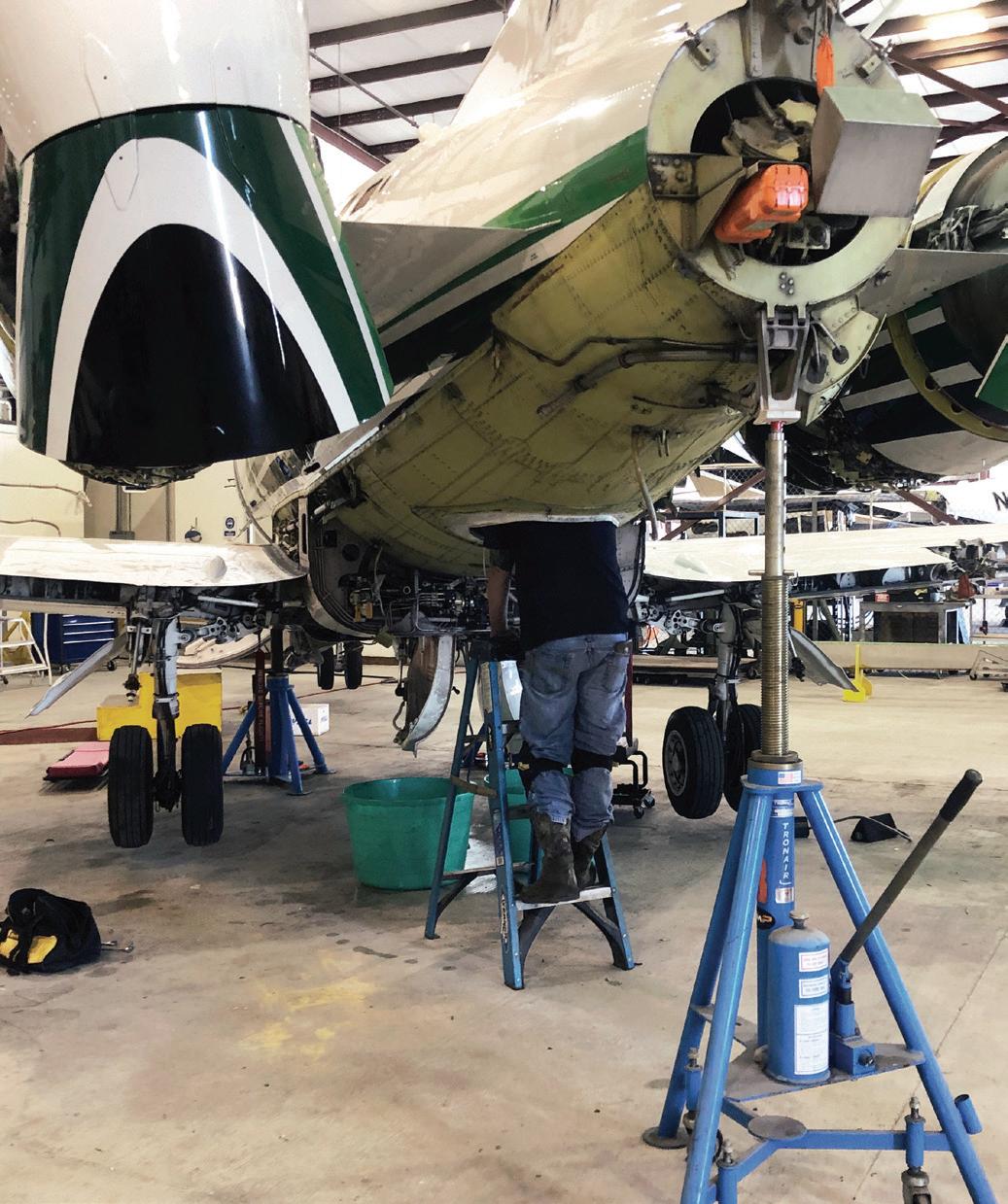

Another thing we are seeing is a very strong increase in the number of pre-purchase inspections that we are doing for clients. There are a lot of aircraft transactions happening at present and all of these need some maintenance house to do pre-purchases for the buyer and seller.
I would say that we are definitely getting a really good share of these. Part of the reason for that is that as a smaller maintenance shop we can be a lot more flexible for customers. Some of the larger maintenance shops are booked up a whole year in advance right now. We’re seeing a lot of demand ourselves, but we can generally work with a month’s notice if someone needs a pre-purchase.






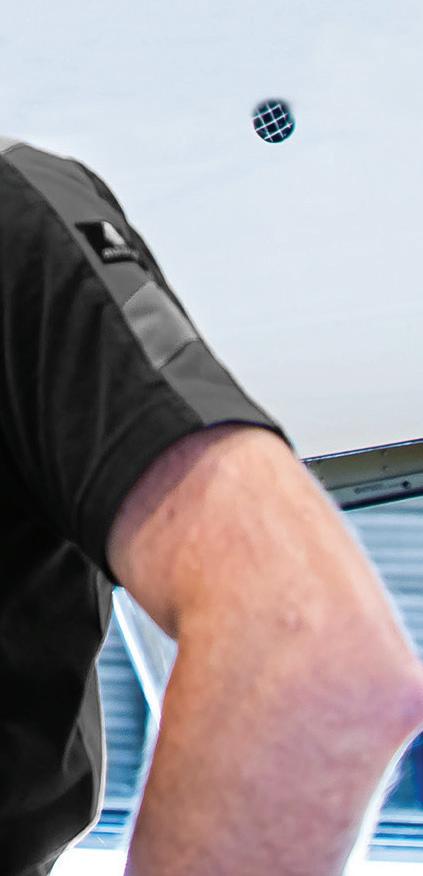

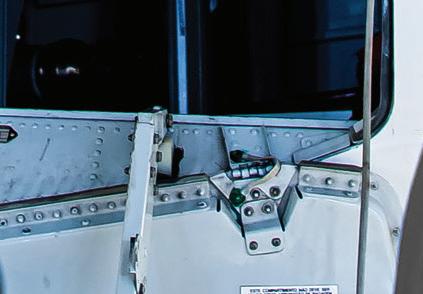
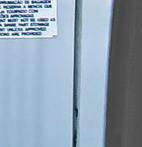

“
Q: Where is your main demand coming from?

Repeat business or one-off calls?
BA: We get a large percentage of our business as repeat business from existing clients. That speaks well to the level of service that we deliver. We also get a lot of referrals from our existing client base. The fact that Jim and I worked in Dallas together for so many years allowed us to create a loyal following. These customers witnessed how well we work as a team. They saw how that cooperation flows down throughout the company. That has been one of the major reasons for our growth.
In April of this year, Chris Hicks joined us and does a tremendous job of building relationships with existing and new maintenance clients. At the same time, we have a marketing person who is doing good work on social media and that sort

 Brian Allen
Brian Allen
These customers witnessed how well we work as a team. They saw how that cooperation flows down throughout the company. That has been one of the major reasons for our growth.”





































































of thing. However, before that, it was really just word of mouth and that was sufficient to keep us growing at a very reasonable rate.
Q: What steps have you taken since founding the company to ensure continued growth?

BA: My founding partner Jim and I split the duties when we started the company with me overseeing sales, marketing and customer service while Jim handled the operational and certification areas. In 2018, we searched for a full time CEO with experience achieving year-over-year financial success and meeting business growth objectives. We were fortunate to find Dennis Moore who had demonstrated experience with turnaround and start-up environments which required defining critical business drivers and establishing efficient policies to maintain and enforce company standards.
In addition to being CEO, Dennis is also a partner with Jim and I. Dennis has been critical in helping Jim and I transition AmP from a successful but “family-run” operation into a more polished organisation while maintaining the small shop feel for our customers and employees.
Q: Do you specialise in particular OEM models?
BA: I would not say there is a particular specialism. We have clients with a whole range of different models, including Gulfstreams, Challengers, Lear jets, and Falcon models. We tend not to work on the newest jets. Our sweet spot is between the older and the newer jets, particularly aircraft that are out of warranty. The owners appreciate the intimacy of the service that we offer. They know they will get a really personalised service from us. That is the only way that we know how to do things, and it serves us and our clients very well.
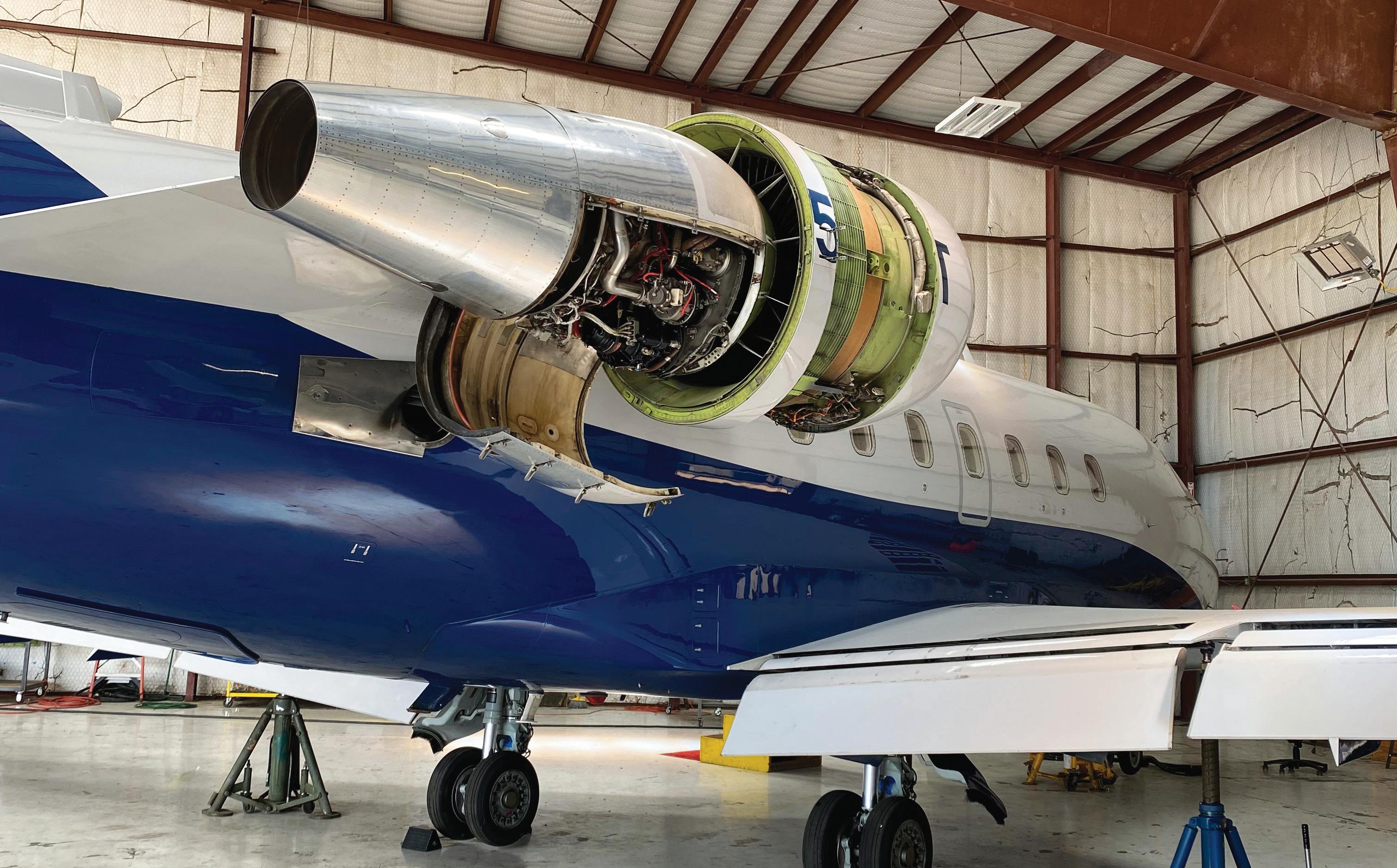
Q: Do you do aircraft interior refurbishments and paint?
BA: We don’t do paint jobs internally. We have trusted partners for that who are very near to us, geographically. So that works well. We do a lot of smaller-scale interior refurbishment work and we partner with some groups here for really big jobs. If we are going to do a big inspection and a major interior refurbishment we will put out the refurbishment side. We know what we are good at and where our skill sets are, and we stick with that. We use people who have good pricing structures and who have a similar ethos about client service to ourselves. We handle the management of the job for the customer and that works well. |BAM

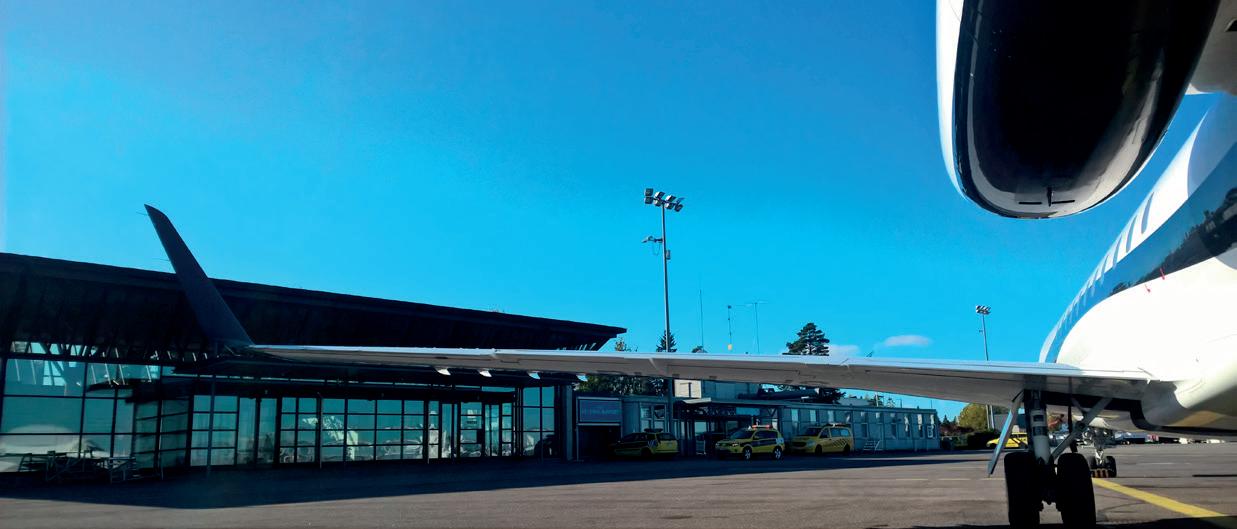
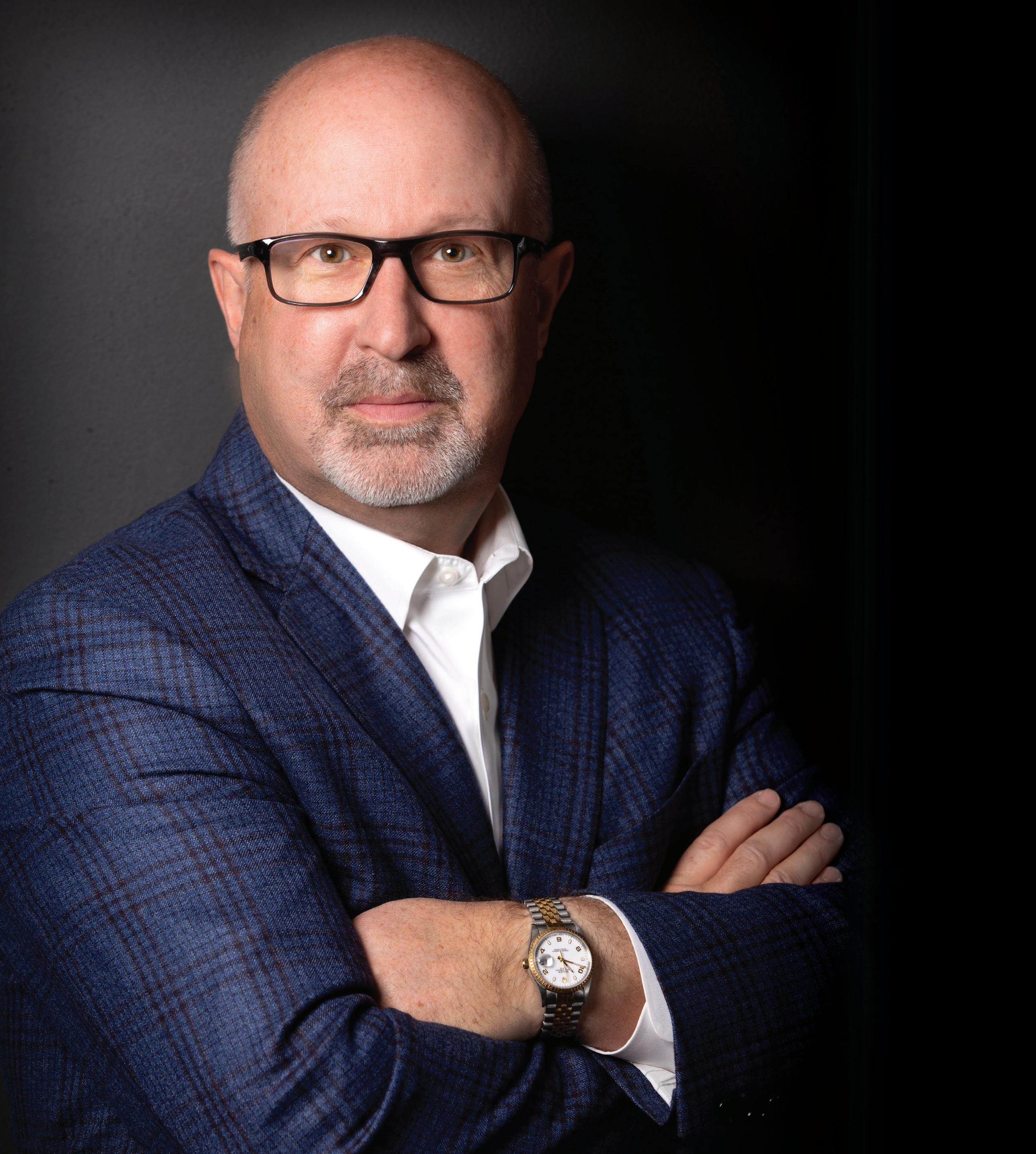
“I kept getting inquiries from acquaintances and friends, asking if I now had the time to help them with various projects and issues that they were facing in their businesses.”
Mike Caflisch, Founder and Principal, Strategy1 Advisors, on bringing strategy development to a range of business aviation companies
Serving Aircraft Performance Group (APG) as its CEO from 2014 to 2020, Mike Caflisch’s career has spanned 40+ years


various

within the aviation industry.
engineering, sales/marketing, product and program management, strategy,


business and corporate development,

senior business executive
experience in leading transitions, acquisitions, and integrations with big and small companies alike gives him
unique skill set to bring to business aviation companies of all sizes.










Q: Mike, what led you to set up Strategy1 Advisors after you left APG?
MC: I got to know a great many people over the years I was in the sector. Once I stepped down as CEO of Aircraft Performance Group, I kept getting inquiries from acquaintances and friends, asking if I now had the time to help them with various projects and issues that they were facing in their businesses.
If it was the right type of project with the potential to be impactful for the company I was happy to help. I
quickly realised that there was a need and a strong value proposition for businesses in what I was doing. So, a year ago I started Strategy1 Advisors with a view to giving back to the industry that has had such a positive impact on me throughout my career.
I was really interested to use what I have learned to help companies, particularly small and mid-sized companies. These size businesses usually find it very difficult, one could say impossible, to put the budget together to hire top consultancy firms to help them with major management challenges. There is a real need in the market for this kind of help for small and mid-sized business aviation companies.
Q: How would you characterise your strategy offering?
MC: I focus on business strategy development. Additionally, I help clients in linking their business strategy to operational performance. I have learned over the years how to scale the development of strategy initiatives so that they are affordable to mid-sized companies. This is really what I have been doing for the last 15 to 20 years. I can scale world-class processes and tools to the size of the organisation so that it is viable and works. That is my aim when I look at how I can help a client company. I look to see if the project
we are engaged with is one that can really make a difference to their business and help them to make profitable decisions.

Q: What are the primary strategic failures or missteps you see when you go into organisations?













MC: Very often what you find is that founder-led companies, or companies in leadership transition, are very good at doing entrepreneurial things. However, as the business matures and grows, the original vision gets blurred. You end up with multiple opportunities and directions which the business could grow into, but picking and choosing the right path or paths, without a coherent strategic vision, becomes very hit and miss.
“






Picking and choosing the right path or paths, without a coherent strategic vision, becomes very hit and miss.”



All too often you end up chasing every shiny object that comes along and you do well in none of them. We focus on helping businesses to define or refine their mission and vision statements at this stage in their growth cycle and we analyse their growth opportunities. We then work with their team to develop a comprehensive set of strategy objectives to help them pursue their objectives for the business in a coherent fashion.
Q: With Strategy1, are you helping companies outside business aviation as well, or are you strictly focused on this market?
MC: I do not focus exclusively on business aviation but it is where the bulk of my advisory clients come from. My clients in this market range from operators to product developers, maintenance organisations, data analytics firms, aviation service providers, and so on. My client list covers many different niches within the business aviation sector.


Q: Are there major differences between the challenges that larger companies face, and those that mid-size and smaller companies struggle with?


MC: There’s not really that much difference in the types of challenges faced, but the scope and scale can differ dramatically. Through Strategy1 Advisors, we make it possible to bring world-class strategy development to companies at the smaller end of the spectrum. I personally have worked strategy projects with companies ranging from large Fortune 500 companies to small start-up companies.
To bring strategy development at the level of a Fortune 500 company, to a mid-size or small company would be prohibitively expensive. However, I have been able to appropriately tailor and scale the Strategy1 Advisors offerings to be appropriate for the size of client that we are working with. We bring world-class tools in an affordable package to small and mid-size companies, and this is much needed in this market.















“ I have been able to appropriately tailor and scale the Strategy1 Advisors offerings to be appropriate for the size of client that we are working with.”





















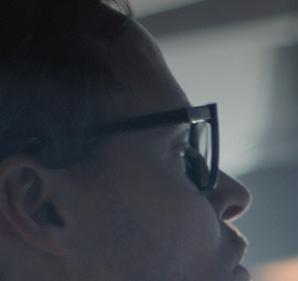




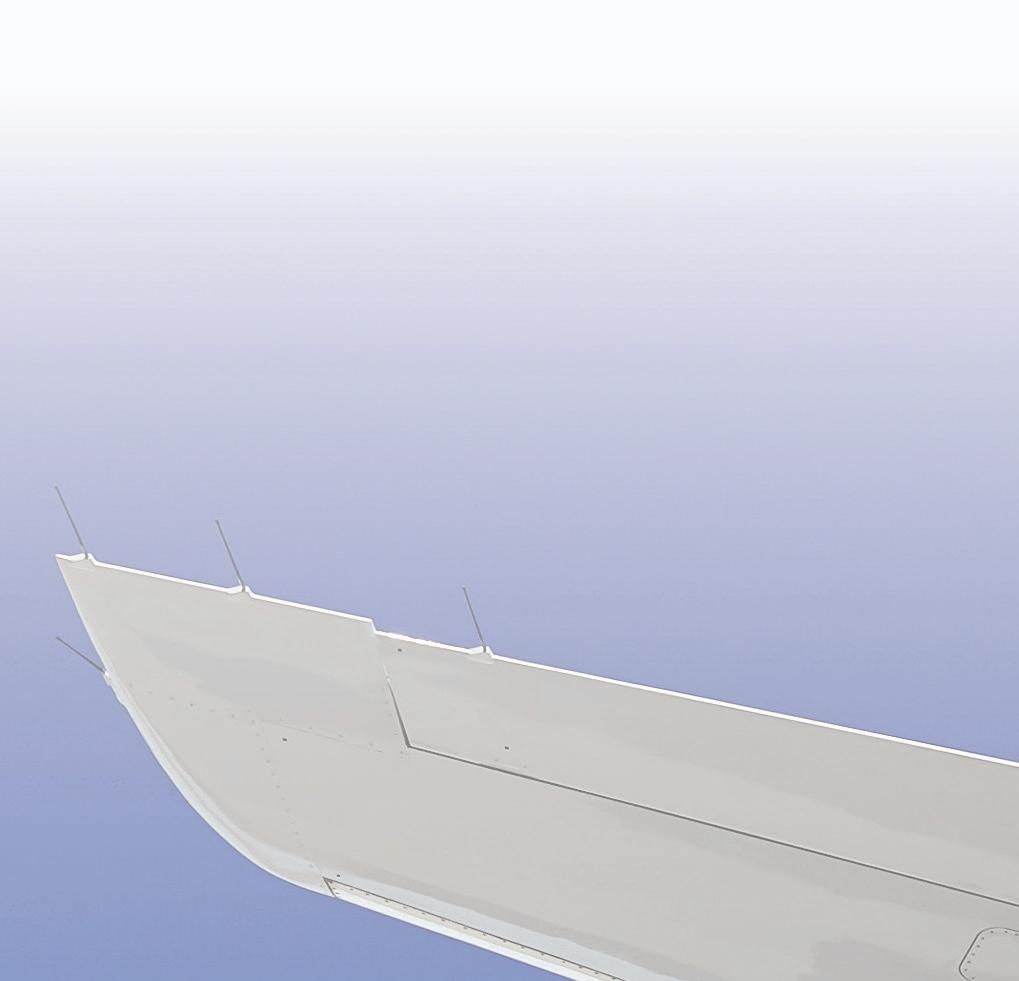








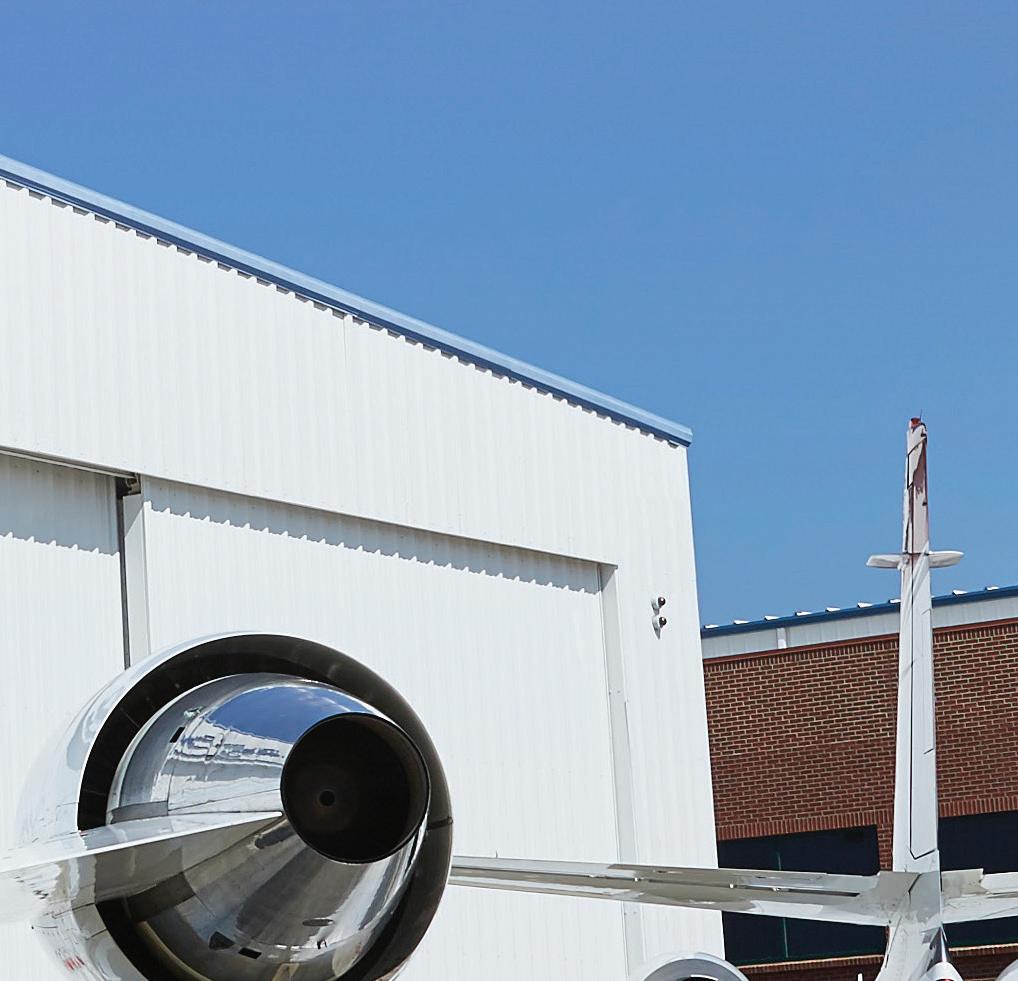
























Townsend Leather celebrated its fiftieth anniversary three years ago. The firm began as a contract finisher to the garment and shoe-making sectors, and this was its focus for the first 20 years. By the late 1980s, the firm had begun producing and marketing its own leathers, marketing direct to a range of customers. These included just about every operation that had a requirement for upholstery leather. This took the firm into providing materials for the aviation industry.
From the outset, the firm has specialised South German bull hides. These are the biggest hides in the world. They are rectangular in shape and pretty uniform in terms of shape, width, and length, with each hide being approximately 60 square feet on average, and about 80 to 100 inches long.
Townsend Leather carries out a broad range of texturing of the leather and can achieve any look or feel that the client might want. In addition to the bull hides the firm provides a wide range of other materials, such as lamb skin or deer skin.


“ We are very selective here at Townsend and we only take the top 15 percent of hides.”
AH: The pandemic seems to be easing off and business aviation is benefitting from the surging demand for flying private. How are things with you?


JE and SE: For the last couple of years, right through the pandemic, our challenge has been keeping up with orders. Sales were not the problem. There is plenty of demand. However, our customers require the very best materials and we had some real difficulties getting the German hides that we need.













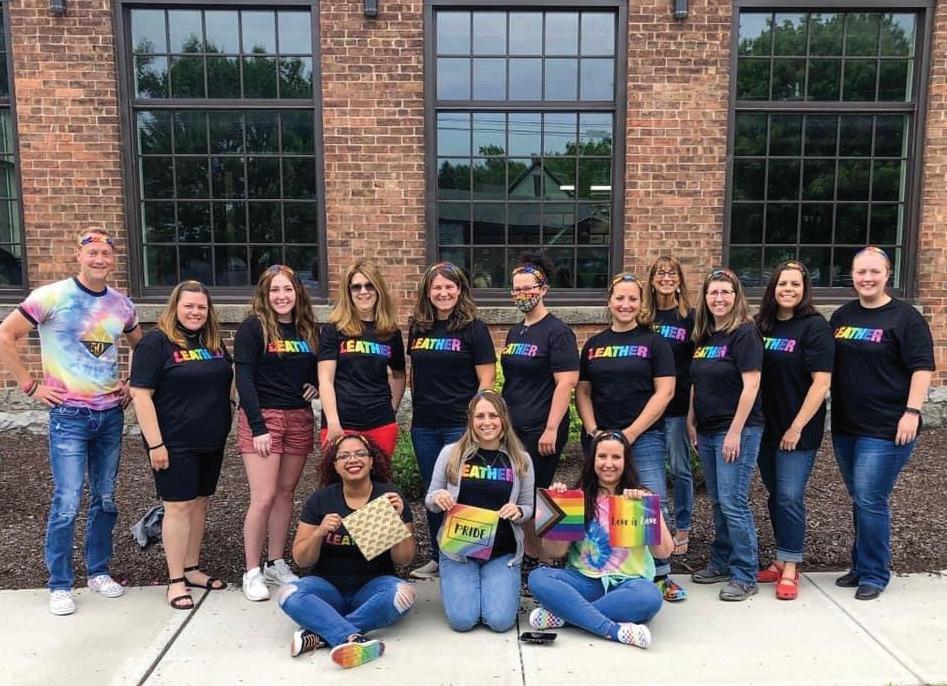
It is a bit of a complicated story. Through COVID and the global supply chain problems including shortage of automotive semiconductors, German auto manufacturing slowed markedly. This caused a big drop in demand for leather. The German auto manufacturers really drive the market for hides. So when they are not working it takes a lot of demand out of the industry and the farmers bring on far fewer bulls. This issue was on top of the demand for meat being down overall (leather is a by-product of the meat industry); throughout the pandemic, people were staying home and not eating out in restaurants).
We are very selective here at Townsend and we only take the top 15 percent of hides. Without the support of the auto manufacturers, the farmers struggled to produce hides of the quality that we require in the quantities that we need. Farmers actually stopped raising new livestock. It takes years to bring a bull to maturity.
Another challenge was that with all the restrictions hides often sat waiting for clearance at clogged ports. However, as soon as we got product through, we processed the hides and moved them on to our customers. We have both Gulfstream and Bombardier as customers and they have a tremendous demand. Cessna has also been very busy.
However, now things are easing again and getting back to normal. We’re benefitting from that and we are catching up


fast with our order backlog. Plus, we are taking a lot of new orders. It feels great and is such a turnaround to have lead times again, instead of working from behind.
AH: I believe you have a major new product you are going to be introducing at NBAA?




JE & SE: Absolutely. We are introducing a new leather for aviation seating. A major customer has already given the product the thumbs up. We have a very natural, subtlelooking grain that we introduce into the leather and it is a great alternative to our Classic leather which is natural grain cowhide and the hardest to obtain large quantities of the right selection of hide to produce. We’re calling it the Majestic Cowhide. Another bonus is the cutting yield will be superior to our natural grain cowhide.

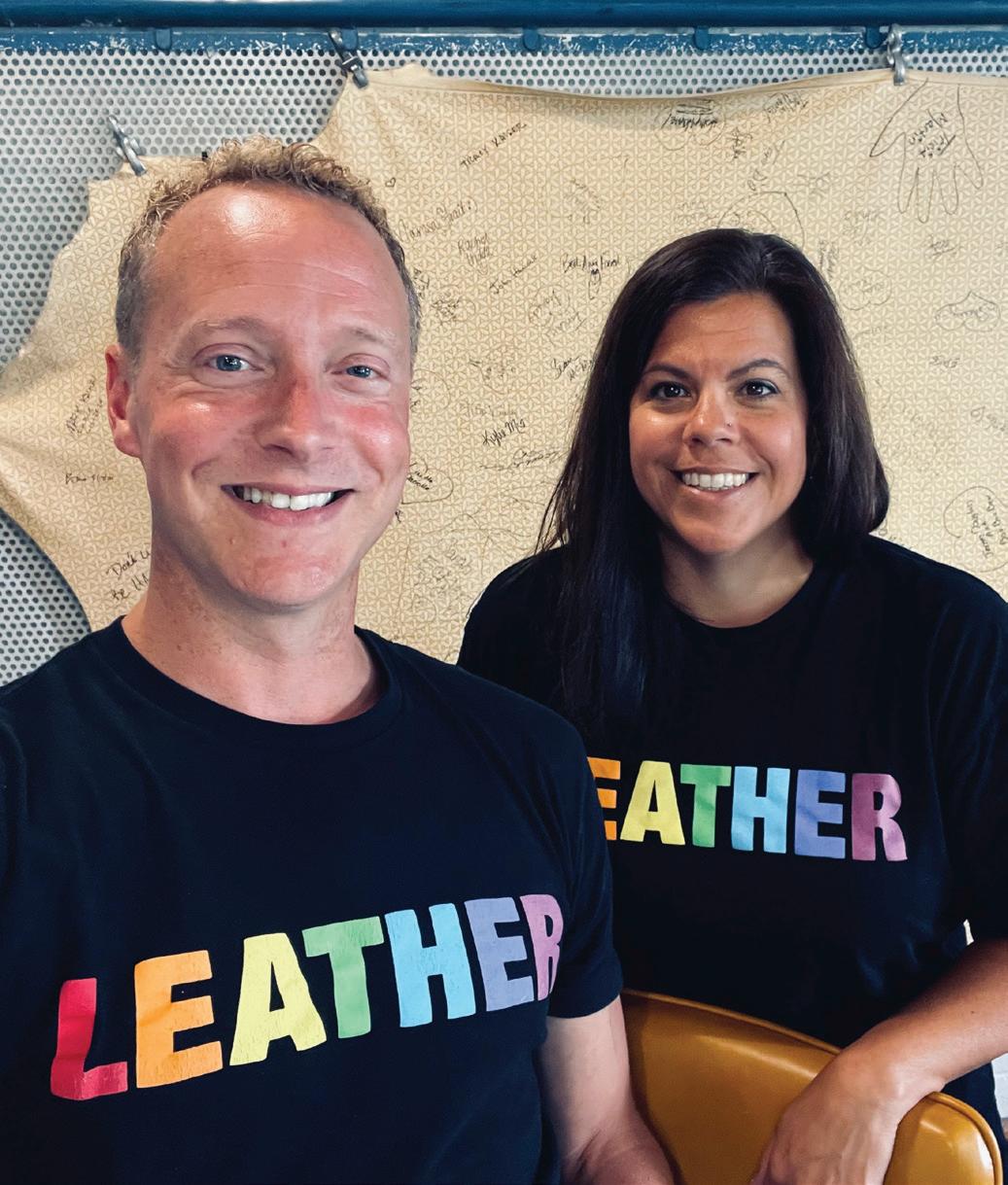
The natural look, without any alteration or embossing, is the most difficult part of our business to find hides for in the quantities and timelines our customers are demanding right now. As you will appreciate, hides are a natural product and there is always some degree of variation from hide to hide as far as grain and texture are concerned. With our applied natural look we can achieve a far greater degree of conformity from one hide to the next. That goes down extremely well with customers since it still looks like the natural product that it is, but you don’t get the wide variations that can cause difficulties for customers. The flaws are camouflaged and the hide is very easy for upholstery shops to work with.


“ We are introducing a new leather for aviation seating. A major customer has already given the product the thumbs up.”





























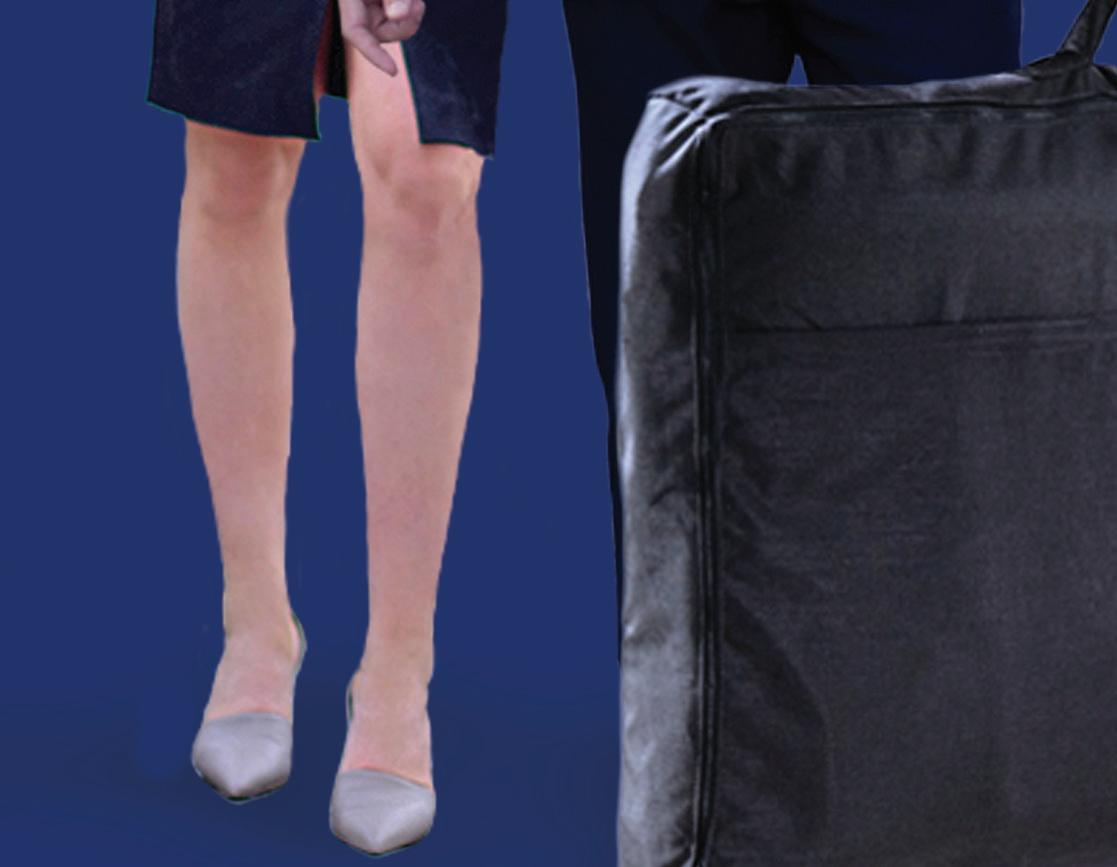


















We have long had a wide range of textures that we introduce into the hides. That goes back decades. However, the texture we introduce into this new product enables us to upgrade the hides. It leaves them looking very natural and not overly embossed.


This new product will be very important for our customers and their designers. The OEMs and the refurbishment and completions sectors are getting busier now. We think it will enable us to use 50 percent more of the hides that we currently send out to hospitality and residential customers, giving us a considerable increase in the number of hides we can make available to business aviation customers.
AH: Your employment levels took a bit of a hit through the pandemic. Are you back to full strength now?
JE and SE: We are always looking for more talent. That is just a given. During COVID, hotels were struggling and few were being refurbished, which meant that our nonaviation business was down. But that is now coming back nicely. We have the right number of employees for our requirements today, but that said, probably 40 percent of them are still in training and have been with us for under a year. Their main contributions still lie ahead of us. So, we are always looking to hire good people who fit well into our company culture.
AH: Are you seeing a surge in costs as inflation seems to be roaring ahead across the globe?


JE and SE: We are definitely seeing costs surging, particularly with respect to shipping costs. Anything to do with production is going up in price all the time. We are constantly having to talk to our customers now about a price increase, which will probably come in September. We understand that a lot of our competitors are doing the same and are facing the same cost pressures.
Customers understand that this is just the way things are now. It makes it difficult for all of us, as far as planning is concerned. Our suppliers do not hold their prices steady these days for more than a month. However, everyone is experiencing this and we all have to work with it. We are working very hard to make sure our customers continue to see the value of our hides and the care we put into every order to ensure top quality. |BAM

“ We are always looking to hire good people who fit well into our company culture.”




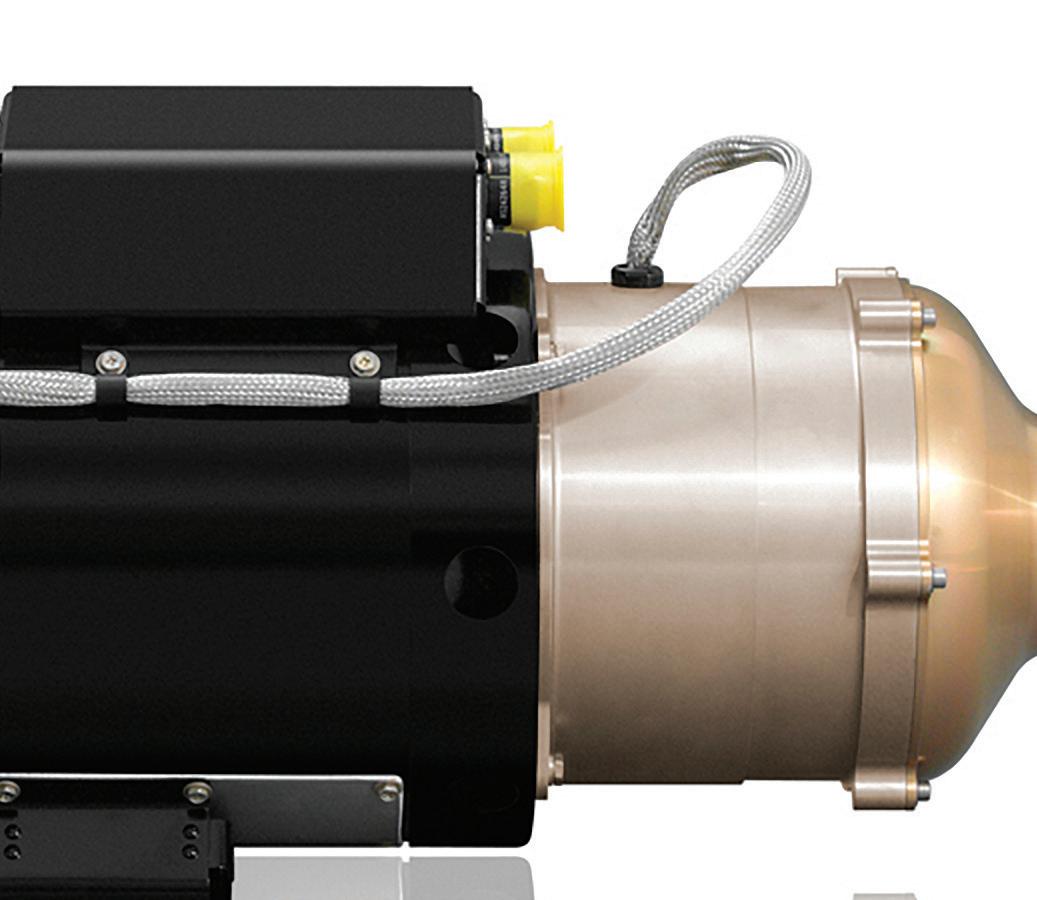
AH: Peter, you are in a very niche part of the market, providing humidifiers and dehumidifiers to both the commercial markets and the VIP airliner space. How did the company get started in the aviation sector?

PL: The three founders of the company set it up in 1993. All three were engineers. Their first names were Christer, Tom, and Thomas, which gave the company its name: CTT Systems.
These opportunities often begin with a real problem that engineers are asked to solve. In this case, a small airliner had some corrosion caused by condensation from water vapour found between the inner cabin wall of the airliner and the outer skin. The three were able to clear up the excess water using a ground-based dehumidifier but, of course, the problem quickly returned when the aircraft went back into service.
This condensation problem comes about when the aircraft is full of passengers. They all breathe out water vapour to some degree as they exhale, and gradually the humidity in the cabin rises. When the warm, humid air works its way to the inner metal skin of the aircraft, which is probably experiencing temperatures of minus 52 Centigrade on the outer skin, the water vapour turns to frost. This melts when

the aircraft is back on the ground and puddles form in a very inaccessible area, leading to corrosion.
Water is also heavy, as anyone who has lifted a bucket of water will know. So, the additional weight that accumulates will have a negative impact on the aircraft’s range and its fuel burn.
So, this led to the idea of building dehumidifiers for airliners that would be installed and would dry excess water vapour from the air during the flight

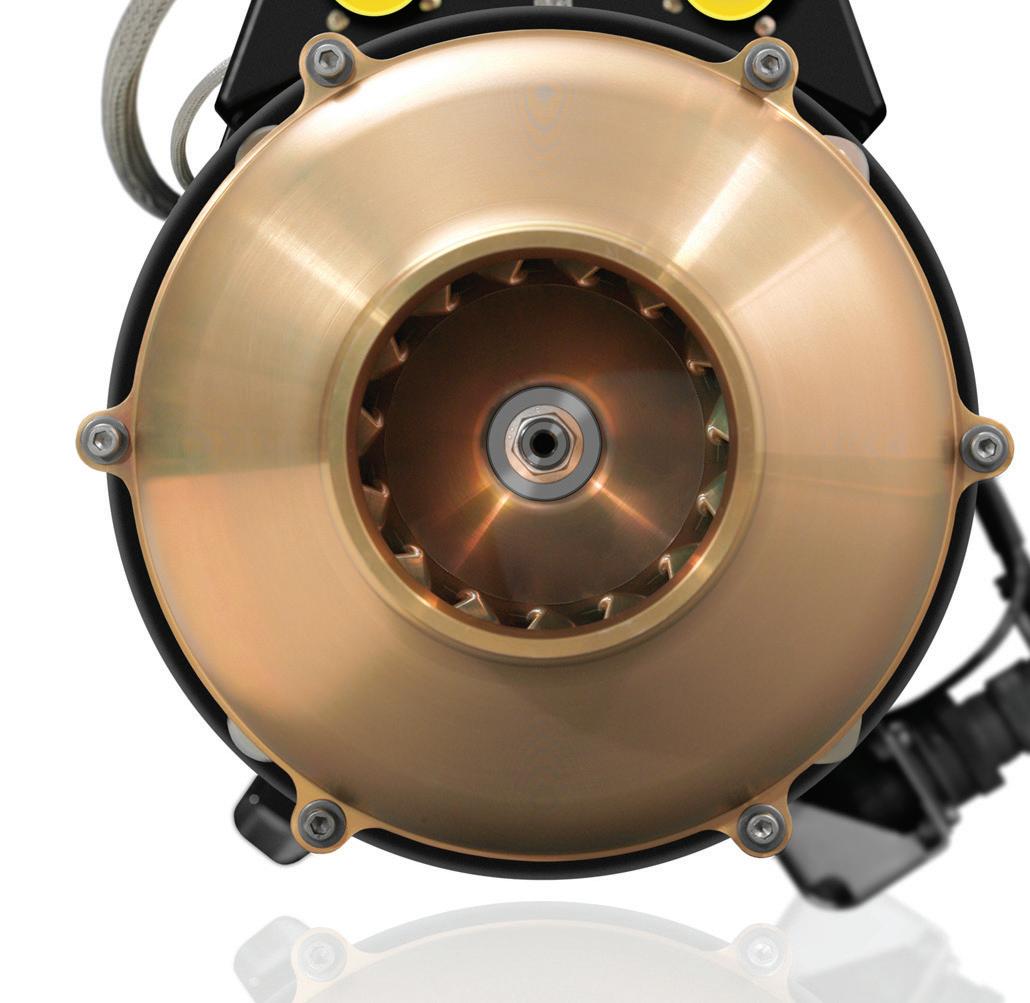
However, the founders of CTT quickly realised that exactly the opposite problem occurs when you have very few passengers in an aircraft, as happens on some VVIP flights and on business aviation aircraft, where the average passenger number is between two and three passengers. In this situation, very little water vapour is being exhaled and the air in the aircraft gets progressively dryer through the flight. In fact, by the time the passengers are two hours into the flight, the air in the cabin will be even dryer than in the desert.
This can be very bad indeed for passengers. The mucous membranes in the nose and chest are the body’s first line of defence against cold germs and other viruses. When these


“
This condensation problem comes about when the aircraft is full of passengers. They all breathe out water vapour to some degree as they exhale, and gradually the humidity in the cabin rises.”
and regional jets, since there is enough space under the floor in these big aircraft. However, we have been working very hard on our equipment to get them down to a format where they will fit into a mid-size business jet.”

membranes dry out, there is nothing to prevent the virus from gaining a grip on the body. The end result is that you catch a cold either on the flight or when you walk through the airport after a flight. It takes time for the mucous membranes to get rehydrated and an individual remains vulnerable for some time after a flight.
Once the humidity in an aircraft cabin drops below 15 percent, humans start to feel increasingly uncomfortable. By the time it is down to 10% you can feel it in your throat and in your eyes and it normally drops to 3-5% in a VVIP aircraft. Food does not taste as good, since there is about a 30 percent reduction in your taste buds. This is particularly ironic when you remember that on many business aviation flights the food is specially prepared by a master chef.

So, as well as building dehumidifiers, CTT began building humidifiers. Initially, our efforts were focused on airliners and regional jets, since there is enough space under the floor in these big aircraft. However, we have been working very hard on our equipment to get them down to a format where they will fit into a mid-size business jet.

AH: How well is that going for you?
PL: We have just carried out a successful retrofit of our humidifiers, in partnership with Flying Colours, into a Global 7500. The owner is delighted with the result and has given us his second Global 7500. That installation is on the go right now and the first is flying already.



So, this is our first big step into the business aviation space.
Our commercial side is also going extremely well. We have a contract with Airbus to retrofit our humidifiers and dehumidifiers into the ACJ TwoTwenty. This is a new business jet launched by Airbus in October 2020, with the first aircraft set for delivery in 2023.
Previously, we installed our equipment on the Airbus 319 and 320. Since then, we have enhanced our design to be much more efficient and to be simpler to install. We also managed to reduce the weight, but the big improvement concerns a more even distribution of the re-humidified air in the aircraft. That improvement was the key to Airbus granting us the contract to do the ACJ TwoTwenty series.
Obviously, we are hoping to convince Bombardier, Gulfstream and Dassault to take our equipment as well. The Dassault 10x is much the same size as the Global 7500, as is the Gulfstream G700.
AH: What about jets the size of the Gulfstream 650?
PL: Shrinking the form factor to fit in the very limited underfloor space of a G650 is very challenging. We are testing it in our lab to see if we can shrink the humidifier further, and still achieve the desired consistency and spread of re-humidified air inside the aircraft. This is quite a complicated project and might take maybe one or two years for us to get there.
However, what is very pleasing is that concerns about the discomfort and dangers of overly-dry air in business aviation jet cabins are starting to gain traction in the sector. Getting the right balance of humidity is very important, as much so as getting the lighting and the temperature right in the jet. All these things have to work together to create a great passenger experience. We are very optimistic that things are looking pretty good for us going forward. |BAM
















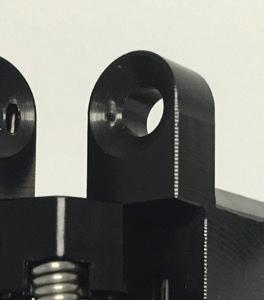

Gary Bosstick, President, JetBed, explains to Anthony Harrington what drove him to invent a supercomfortable bed for business jets of all sizes

From the dawn of business jet flights, sleeping comfortably on even the largest corporate aircraft was seriously difficult to achieve. The industry, of course, has seats that turn into beds, called berthing seats. However, when the seats are finally made-up into beds, the resulting sleep accommodation is generally narrow and rather uncomfortable.


Seats are contoured and designed to be used as seats. They curve in all the wrong places for a bed and can’t be turned into the flat surface that passengers are accustomed to from their beds at home. If you sleep lying on your side, all the underlying seat shapes make finding a comfortable sleeping position virtually impossible. And studies show over 90% of people sleep on their sides. This creates a serious problem for the average VIP passenger.


AH: Gary, let’s go back to the beginning. What was the inspiration for the Jet-bed?
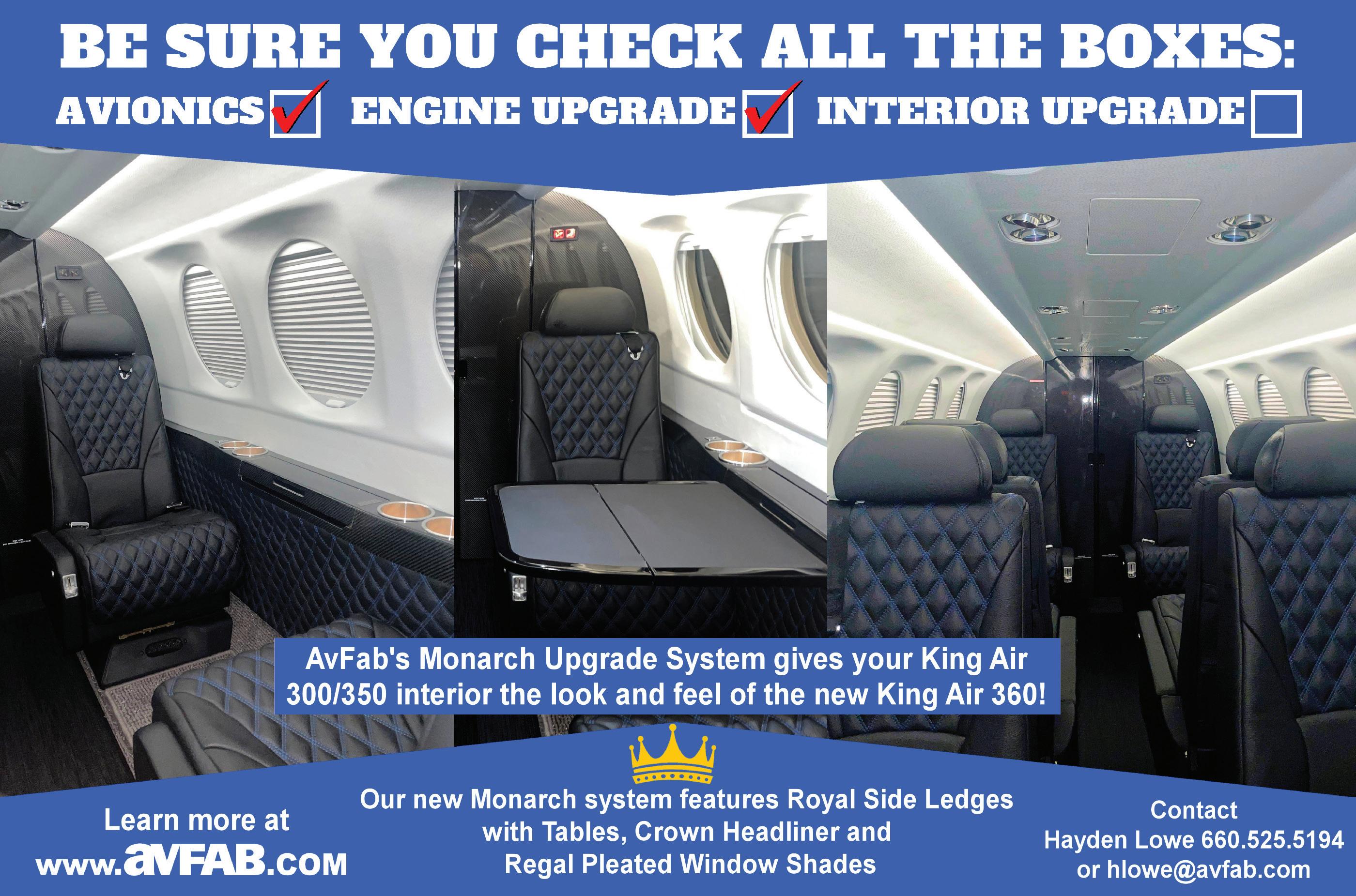
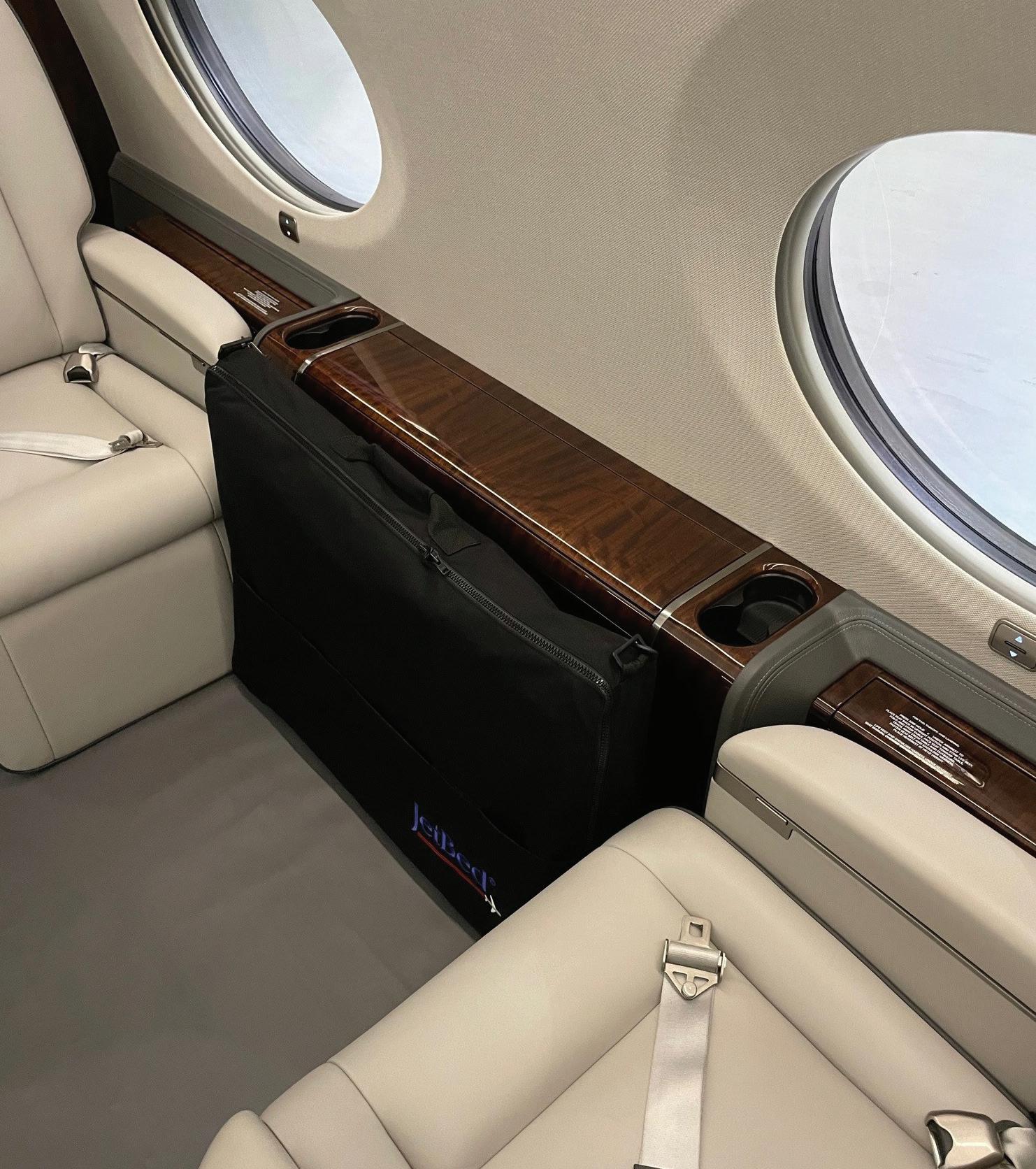
GB: I am a lifelong pilot. I am airline transport rated although I’ve never worked for a commercial airline. However, I really like to fly. My wife sits in the cabin since she’s not that keen on flying, but she really enjoys her sleep.
Of course, the Cessna I was flying at the time - this was early 2006 - had no berthing seats, so sleeping was really uncomfortable. I decided I was going to do something to make sleeping on the aircraft more comfortable for her. So, I invented the first prototype of the jet-bed for my wife.
Fortunately, I patented it, since a gentleman I had known for years, who was a successful industrialist, had drummed into me the importance of patenting any discovery should I
“ Fortunately, I patented it, since a gentleman I had known for years, who was a successful industrialist, had drummed into me the importance of patenting any discovery should I ever happen to originate something.”
“ It is an entirely new product that is only a third of the size, when packed, of our current generation of jet-beds.”


AH: I imagine you are getting a lot of word-of-mouth recommendations if your jet-bed is that comfortable?
GB: This is exactly how our business has developed so strongly, from word-of-mouth recommendations. We’re now on the new Bombardier 7500. We designed a new version of the jet-bed specifically for the 7500 and now we have patents on that too.
ever happen to originate something. Now, whenever I invent anything, I take out a patent straight away.
Anyway, I had been buying jets from Cessna for a while, so I took my idea to them, having talked them into giving me a few minutes of their time. The guy I spoke to looked at the drawings and asked if I would mind if he brought in some other people to look at them. They all huddled around, then went to get more guys, who got more guys. We ended up with a room full of people. The Chairman of Cessna at the time told me that it was a really cool idea and they would be happy to sell it as an aftermarket product.
The really good thing about the jet-bed is that the FAA and EASA classify it as a carry-on item, so it does not need an STC.
My next step was to go to that year’s NBAA Conference and Exhibition to show off the product. I virtually dragged a VP of a major OEM to our stand and showed him the bed. He lay down on it and said, “Hey, this is really comfortable!”
One of our biggest selling points, is that owners of jet aircraft could enjoy a very comfortable sleep instead of an uncomfortable sleep when they use our beds. So we were able to get major OEMs selling our jet-beds as after-sales products as well.


AH: Let’s just revisit the timeline since that 2006 prototype for your Cessna, just to get things clear.
GB: I first began designing the prototype in 2005. It took me around a year to work through a number of different iterations of the design. I have to add that I first had the idea of doing a carry-on bed around three years earlier than that, but I kind of procrastinated for a long while. Then, one day I said to myself, if I don’t get off my butt and design this, I’ll end up buying it from someone else!
So, we looked around for a contract manufacturer that could take it on. We have our own factory now, incidentally. But back then I told them what I wanted and asked them if they thought they could make it. Can we have a meeting to discuss it? They said when? I said now. I have an aeroplane, there is an airport in Corona California, near you. I can be there in an hour and a half.
We met in a restaurant nearby. I wrote a non-disclosure agreement on the back of a napkin which they signed. I asked them how much it would be to make the prototype. They said they’d need to go back and do some calculations to work it out. I said I’ll write you out a $10,000 cheque right now if you go back and start work immediately. So, we had a deal. They built the prototype and the rest is history.










“
AH: I believe you are just launching a new version of your jet-bed?

GB: Indeed we are. We have just delivered the first two of these recently to a major entertainment company that has a number of jets. They said it was going to be a total game changer for them. Basically, it is an entirely new product that is only a third of the size, when packed, of our current generation of jet-beds. This means that you can store three of them in the space that used to be taken up by just one of our beds. I can fit three of them in the boot of my car, that is how compact we have managed to get the design.
Again, the key point about our jet-beds is that they are not connected to the aircraft. There are products for sleeping on aircraft that require you to attach them to the floor rails or seats. However, if a product is attached you can run foul of the requirement for an STC.



Our jet-beds have no physical attachment to the aircraft at all. Nevertheless, they are very stable and are purpose designed for each jet type, with very fine tolerances, so that they fit perfectly and provide a very comfortable, and perfectly flat bed for the passenger.



AH: So, would you say that the future is looking bright for your company?
GB: Absolutely! We purpose-built our factory in 2019 and demand is really strong and getting stronger. We’ve had to implement a lot of new tooling for our new compact jet-bed but it has been a real game changer. |BAM
The key point about our jet-beds is that they are not connected to the aircraft. There are products for sleeping on aircraft that require you to attach them to the floor rails or seats. However, if a product is attached you can run foul of the requirement for an STC.”
Saint-Exupéry Airport (LFLL/LYS) based, SPACE Executive Handling specialty

flights.
Lyon Saint-Exupéry Airport (LFLL/LYS) based, SPACE Executive Handling specialty includes: corporate, VIP, government and ambulance flights.


Lyon Saint-Exupéry Airport (LFLL/LYS) based,
GROUND HANDLING SERVICES :
team


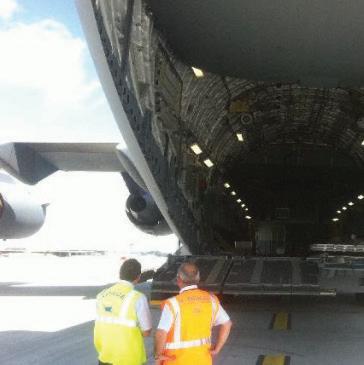
easier,
more
Saint-Exupéry Airport
based,
Handling


Analar Corporation was founded over 40 years ago, having been incorporated back in 1978. Over that time the company has seen some huge changes. It began as the corporate flight department for a major Fortune 500 company, Church & Dwight, a major household goods company.
Probably the product they are best known for in the US is their Arm & Hammer baking soda. Analar was set up as the group’s corporate flight department in 1978.
Mike Renz started out his career as a maintenance technician and then obtained his commercial pilot’s license while working for Ramapo Helicopters, one of the largest helicopter maintenance shops in the Northeast US.
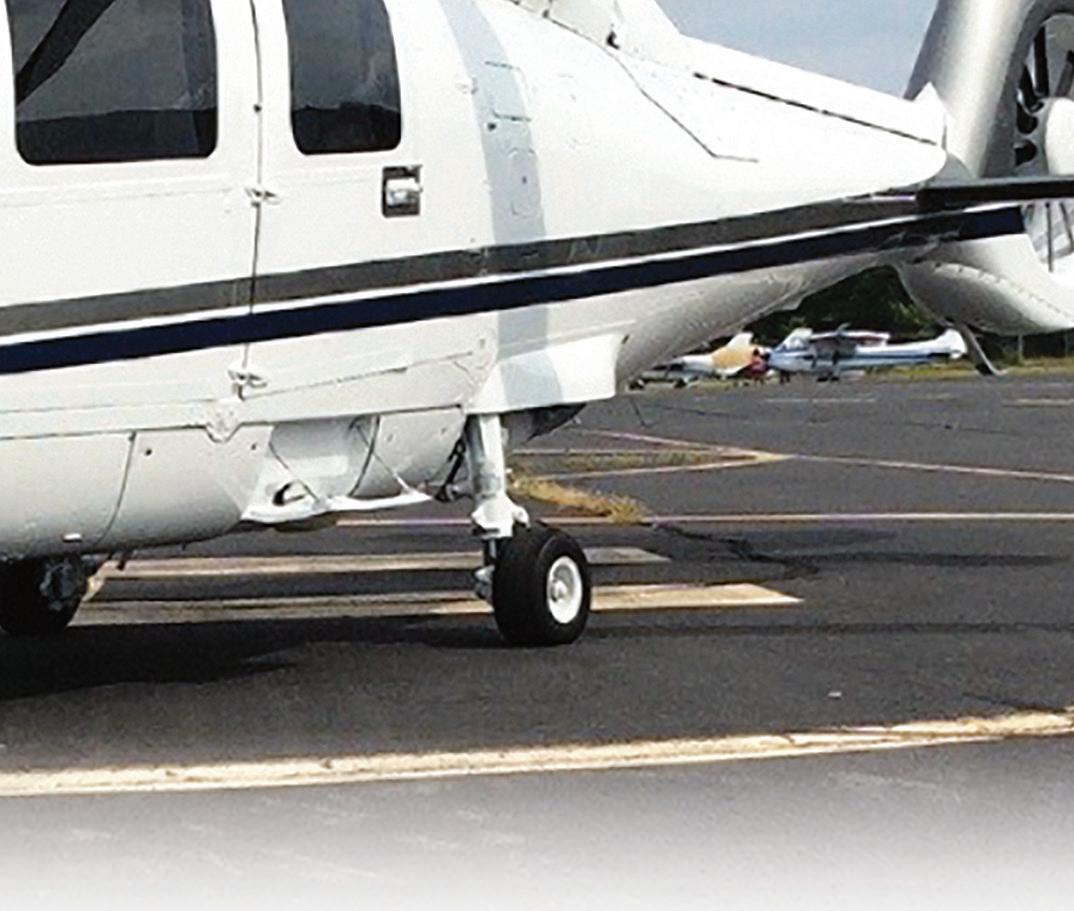
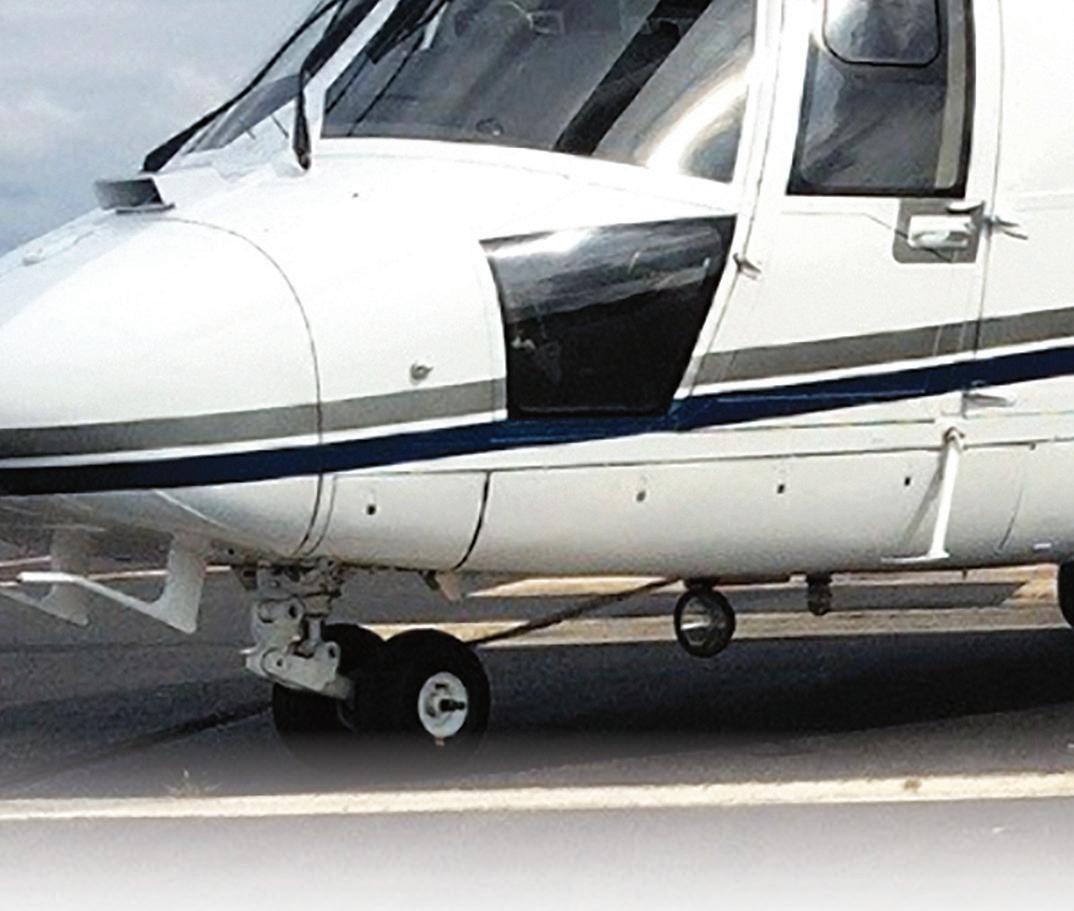


Coincidentally, the company also maintained Arm & Hammer helicopters, and the client became interested in the fact that Mike Renz was both a skilled helicopter maintenance technician and a pilot. He became director of maintenance
and Helicopter Captain for Arm & Hammer. Shortly after, he qualified as a fixed-wing pilot as well. In 1993 Arm & Hammer decided to slim down its flight department and then two years later it decided to close the flight department completely.
Renz made the company an offer for the Analar part of the business. It had a steady book of charter business, and in 1995 he launched the company. At that stage, Analar already had a reasonable amount of maintenance business. In 2003, Renz decided that the market in the New York area needed a helicopter-only FBO. This was built at Kearny and consisted of an initial 30,000 square feet of hangar space for helicopters.

Phase II saw the addition of more ramp space, plus a 10,000 square-foot office complex and an additional 44,000 square feet of hangar space.
Q: Mike, how is the helicopter FBO doing, and more generally, how is the demand for helicopter services in your area?
MR: The Kearny Heliport is going well, with 100% capacity currently, which is a good sign. The charter business took a hit during COVID but we managed to survive the fallout despite many small businesses closing in the NY area. Analar has always been able to survive these types of obstacles due to its ability to sustain our business from within our own organisation. This is mainly due to our unique ability to maintain and manage our own helicopters. Plus, we have a large book of business from outside operators and other aircraft owners.
Q: When we last spoke you had around 35 helicopters based at your FBO, with 8 of these being Analar. Have you added to those numbers and how is the charter/ sight-seeing market doing?
MR: That’s still pretty accurate, we are looking to add a couple more aircraft into the FBO within the next 12 months.

Q: Let’s talk a bit about the advantages of hot fuelling and why it is that Analar has the right to hot-fuel helicopters?
MR: The advantage of HOT Refuelling is that we don’t incur any extra cycles (Starts) on the helicopter, which prolongs the longevity of the engines. Starting and stopping all the time creates a lot of wear and tear on the engines.
HOT Refuelling is also attractive to the customer or operator because we can do a rapid turn on fuelling and they can continue within minutes to their next mission. There are no restrictions for HOT Refuelling as long as certain requirements are met, including, but not limited to, Engines at idle, no smoking, no passengers on board while fuelling is in progress, and aircraft is grounded properly.
Q: What can you tell us about facilities for crews and how important those facilities are?
MR: We have crew cars available for crews so they can go locally to get food or run errands, we have a crew pilot lounge with TV, Vending machines, coffee and tea, and snacks. Our facility is also equipped with showers and bathrooms, plus free Wifi for internet access.

Q: How far along are you to extending your certification to a full jet capability charter certification? What would that bring you?
MR: Analar is in the process of extending its Part 135 operations to include fixed-wing. This has been in the works for several months and hopefully, we will be able to complete this in short order. The addition of fixed-wing will be quite huge for us and will complement the helicopter side of things. We currently broker out a lot of fixed-wing business and having that capability in-house will make a big difference to us.
Q: What can you tell us about Analar’s maintenance capabilities?


MR: Analar has had a maintenance department for over 30 years and provides maintenance services to not only our own managed fleet but also to outside customers and clients.



Q: What is your view of the current state of the bizav sector? Are you optimistic about the year ahead?
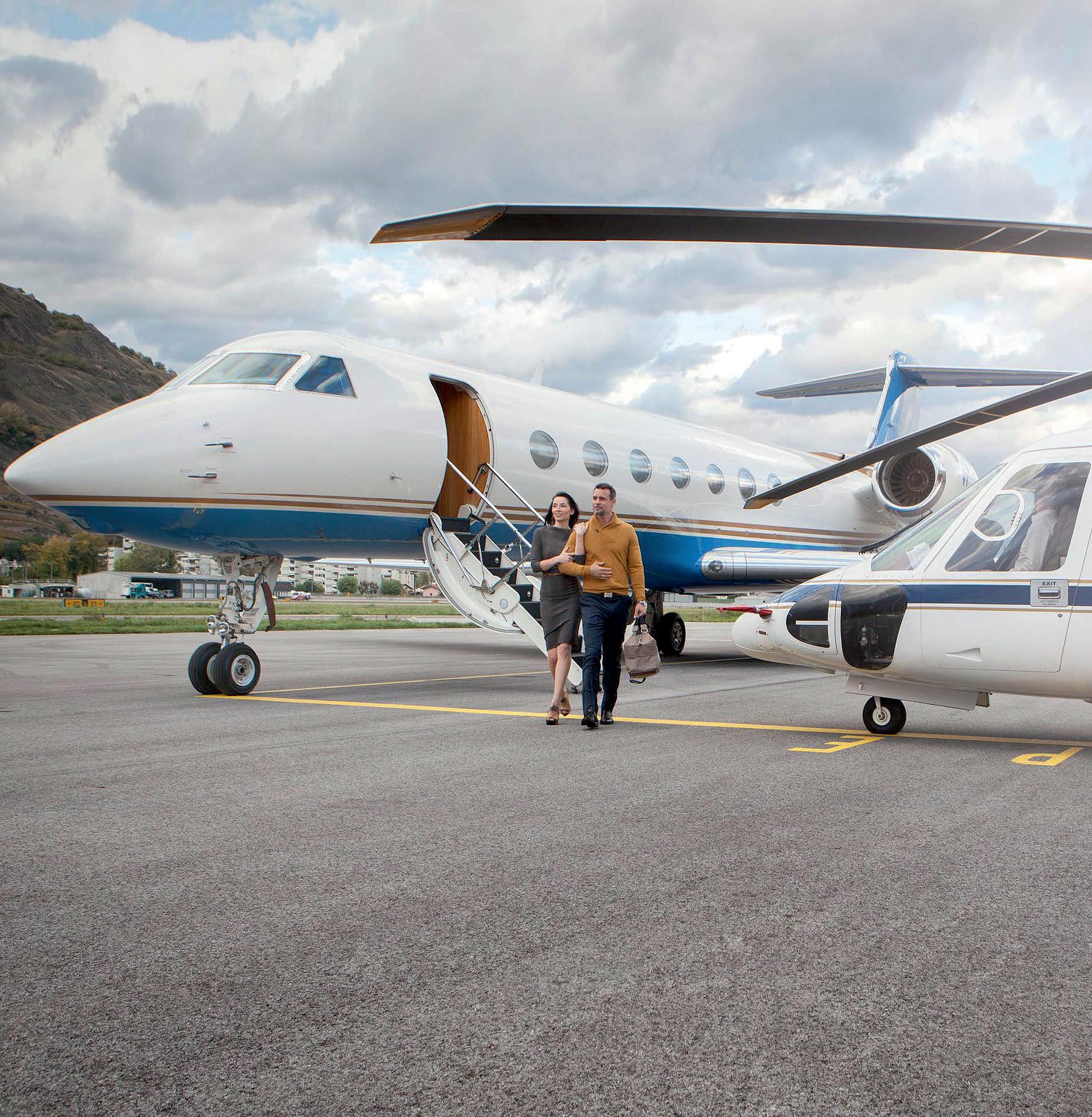
MR: We are somewhat optimistic for the future given the fact that we are looking to expand our horizons with additional helicopters and the coming fixed-wing business. We always look forward each year to expanding and growing our business. |BAM
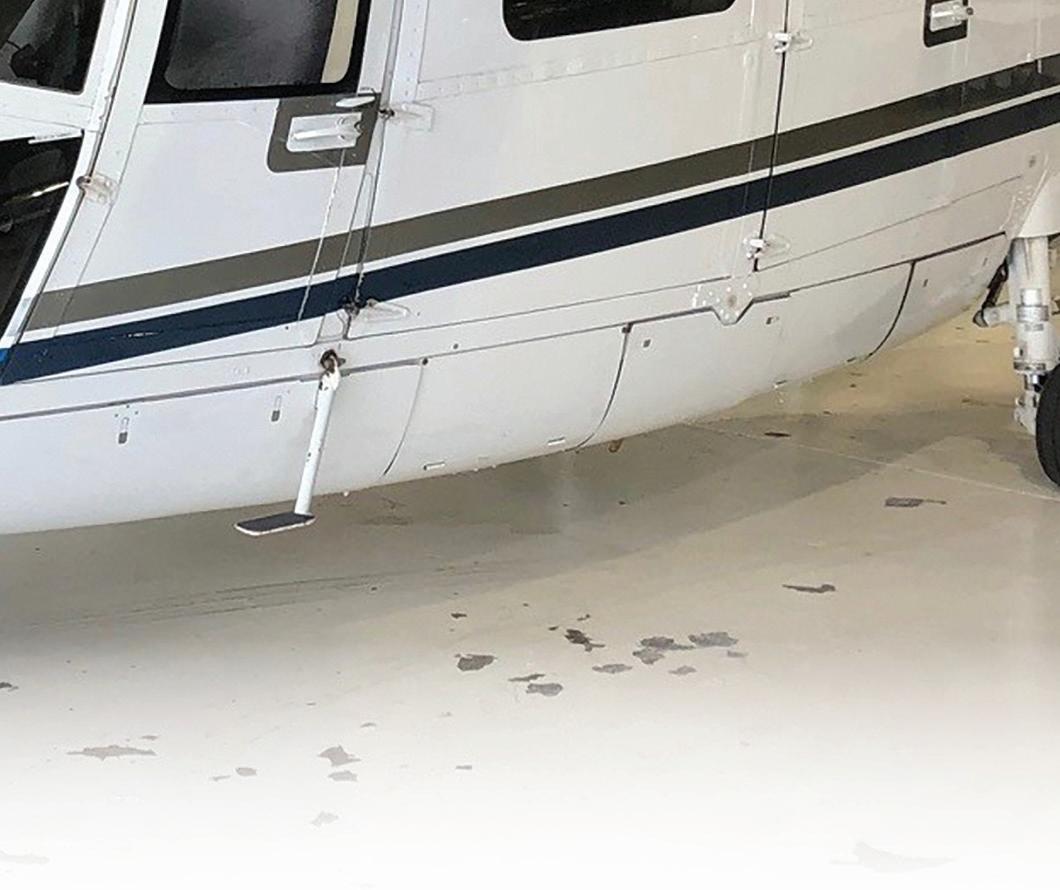


“Analar has had a maintenance department for over 30 years and provides maintenance services to not only our own managed fleet but also to outside customers and clients.”
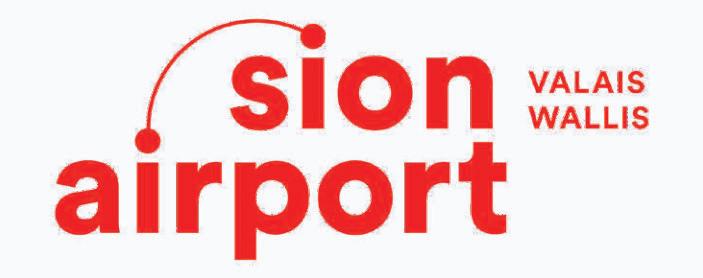

Based at Addis Ababa Bole International Airport, Krimson Aviation offers a full spectrum of aviation support services. Dawit Lemma, Founder and CEO is committed to delivering service excellence combined with care and discretion which has led to the company’s extraordinary success story so far.

JS: Where is Krimson now compared to a year ago?
DL: Krimson has been through a period of dramatic growth in the last twelve months. We’ve moved office, expanded the team and expanded our business into 45 airports in 24 African countries.
In 2021 we handled 1,143 flight-related operations and 274 ground-related requirements, in what was our best year yet. We are now the largest African flight support company in terms of geographic footprint and the number of airports served, for business aviation. Our growth certainly indicates customer confidence in the Krimson team, and in business aviation in East Africa and beyond.
Our service portfolio has grown too. As more international businesses explore commercial opportunities in Africa, the demands on our services have grown. In addition to ground support, trip planning, concierge, and medevac support, we are now providing consulting services to support best
practice flight operations. This service is being optimised by existing African stakeholders seeking to generate competitive advantages as well as new operators looking for partners on the ground in Africa.
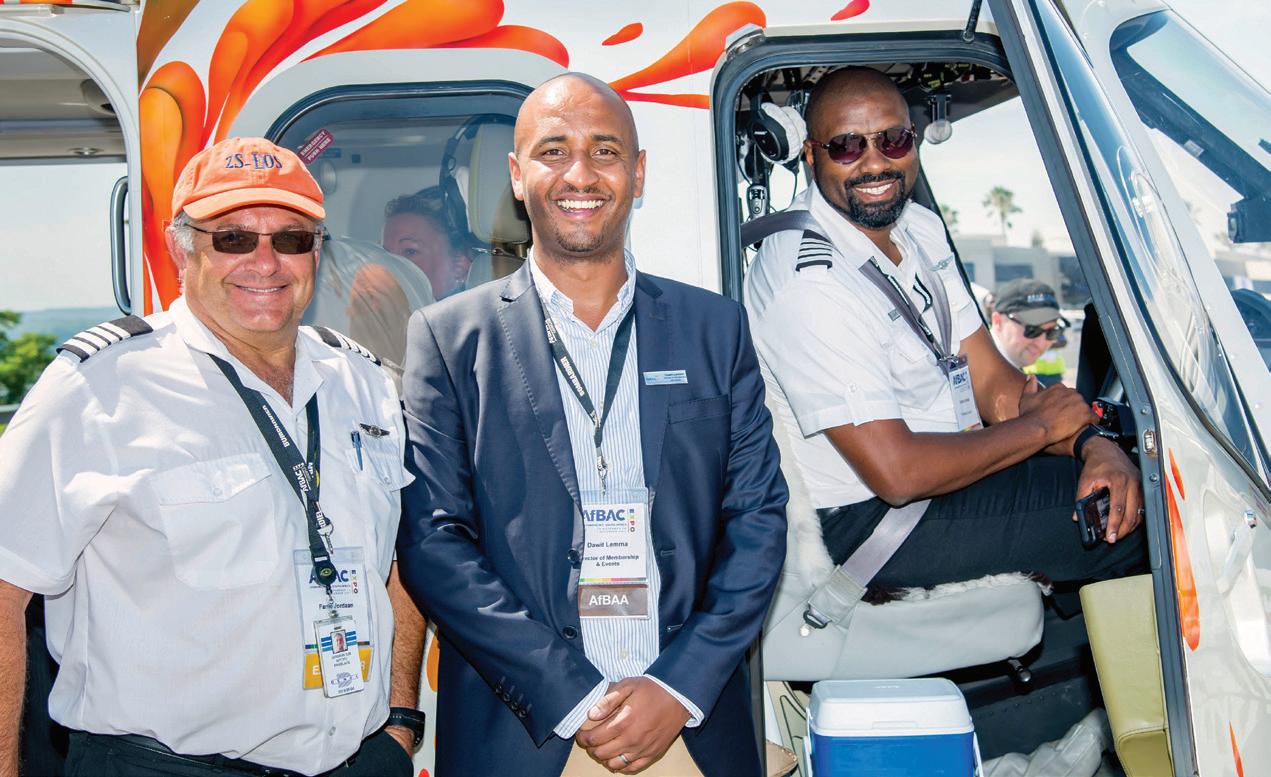
JS: What plans does Krimson have in Africa?
DL: Following the increased demand for business aviation, Krimson is looking to extend its physical presence into at least ten countries outside of Ethiopia by developing African FBO and MRO services. Familiar business aviation destinations including Nigeria, Kenya, Egypt and South Africa are in our sights, and we’re exploring possibilities in evolving business aviation nations such as Tanzania, Uganda, Rwanda, Senegal and Ghana.
We believe Krimson has a unique proposition in that our services are local, but our perspective is international, and this experience offers valuable support for operators seeking international standards at ground level. That’s been our platform for success in Ethiopia and we now plan to take this philosophy to other countries in Africa.
An increasing number of financiers are discovering the value of business aviation and understanding how it drives economies. They are intrigued by the possibilities of investing in the sector so it’s a good time to expand.
JS: Are you expanding outside of Africa?
DL: Yes! We are firmly planting a footprint in the USA and South America. We have already recruited for senior levels, with the posts of President, Chief Development Officer, Chief People & Strategy Officer, and Chief Operating Officer positions filled. We are currently establishing an Advisory Board with members from all around the world. The Board represents multiple sectors, including finance, development, aerospace, legal, and international trade.

Visit

Our goal is to evolve our business in a very particular way that focuses on diversity and community engagement, CARE (Consider All Responsibilities Everywhere), and future flight, while offering legacy FBO and MRO services. We will be bringing a wealth of added value to our company development that we hope will attract new blood to the industry and build a future aerospace workforce too.
JS: What is the state of business aviation in Africa right now?

DL: We are seeing significant growth all over the African continent, not just in the traditionally high-activity locations. The progress and development of smaller pockets of activity is now spreading across the entire landmass.
One element playing a key role in the sector’s advance is the change in government perception of and interaction with the industry. At one point every country had diverse
regulations and standards, making travel within the continent a logistical nightmare. Although it can still be a challenge, I am seeing governments beginning to understand the value our sector delivers and Single Skies conversations are becoming a reality.
The growth of the economy is now transcending politics in most countries, and we can come together to find common solutions to accelerate growth for everyone.
The investment in aviation infrastructure is evidence of this new way of thinking. We are beginning to see investment in new FBOs and airports. In addition, local FBOs are aiming to work using internationally recognized standards. Managing customer expectations is crucial to our continued success and where we can establish international standards, this will only create strong foundations for future growth by generating confidence in local capabilities.
JS: How are you contributing to African Business Aviation beyond commercial activity?






DL: We are always focused on offering our customers and our community more. For clients, that means developing our portfolio of services so that even when their needs change, their service provider can remain the same. For our community, we are devoted to raising the profile of aviation within our continent and to being an influential voice for aviation and Africa.
I make it a point to participate in panels and industry events to share our story with others in the industry to demonstrate how persistence and positivity can lead to even more success. In developing markets, you are helping develop the industry in the region, while simultaneously developing a local

homegrown workforce that is likely to stay within the region and push the next generation of aviators forward.
Krimson is also a European Business Aviation Association Ambassador. The initiative sees industry leaders join dedicated workshops and forums to address the greatest challenges and opportunities for business aviation in Europe. Our experience managing flight movements between, and within, the two continents helps to define best practices and effective flight management.
BAM




I make it a point to participate in panels and industry events to share our story with others in the industry to demonstrate how persistence and positivity can lead to even more success.”





































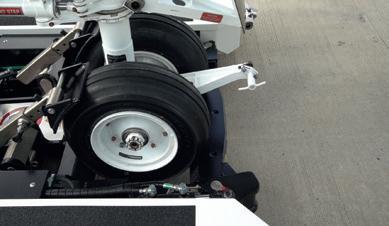



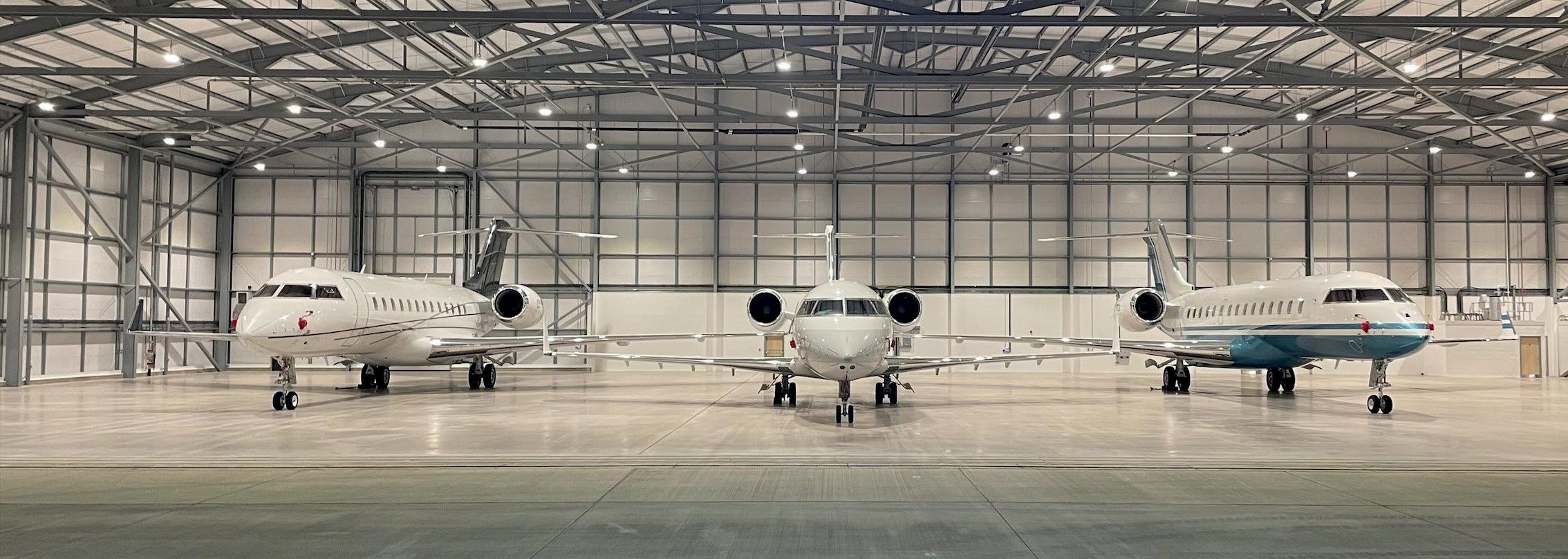










AERISTO’s in house creative studio focuses on providing clients with design-oriented solutions and enhancements. Aeristo’s design team is involved through the entire design process, implementing optimized materials, colors and details, adding both functional and emotional value to all designs.



































